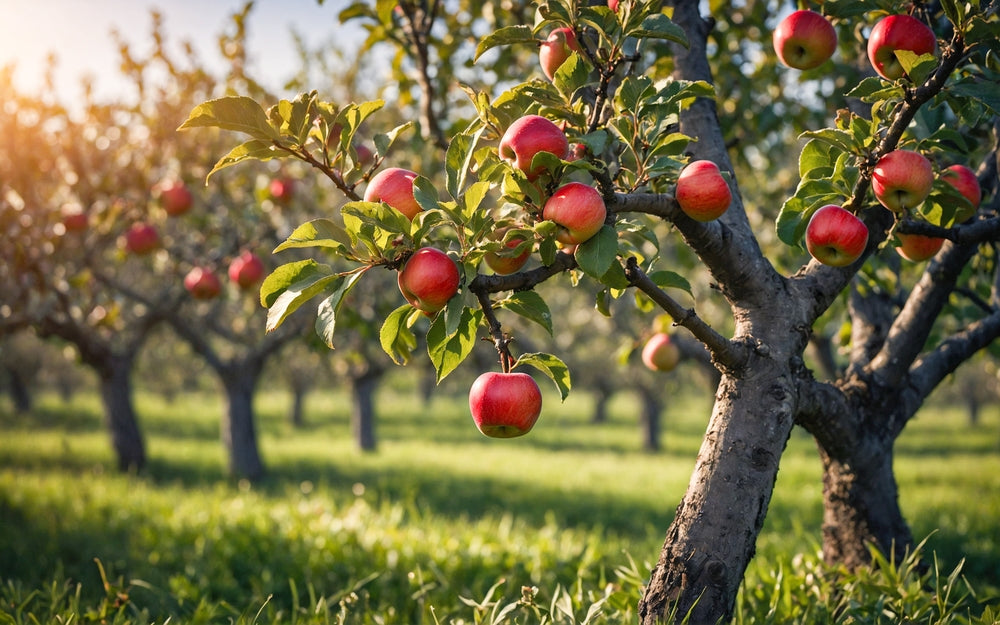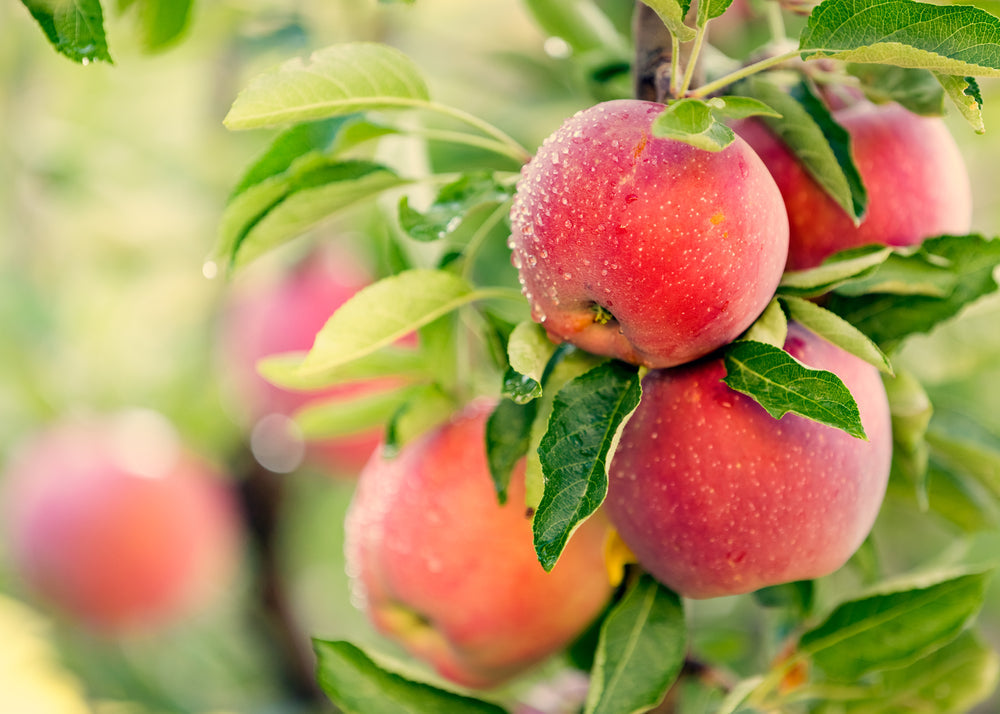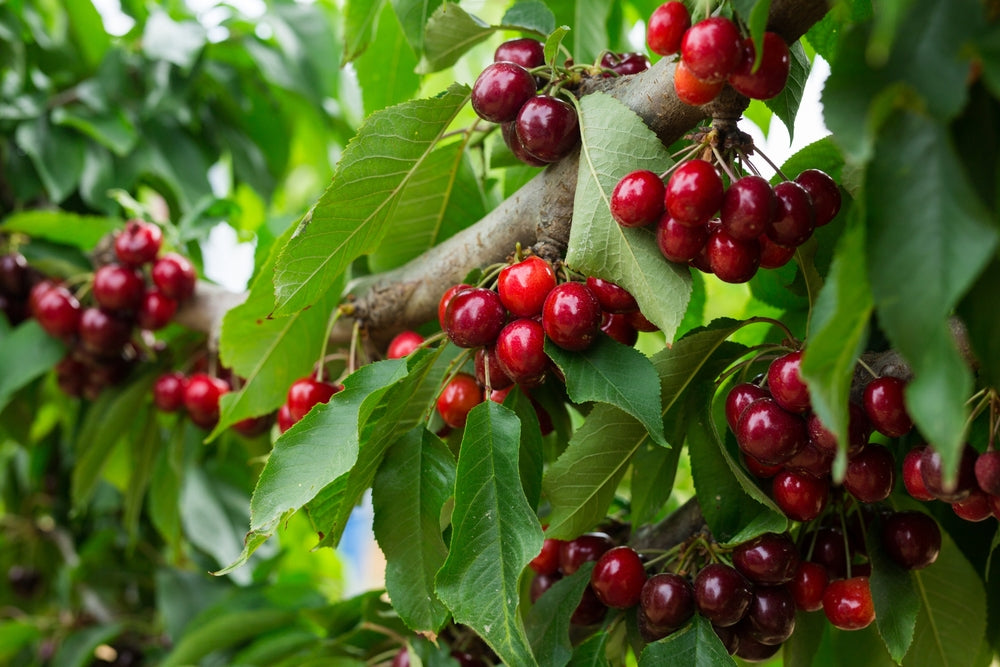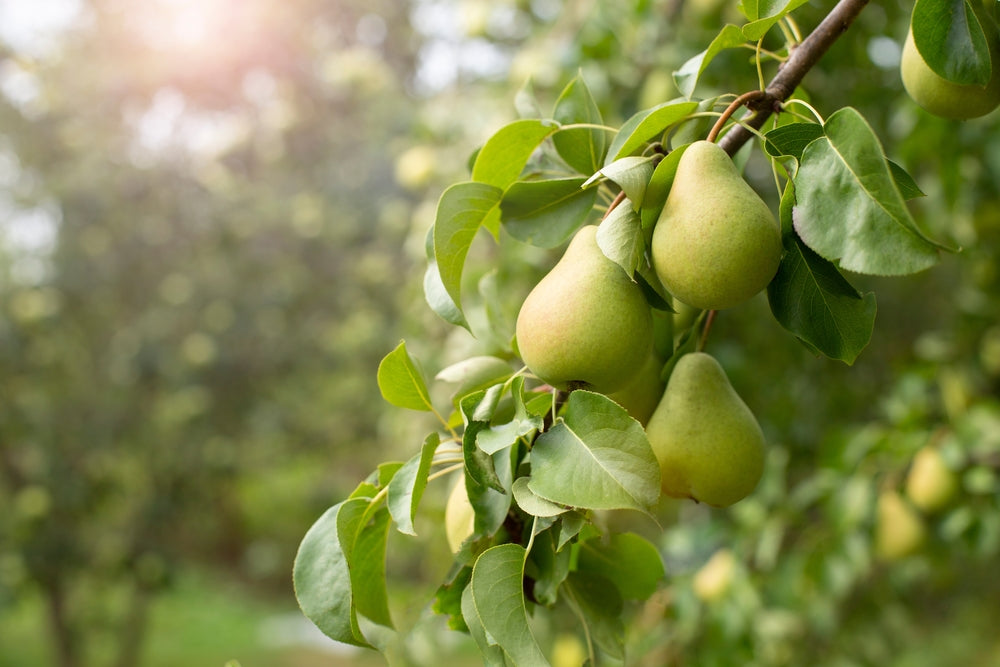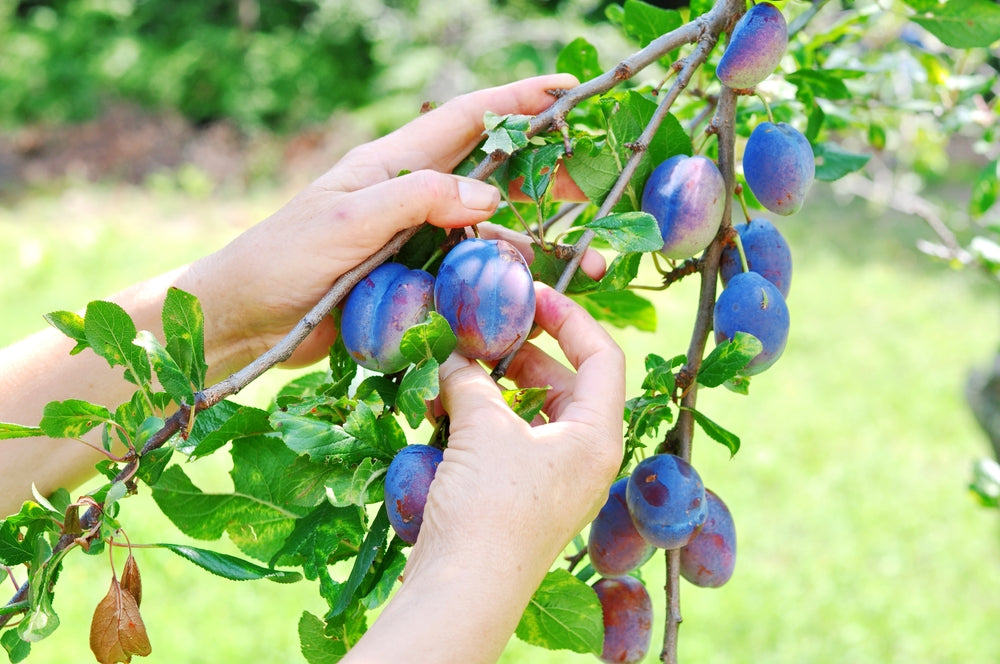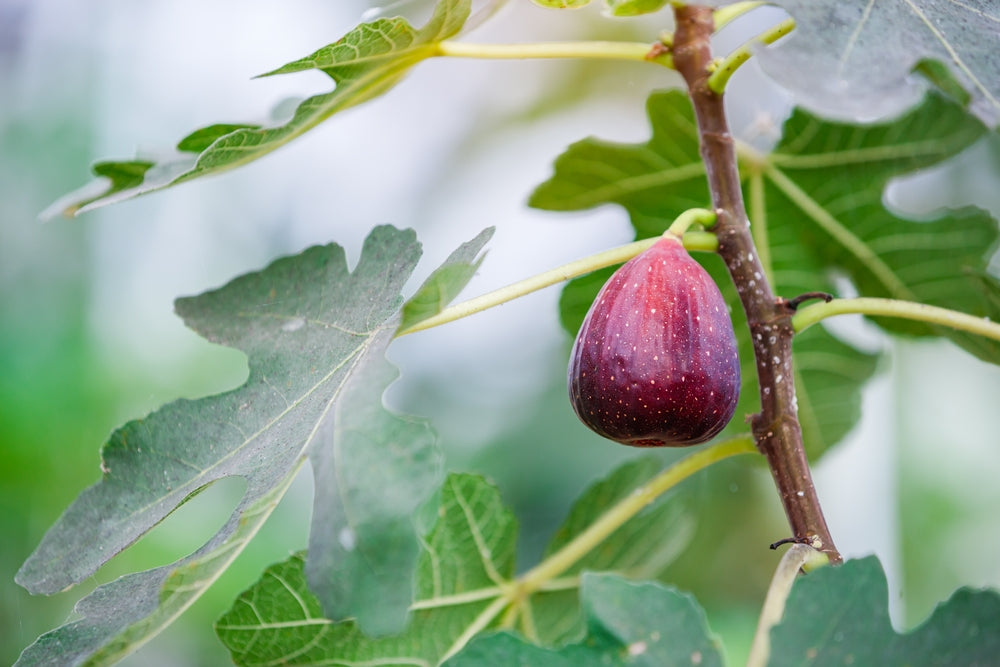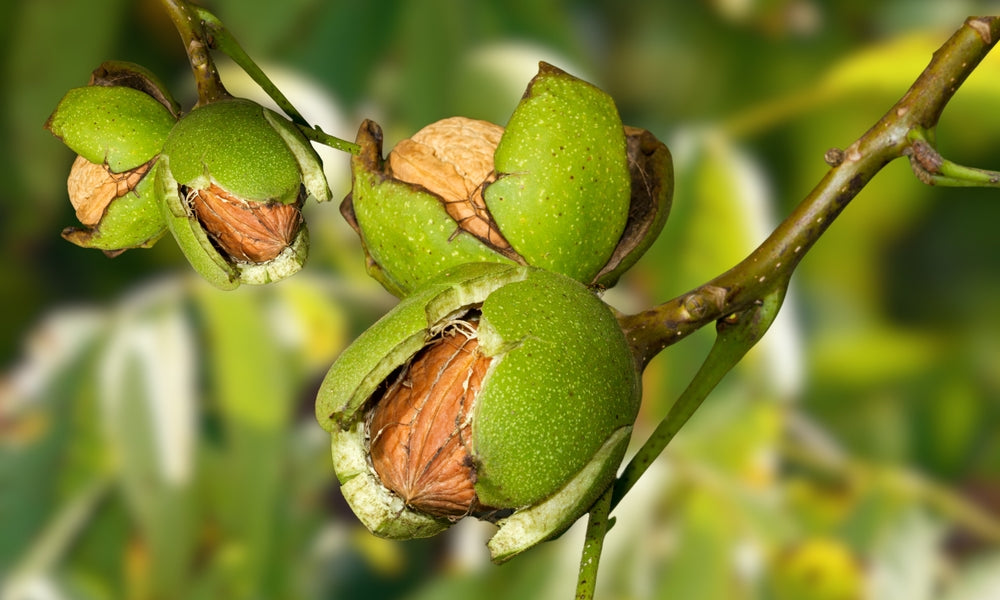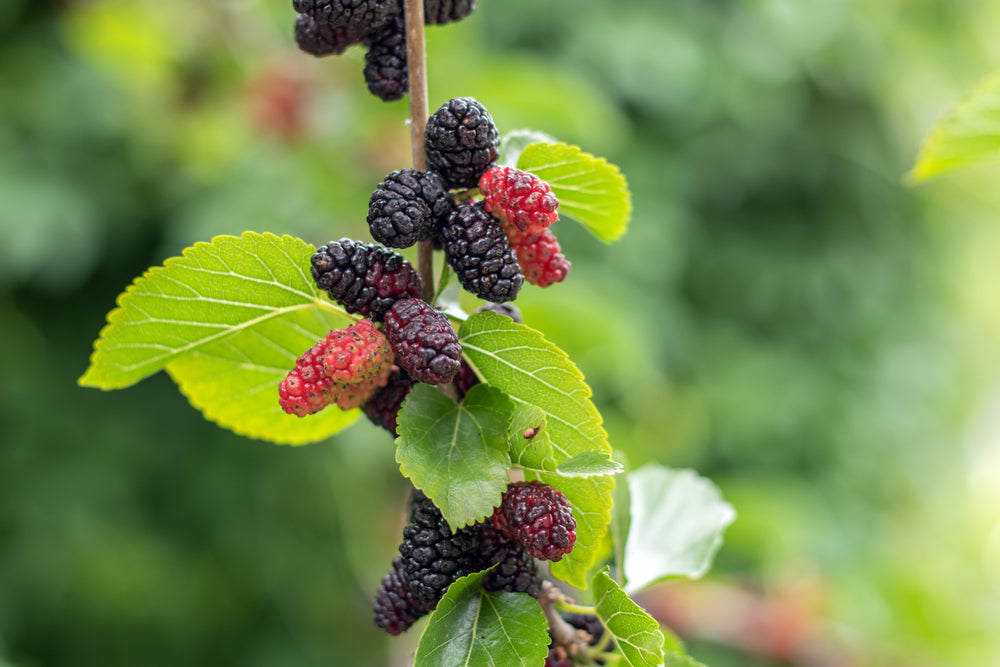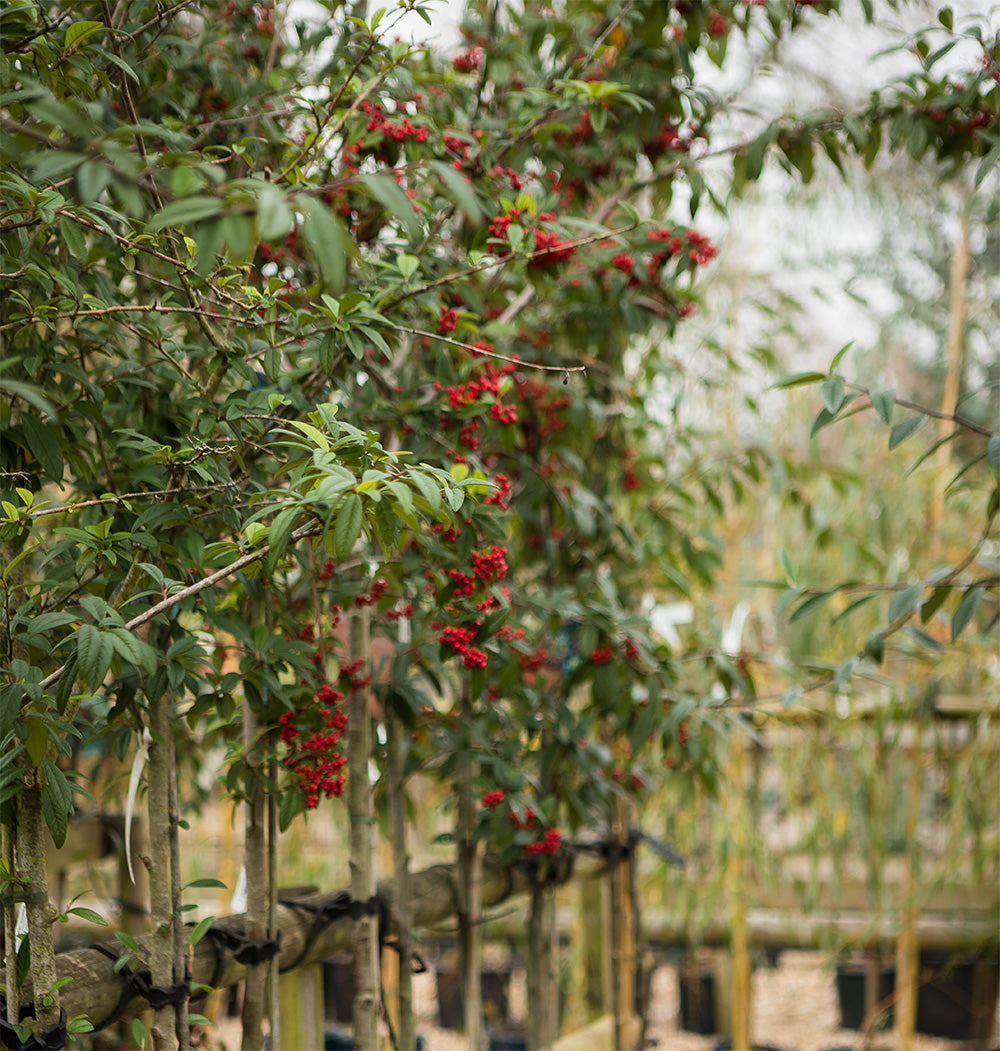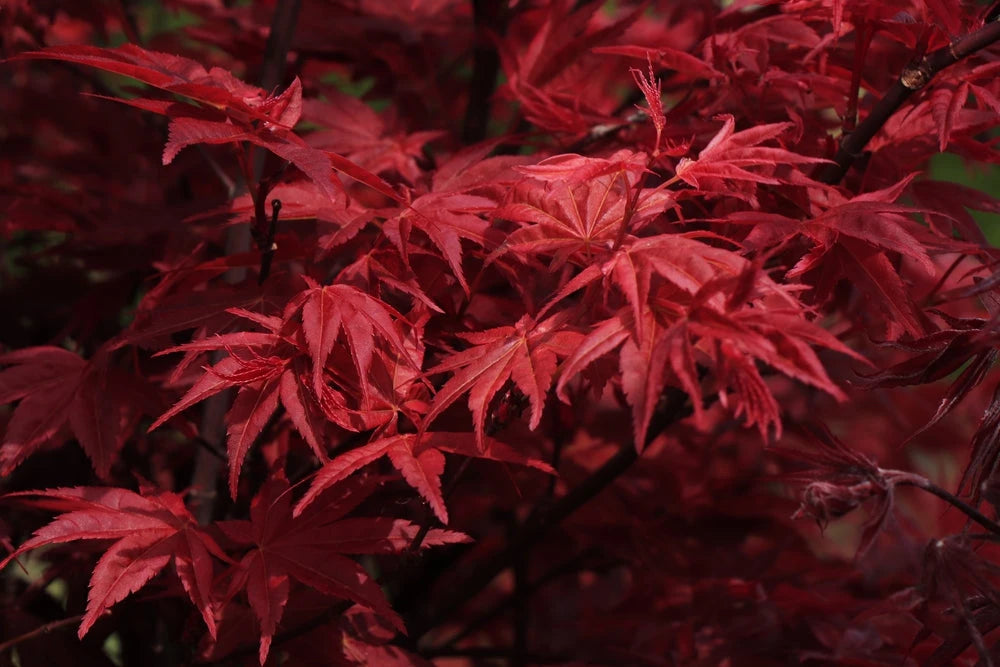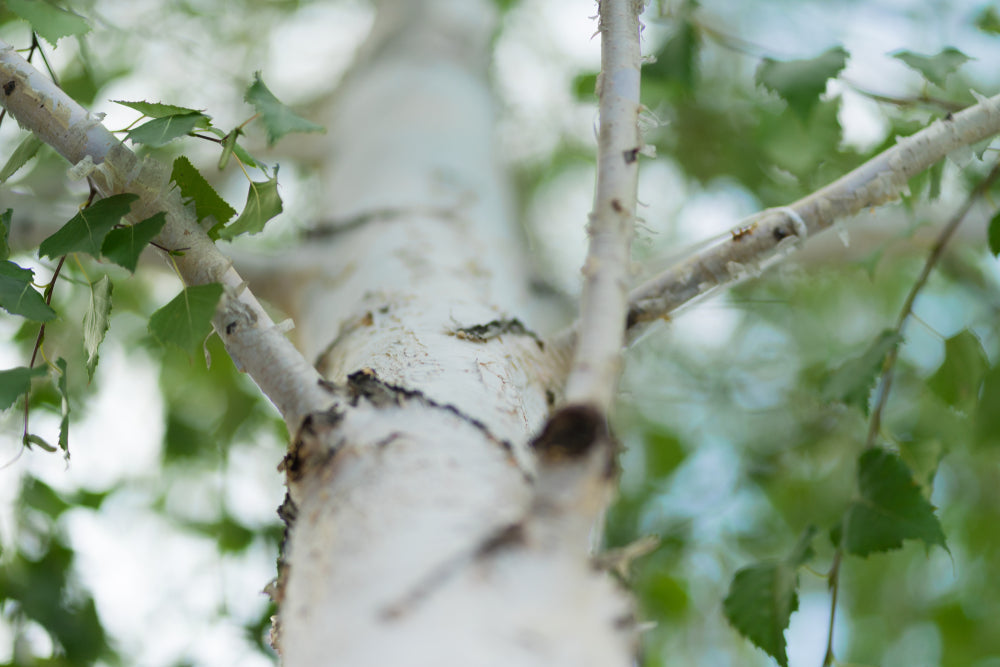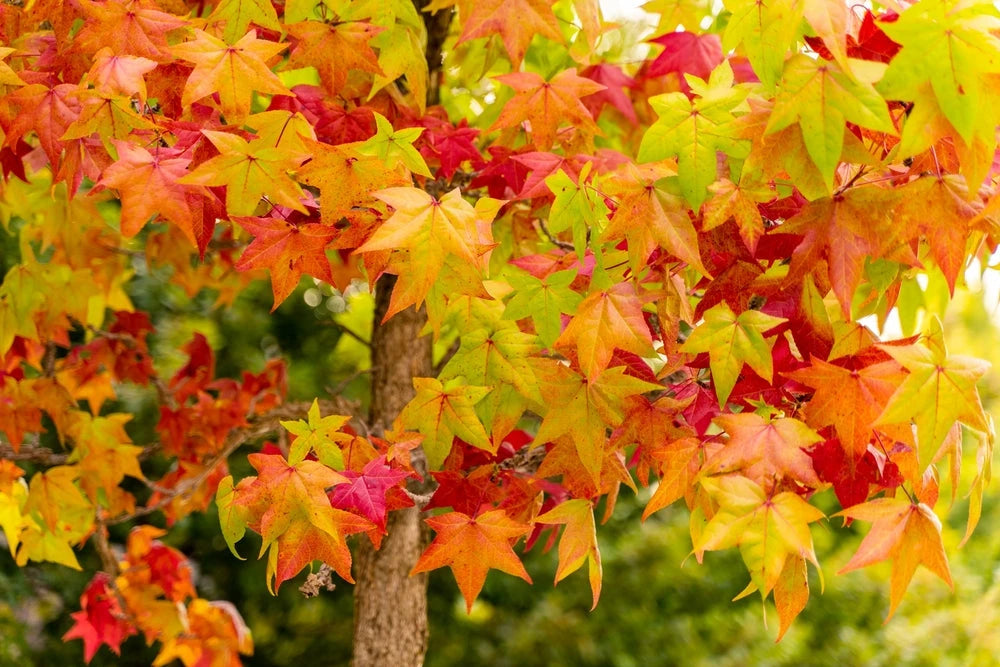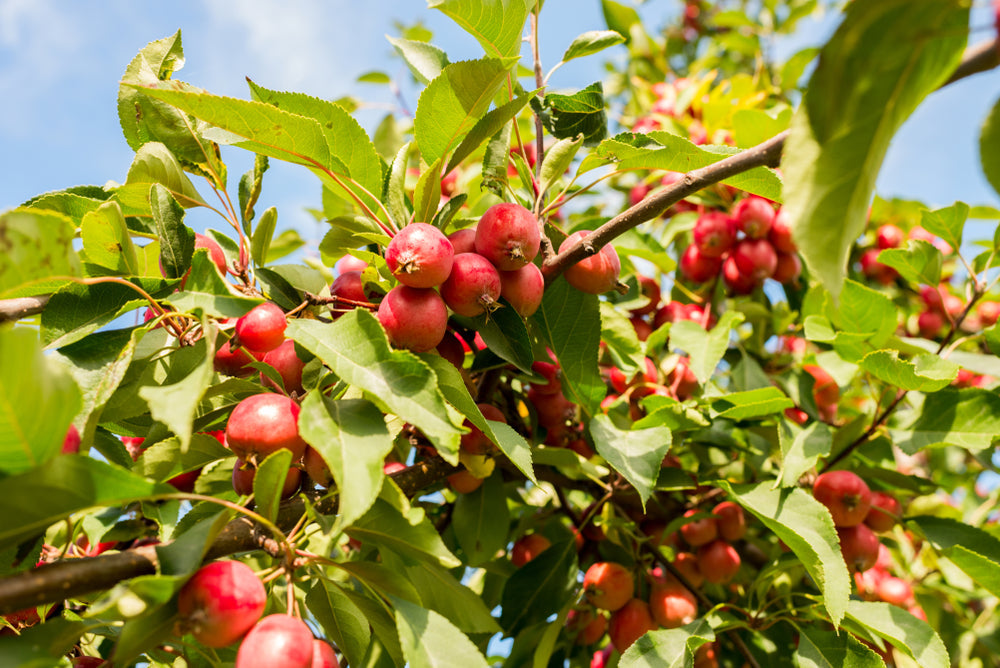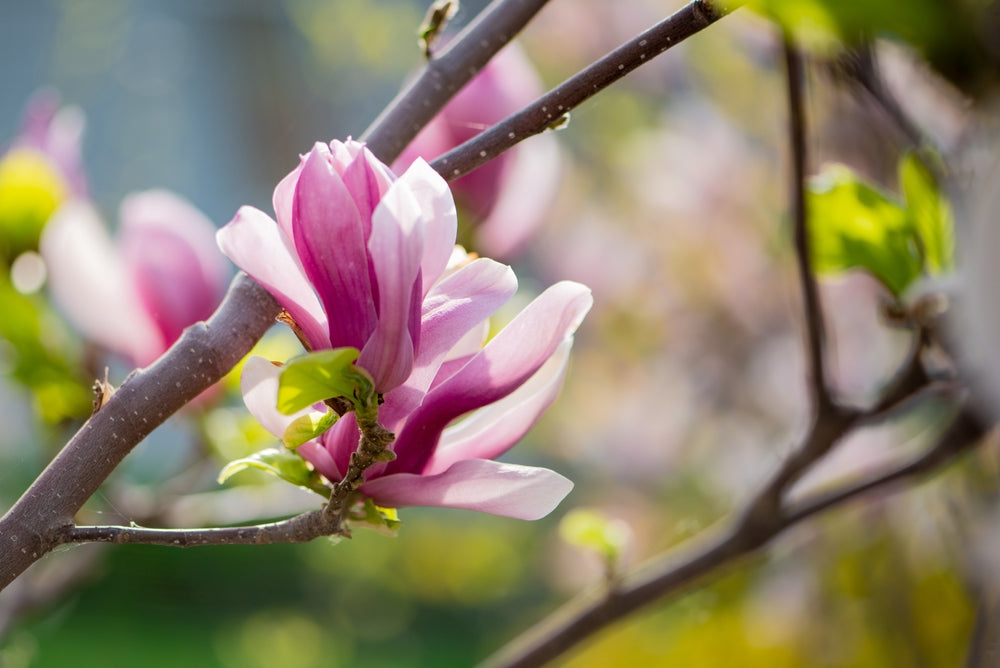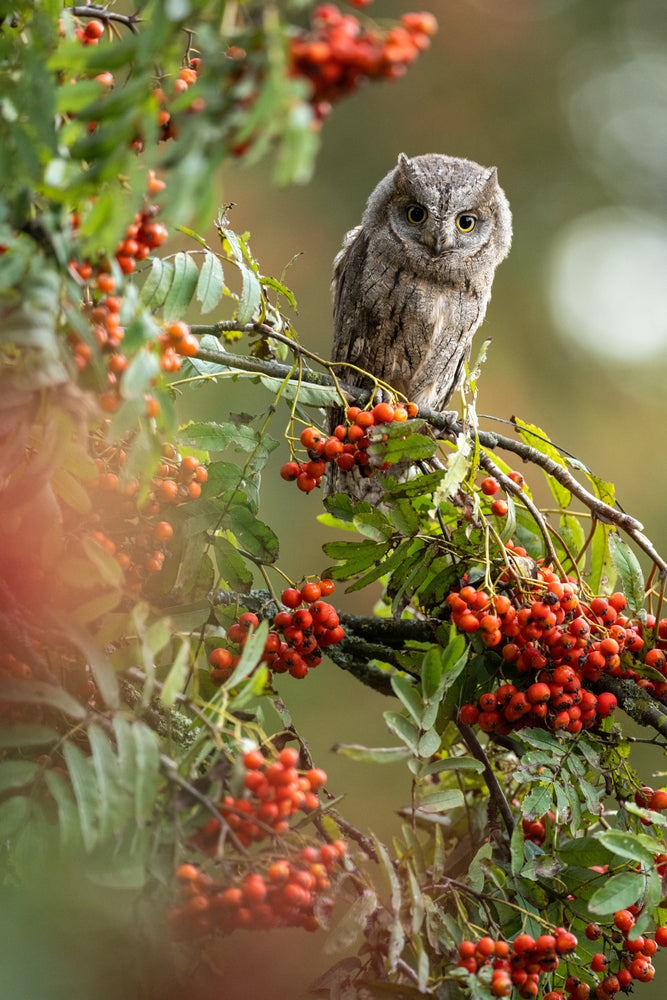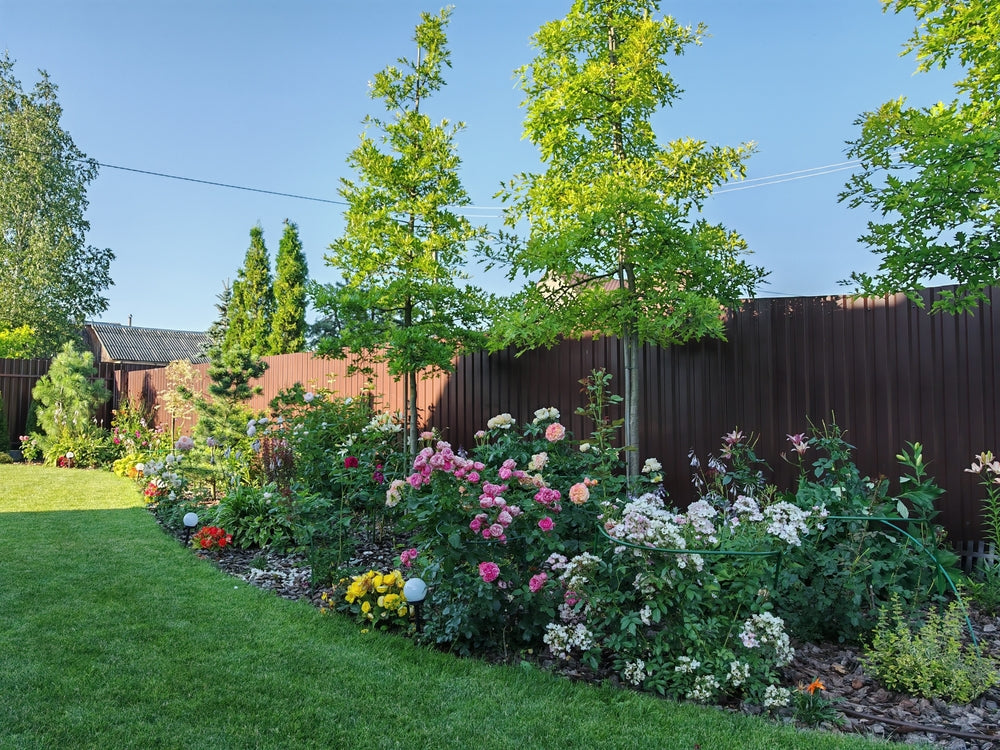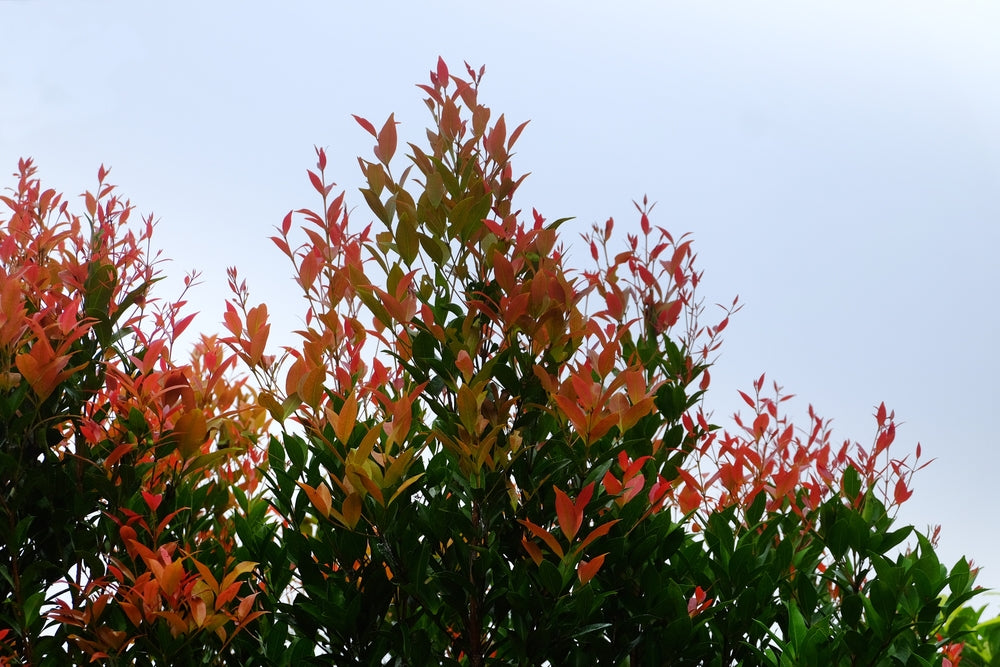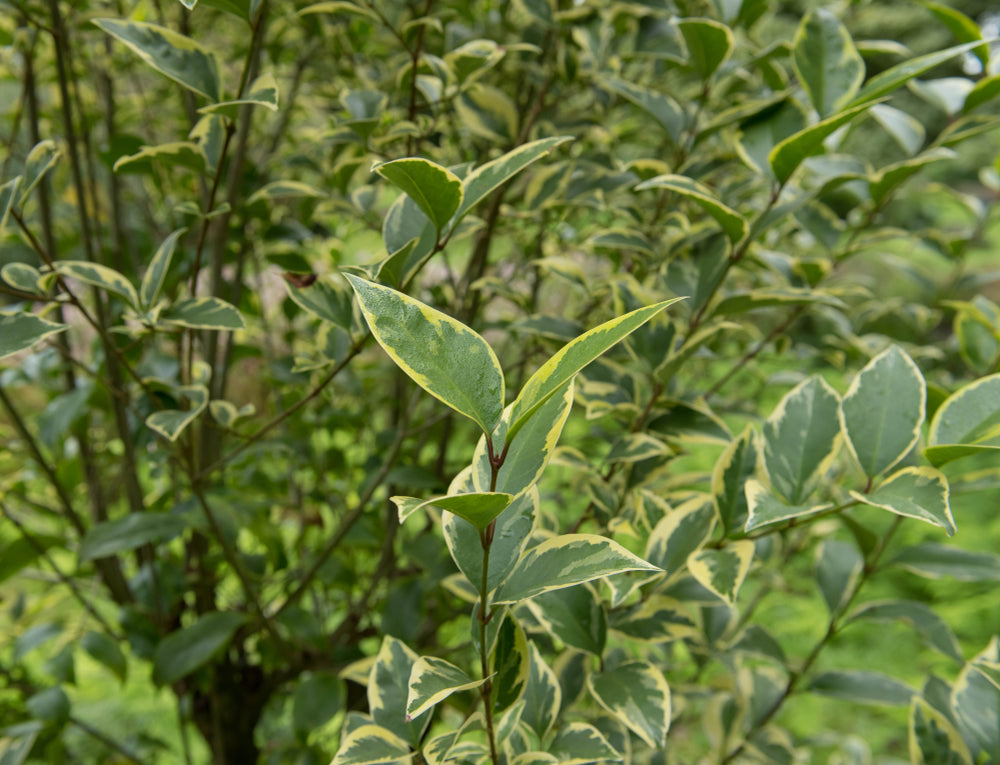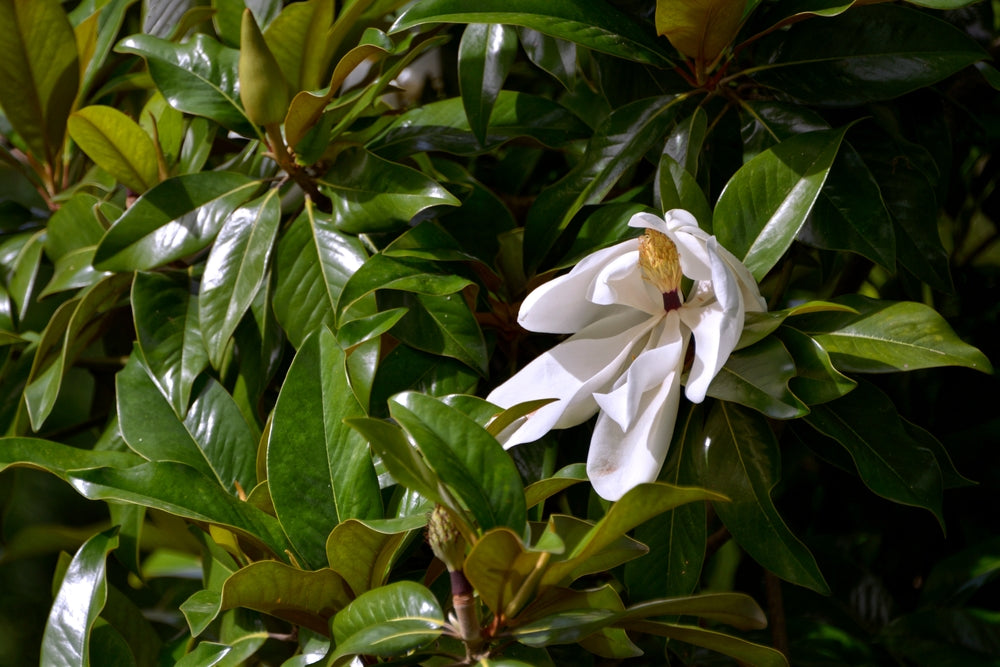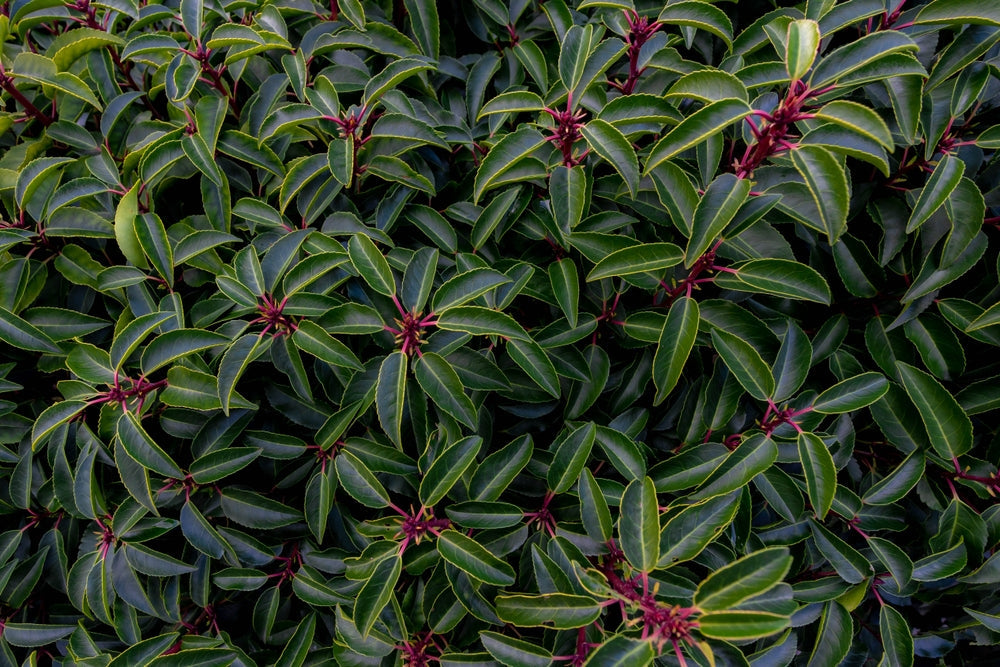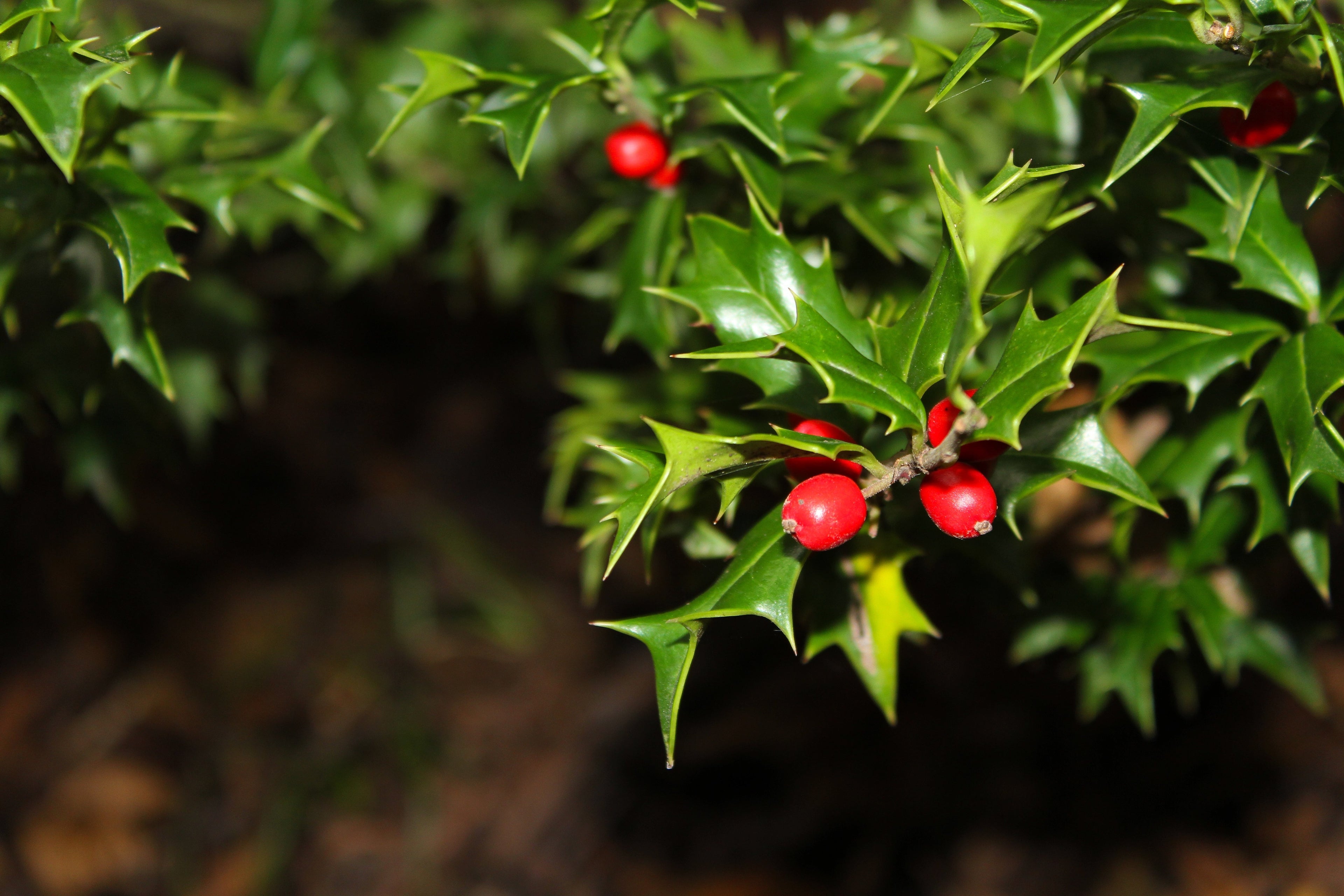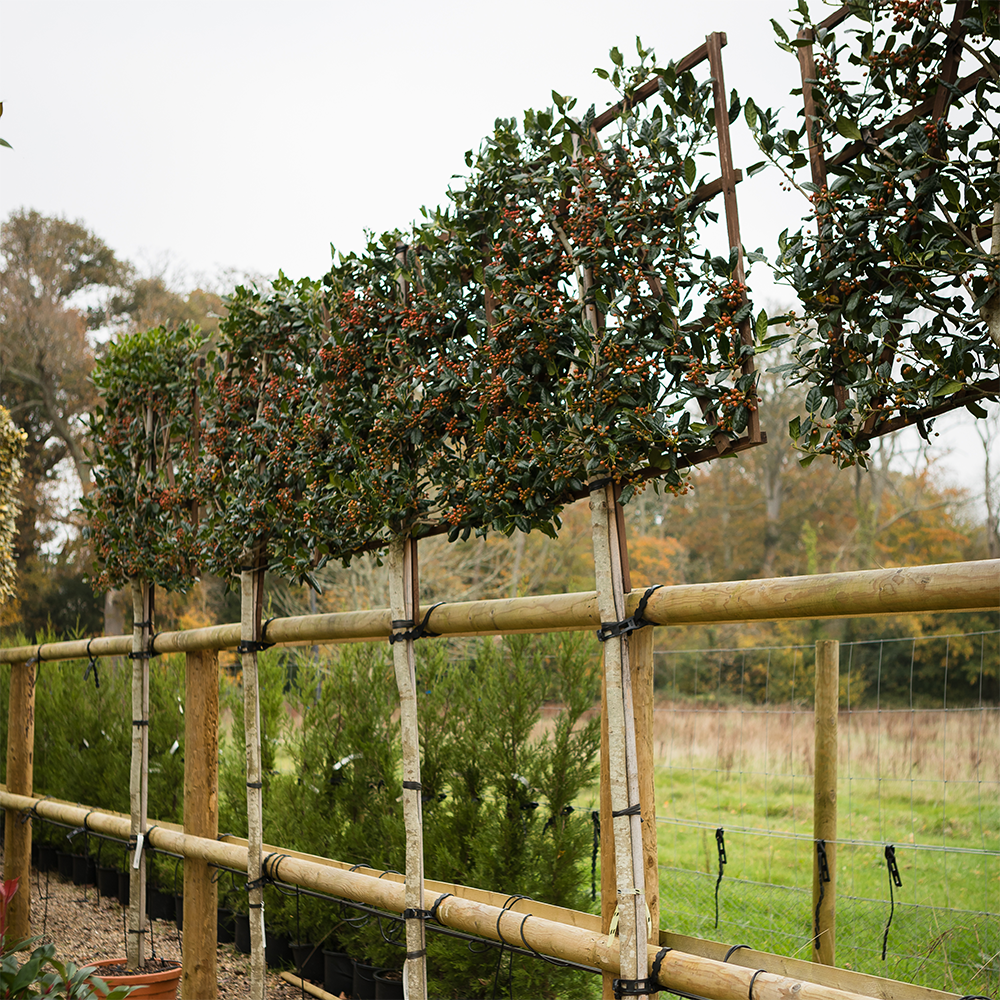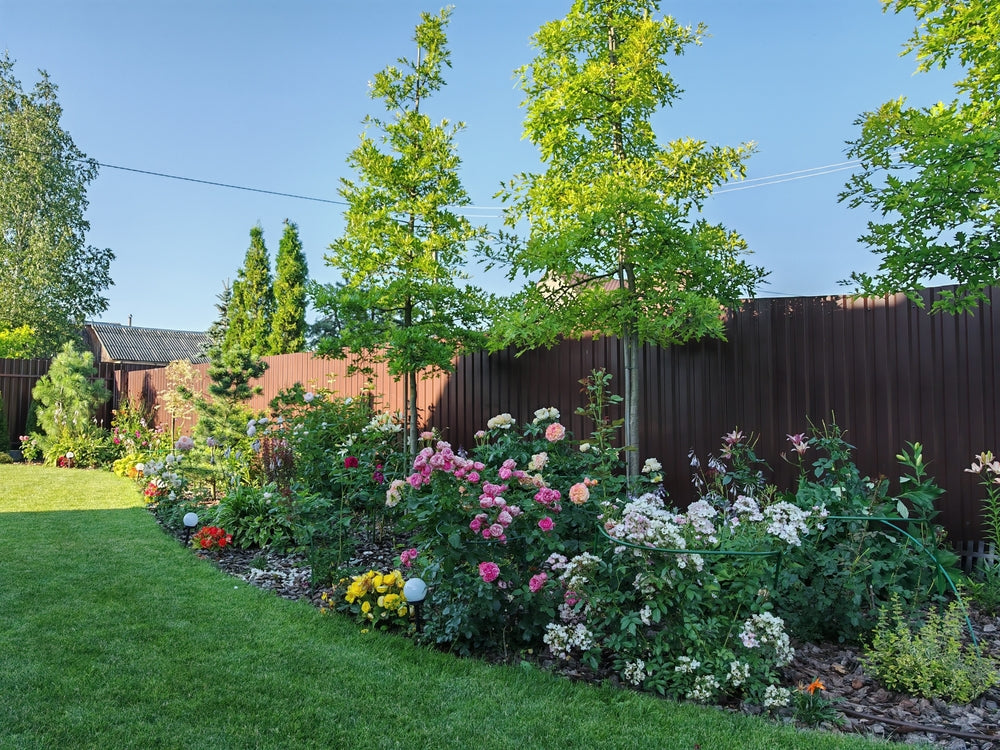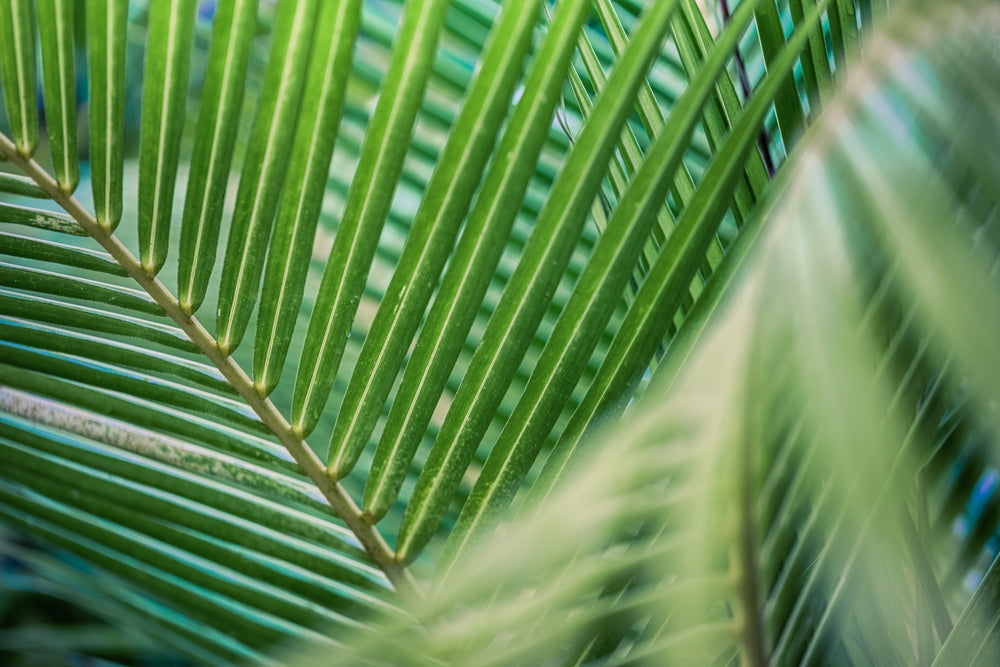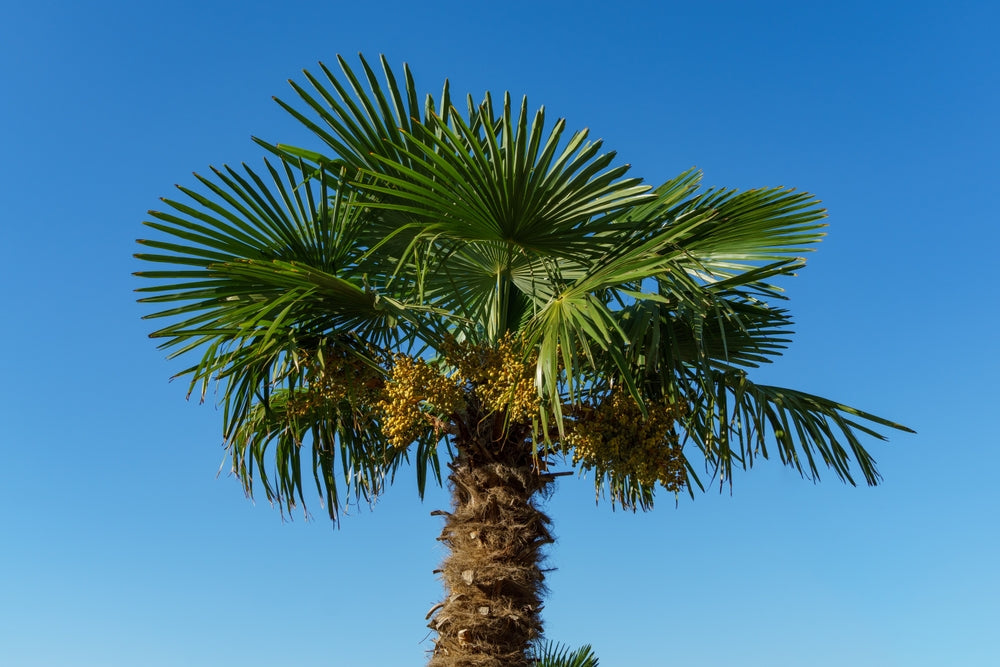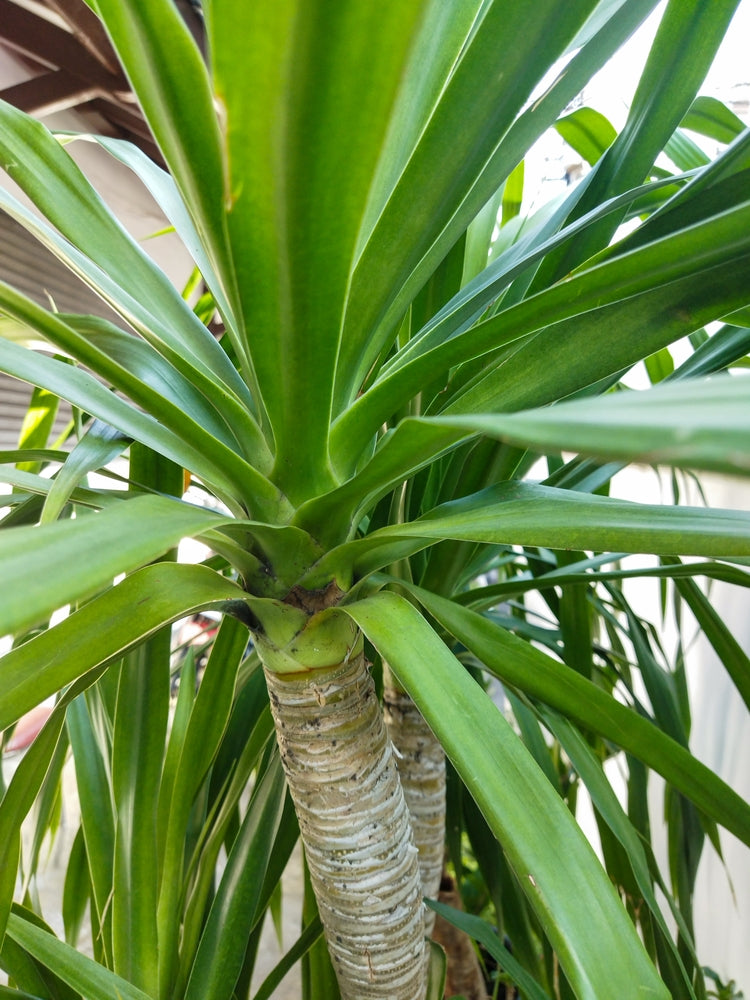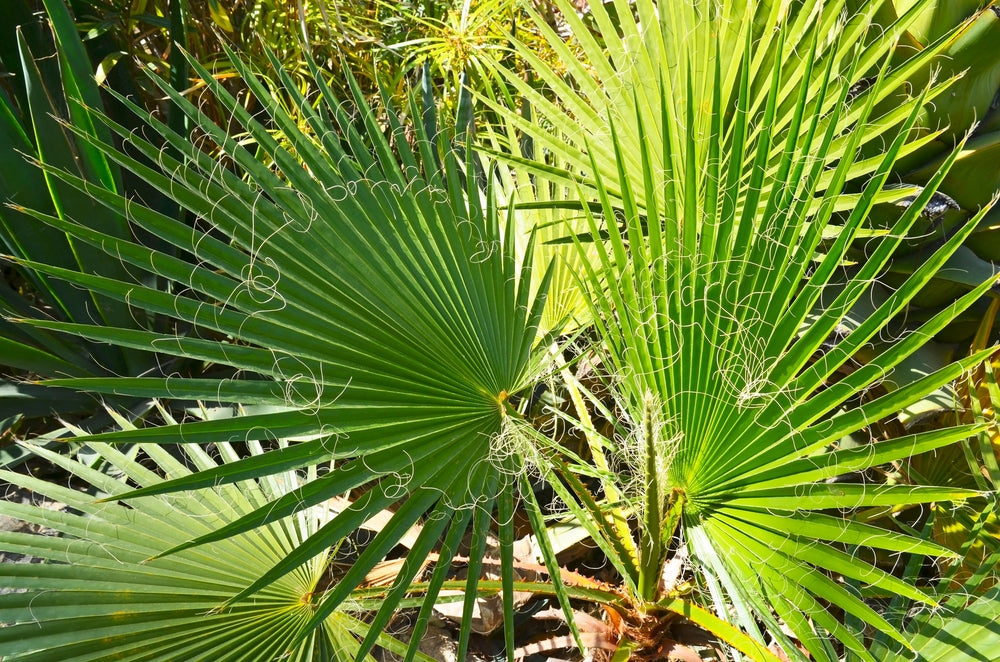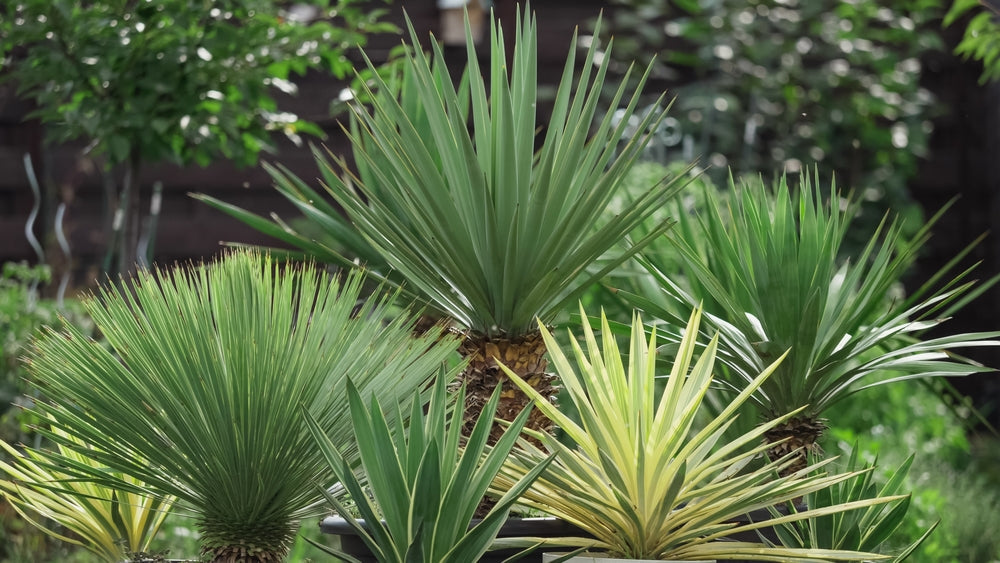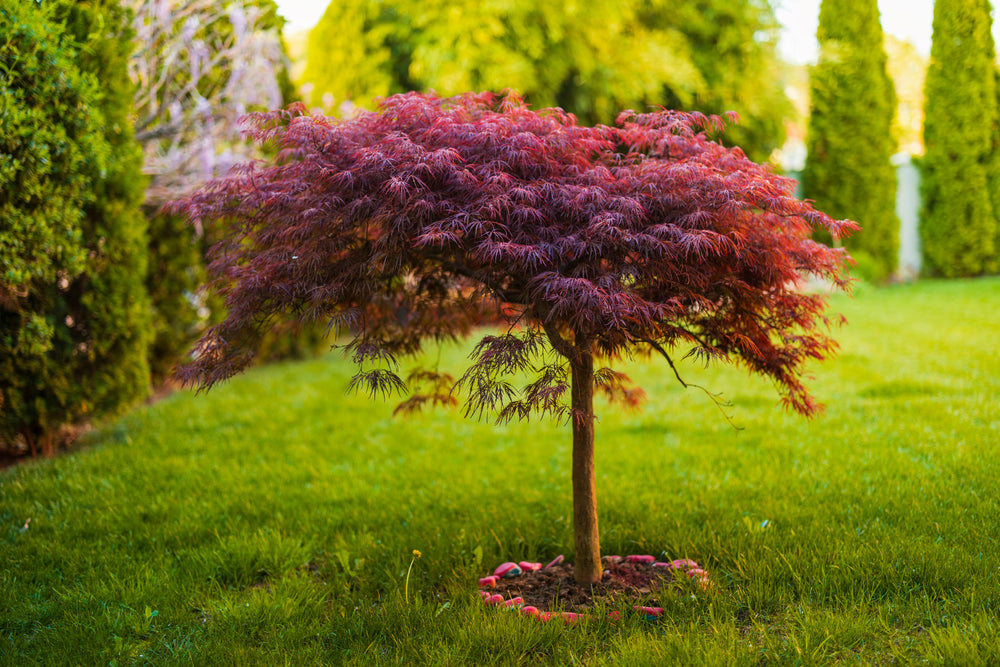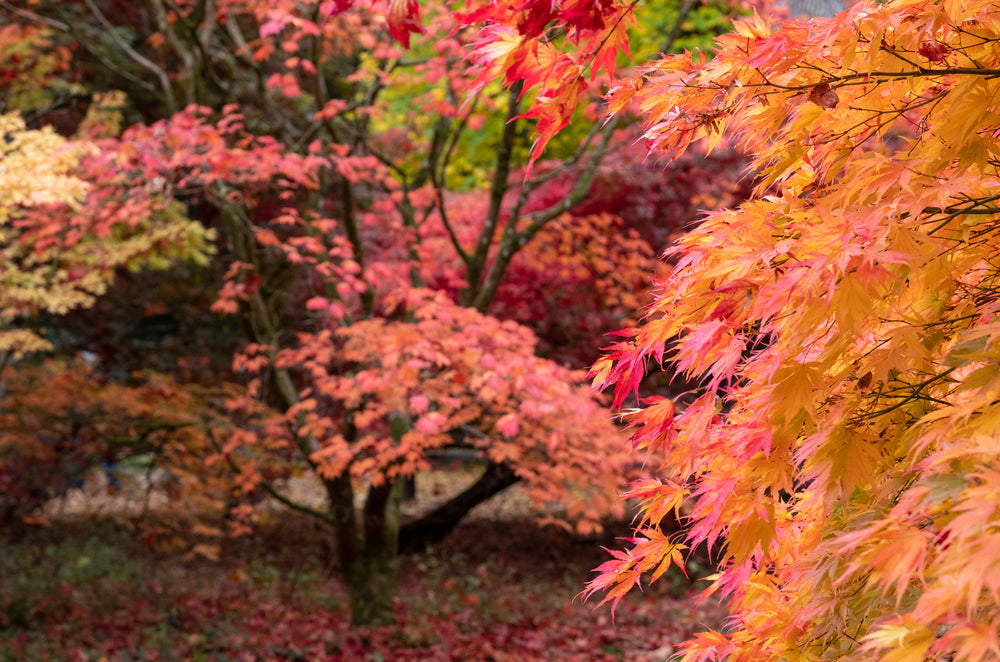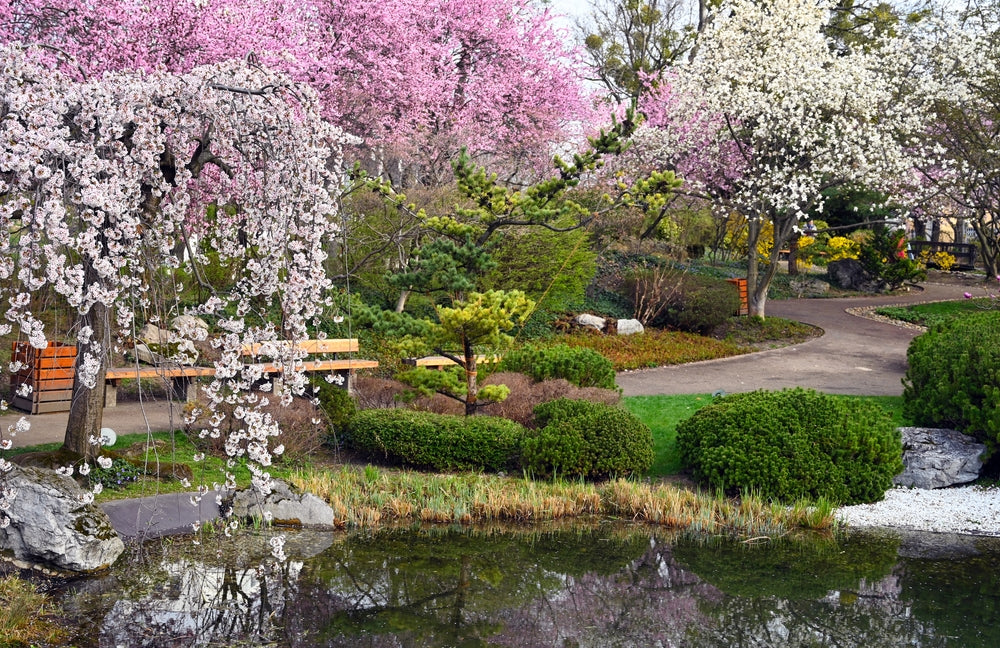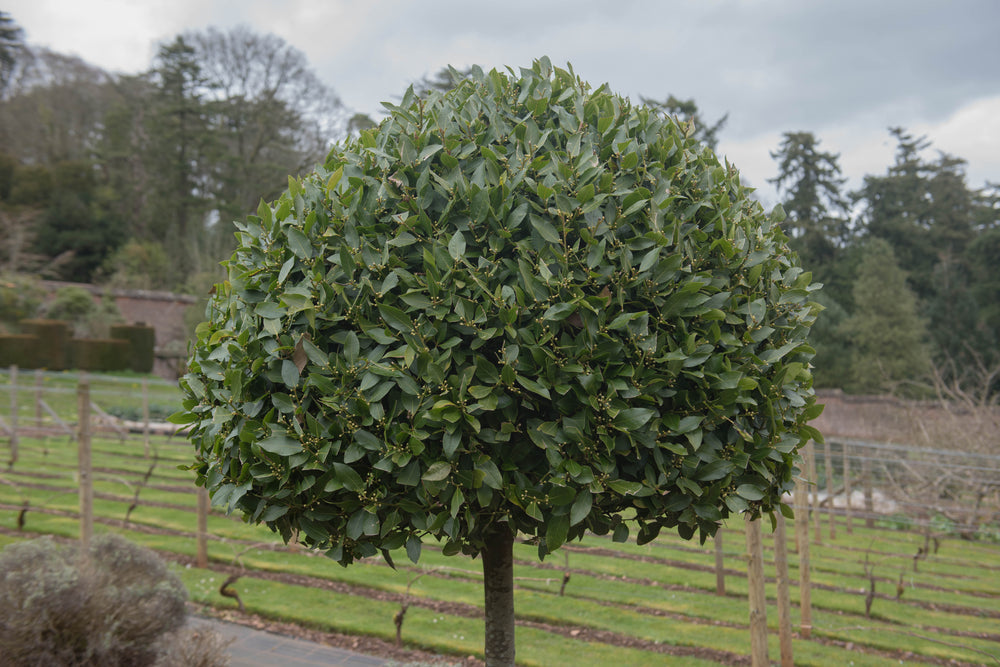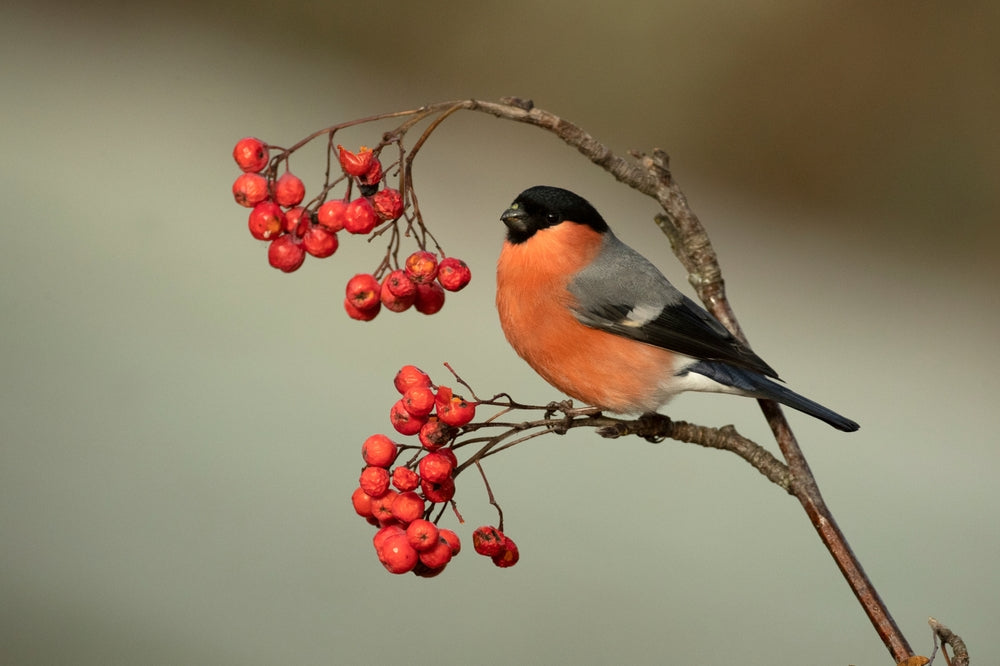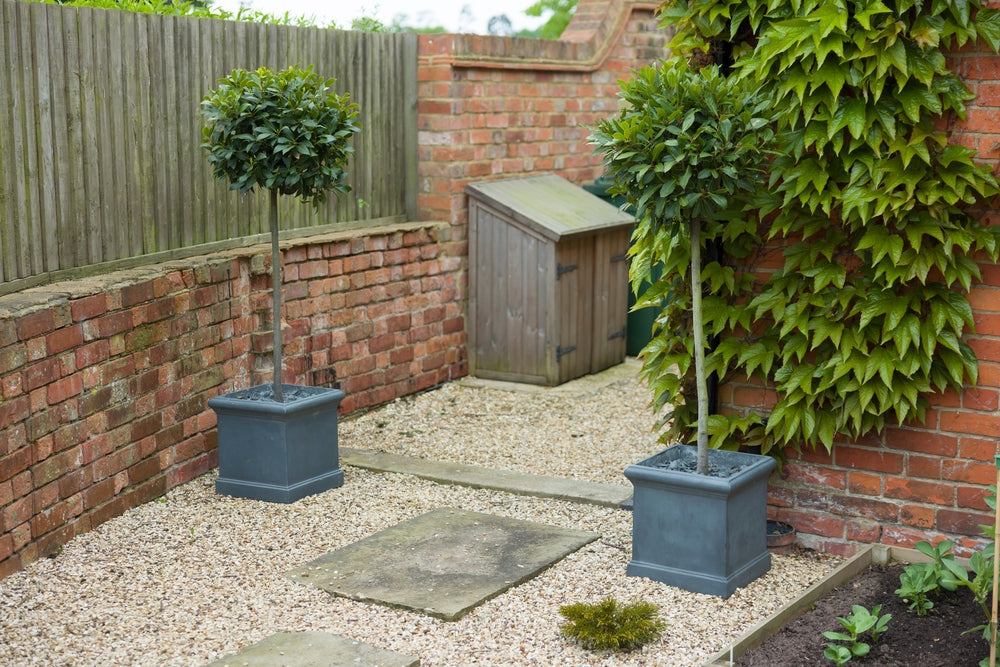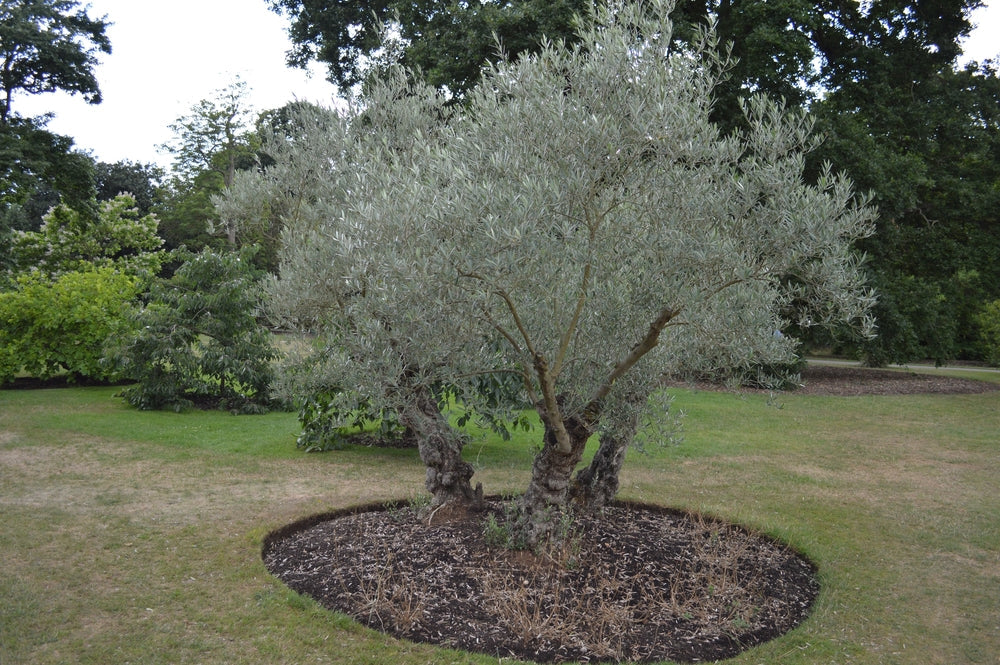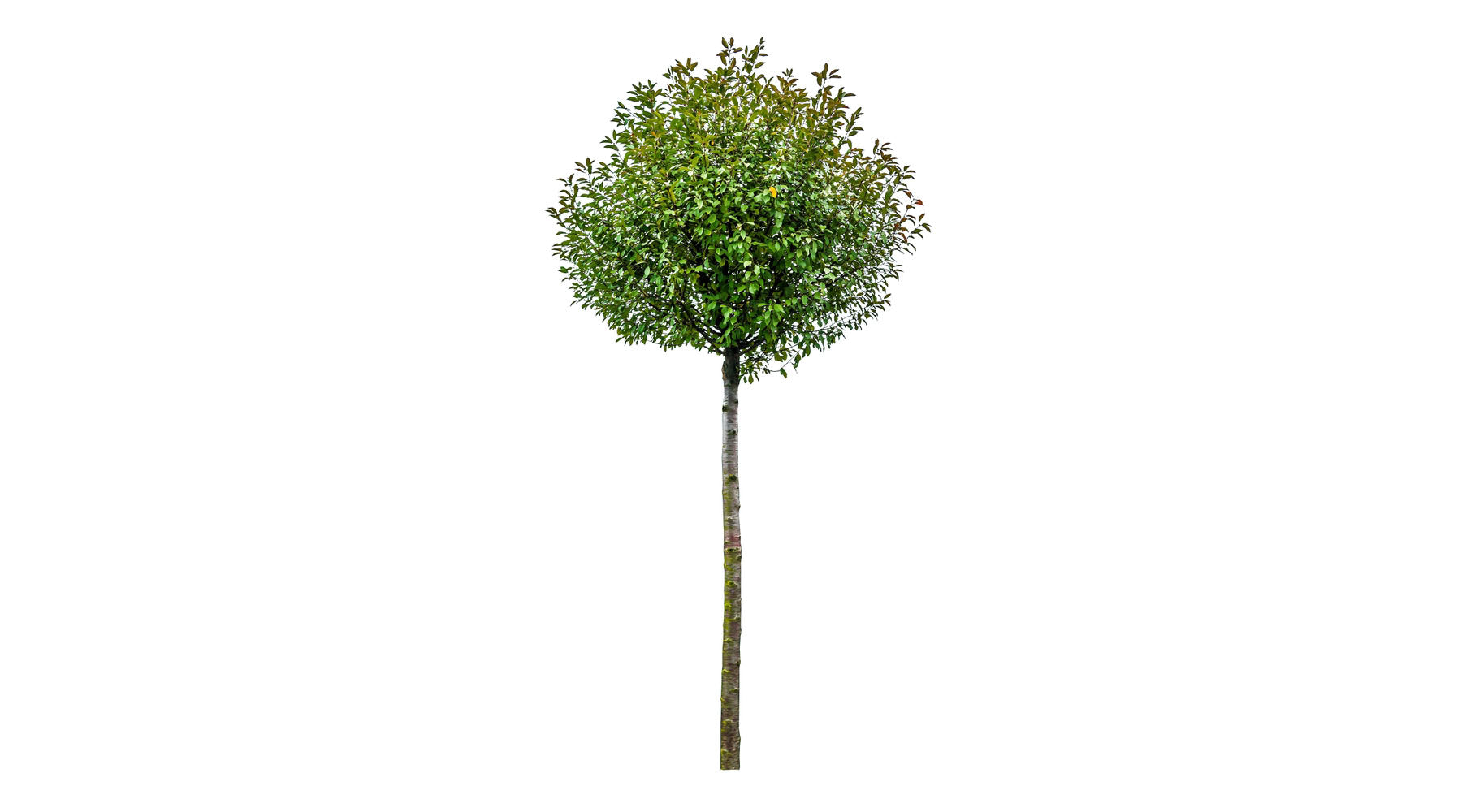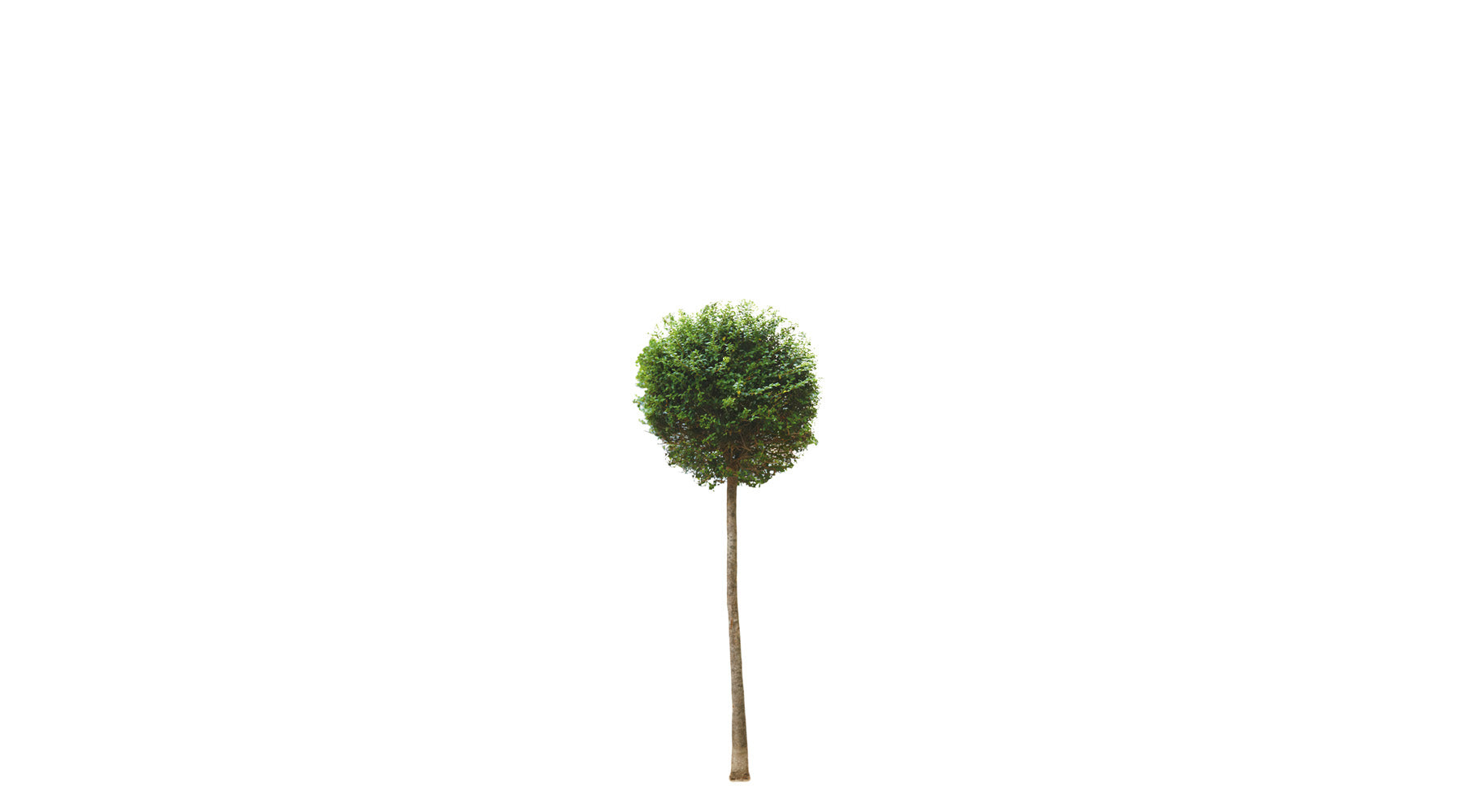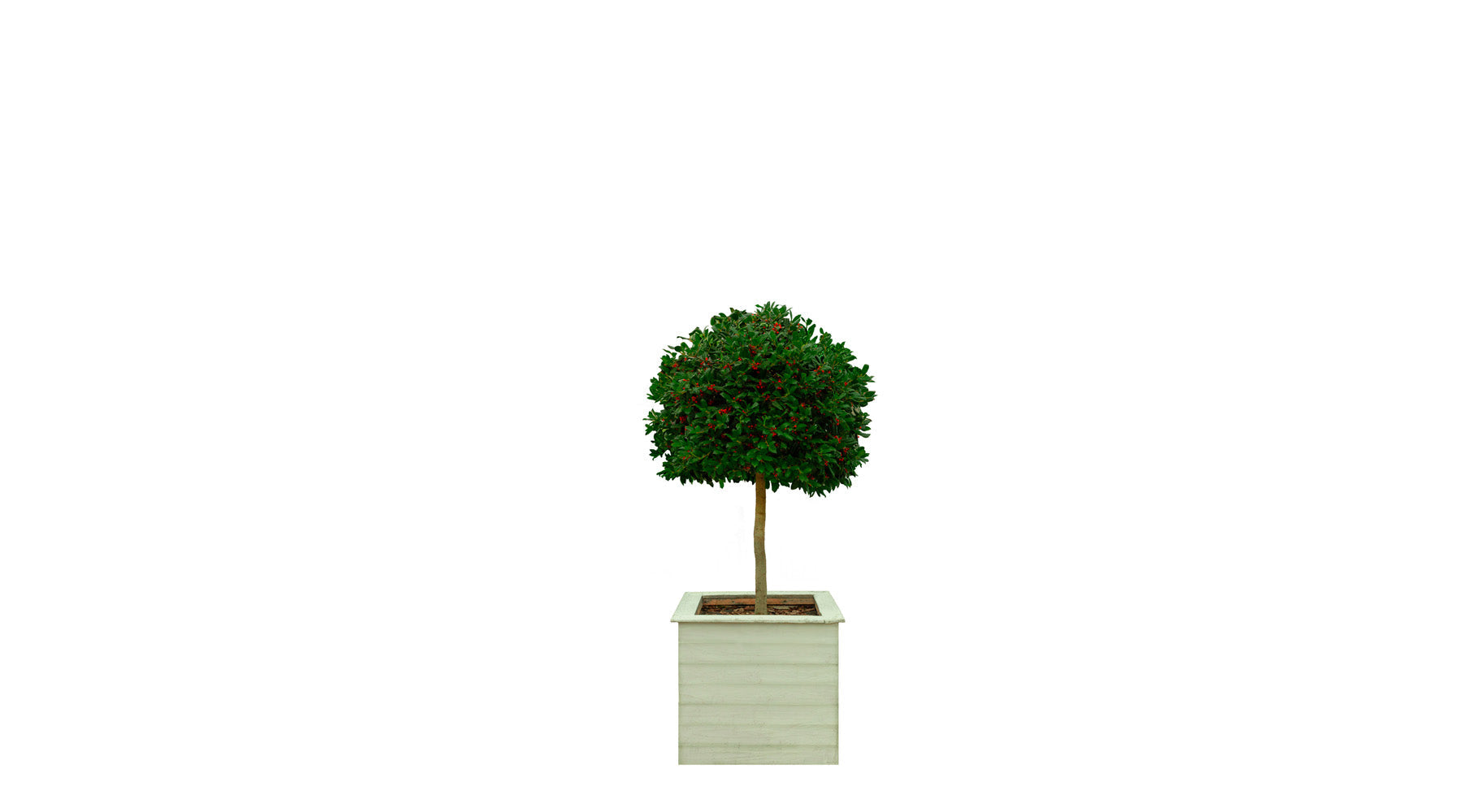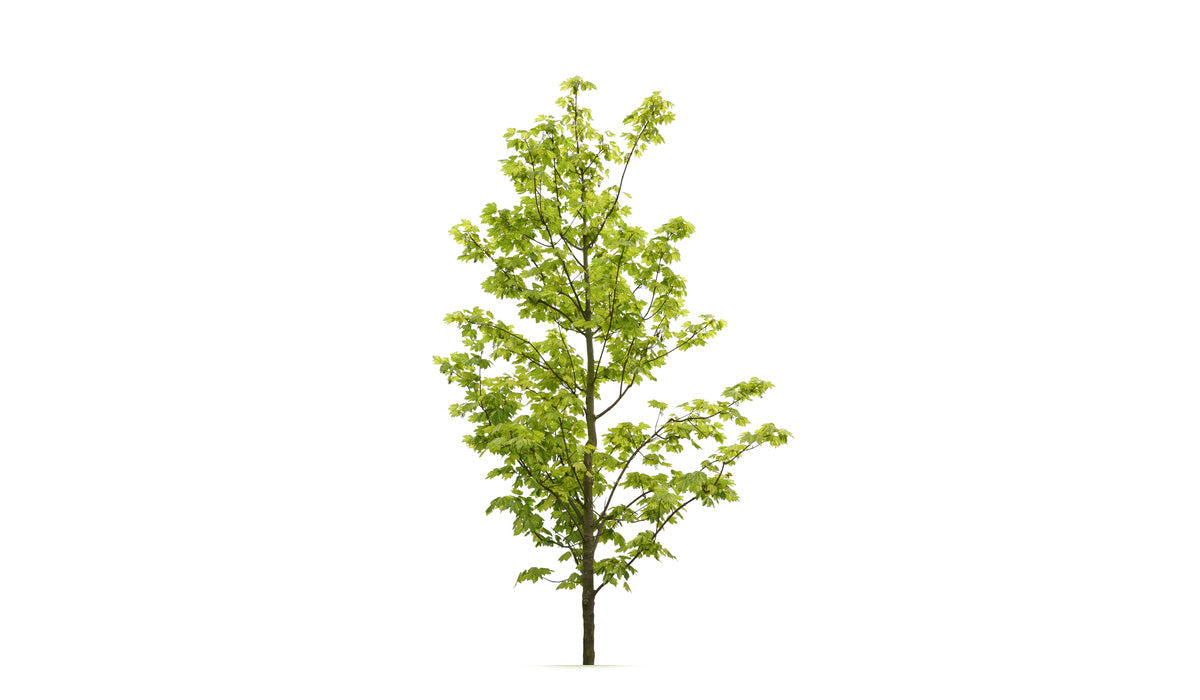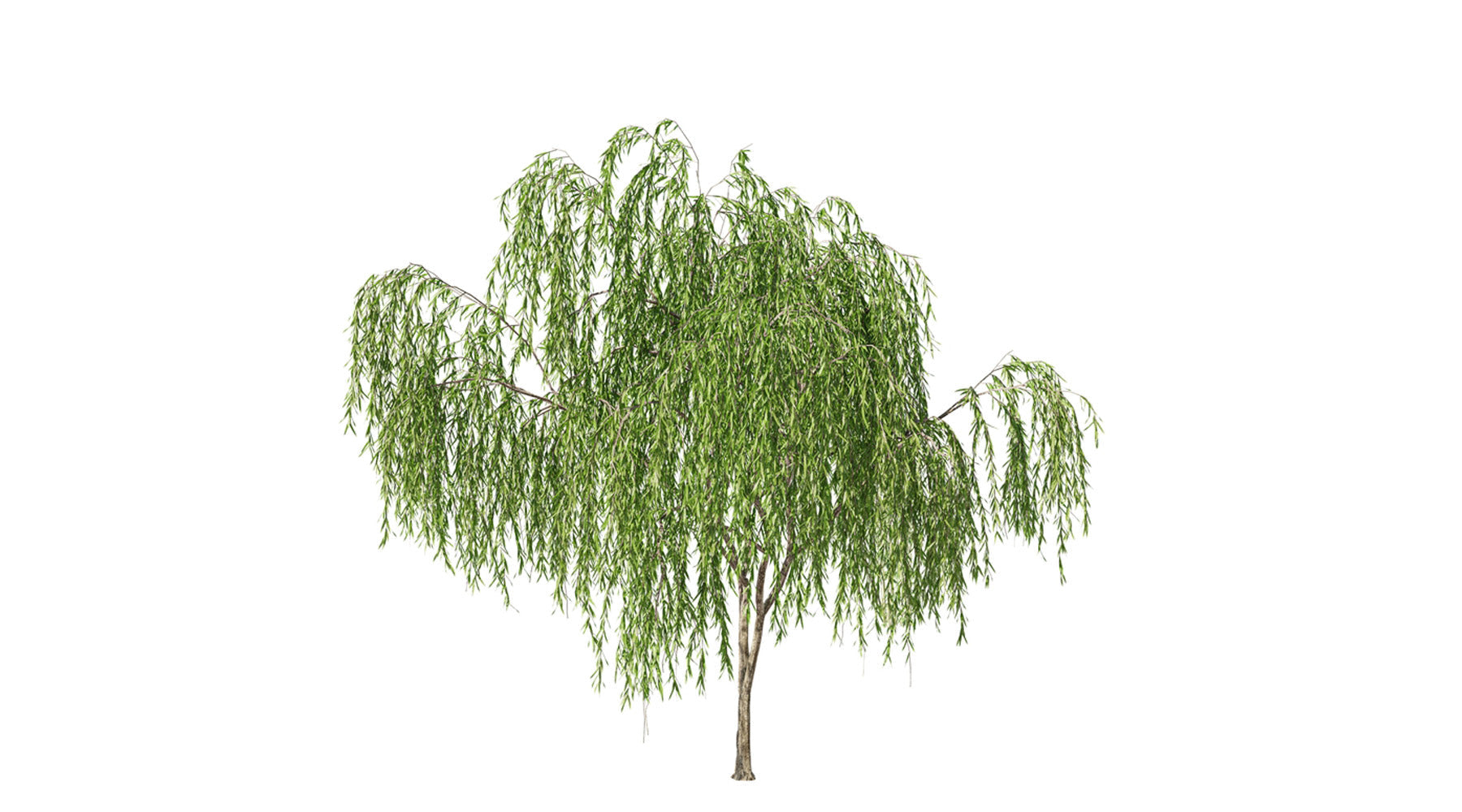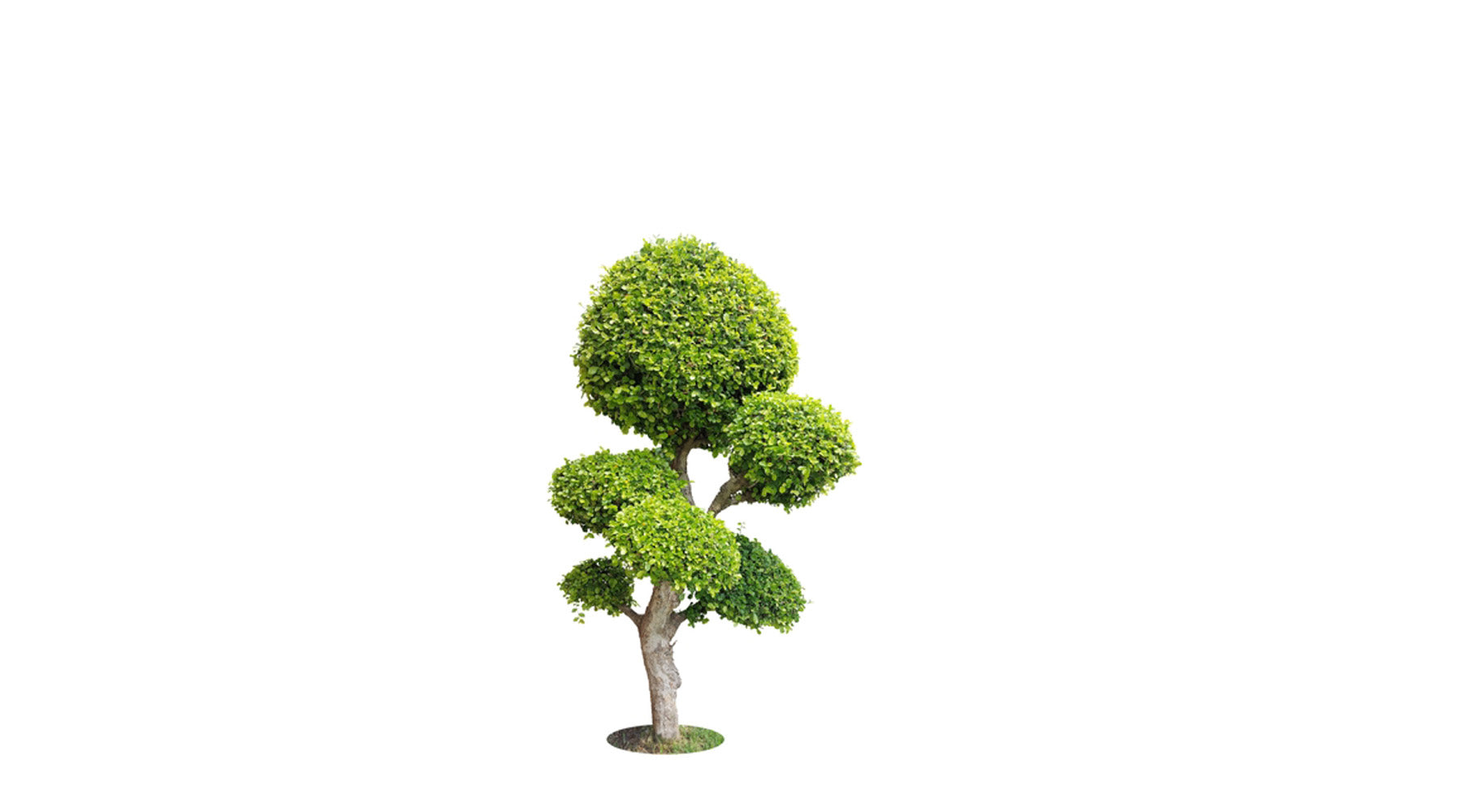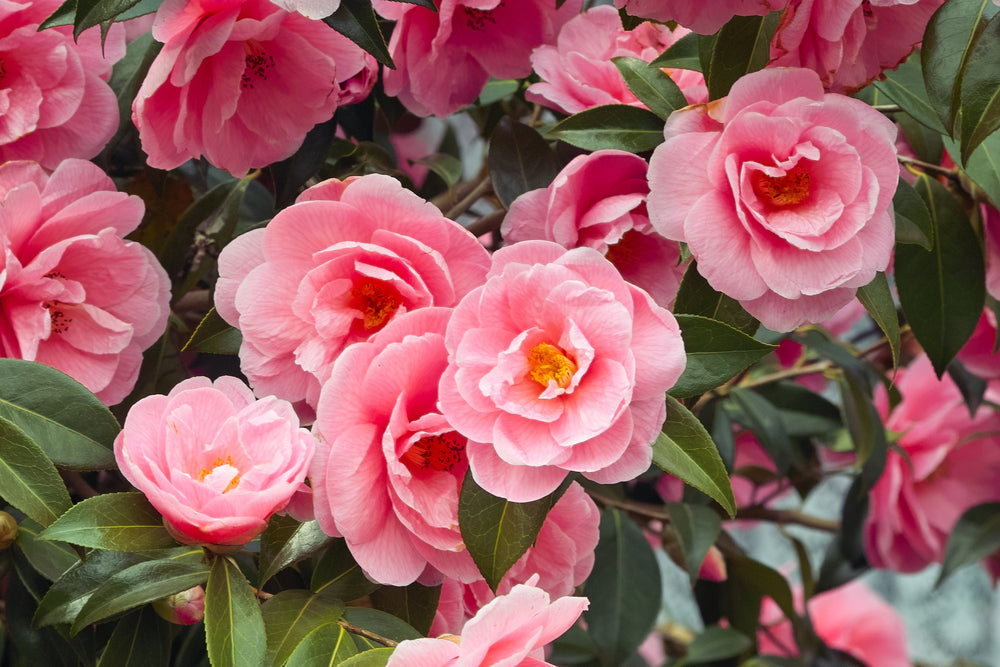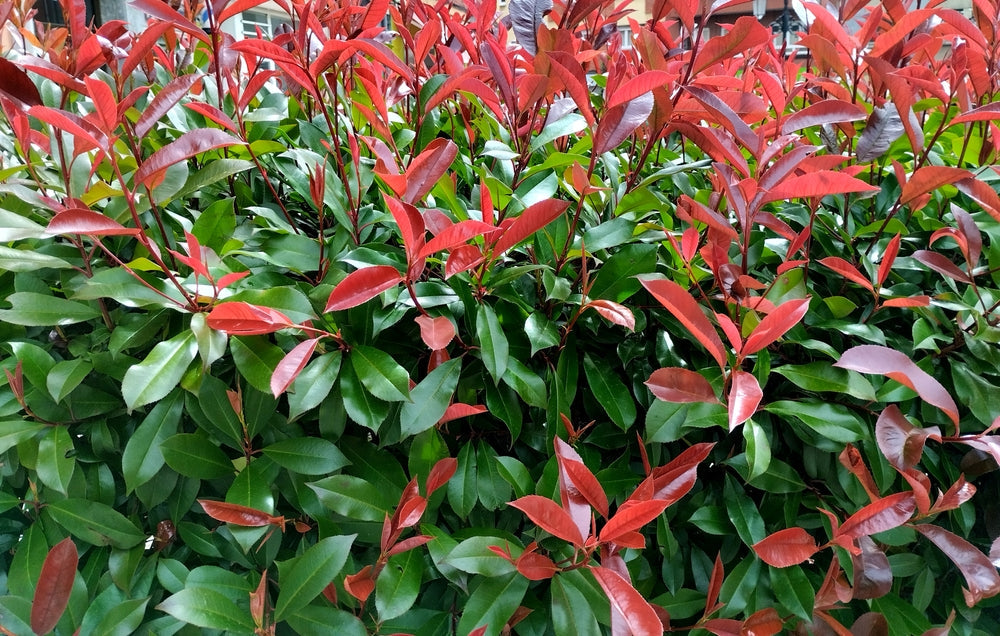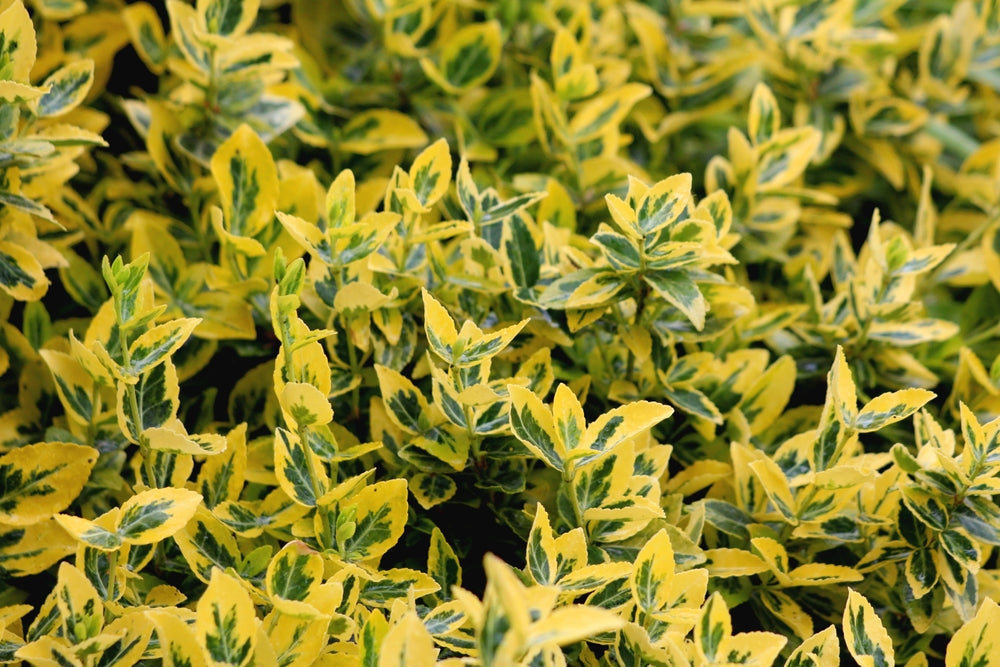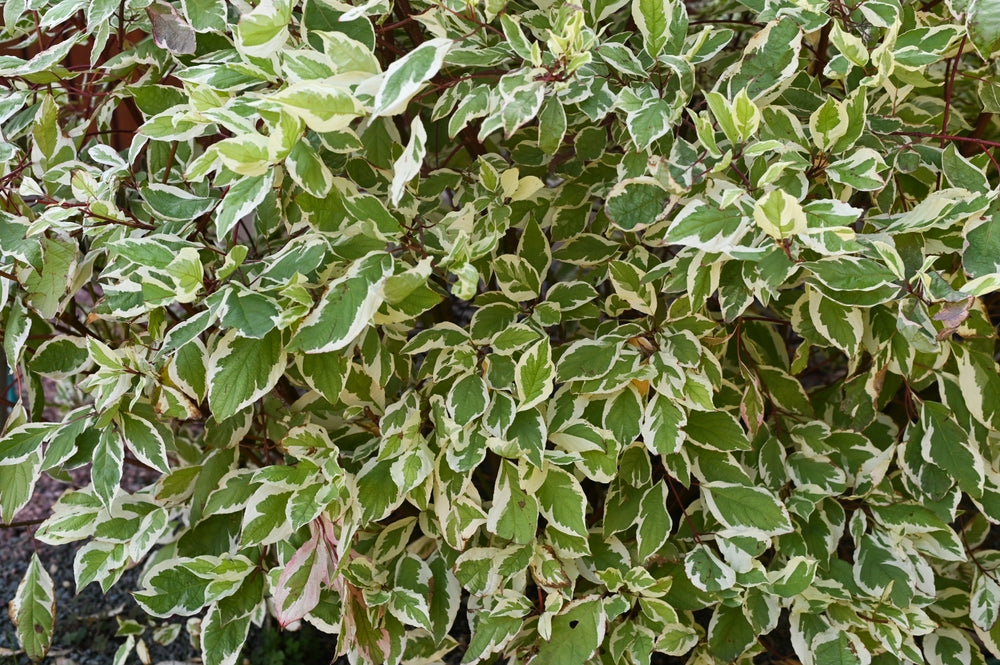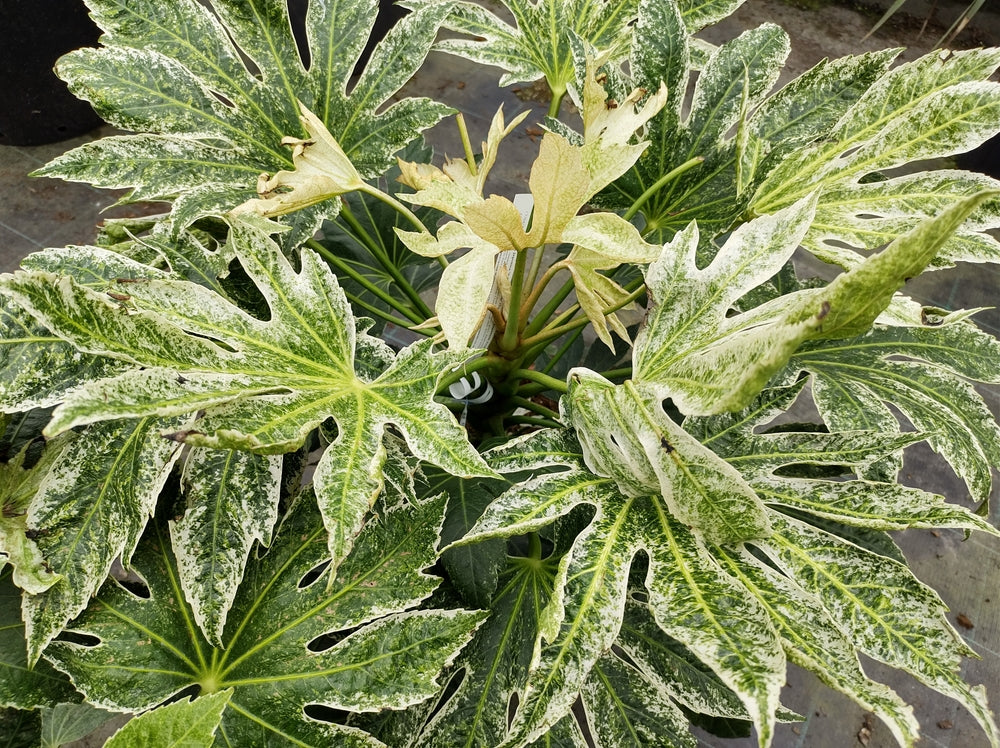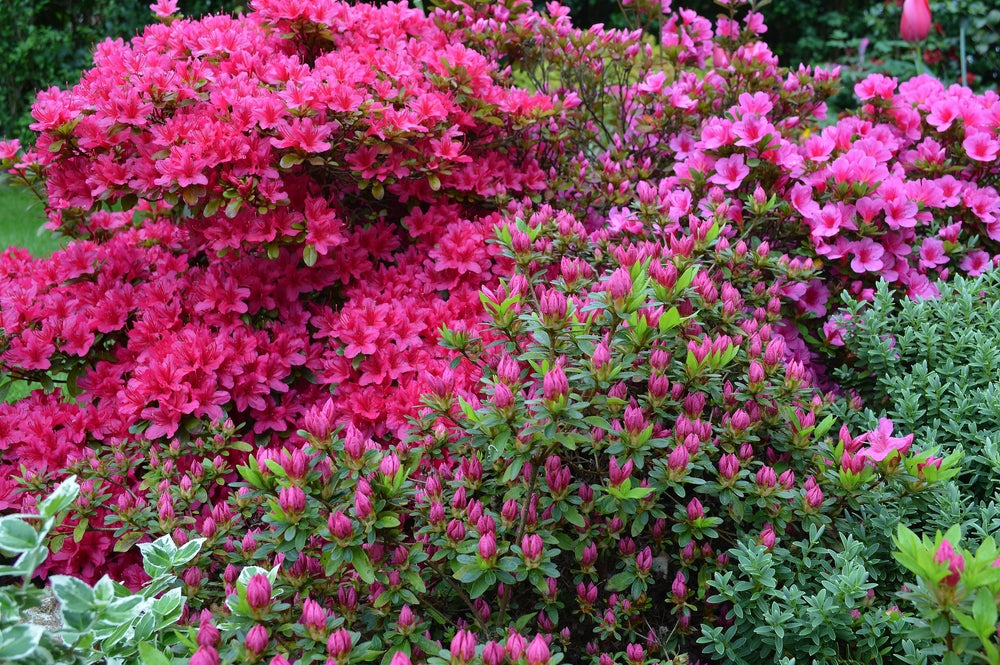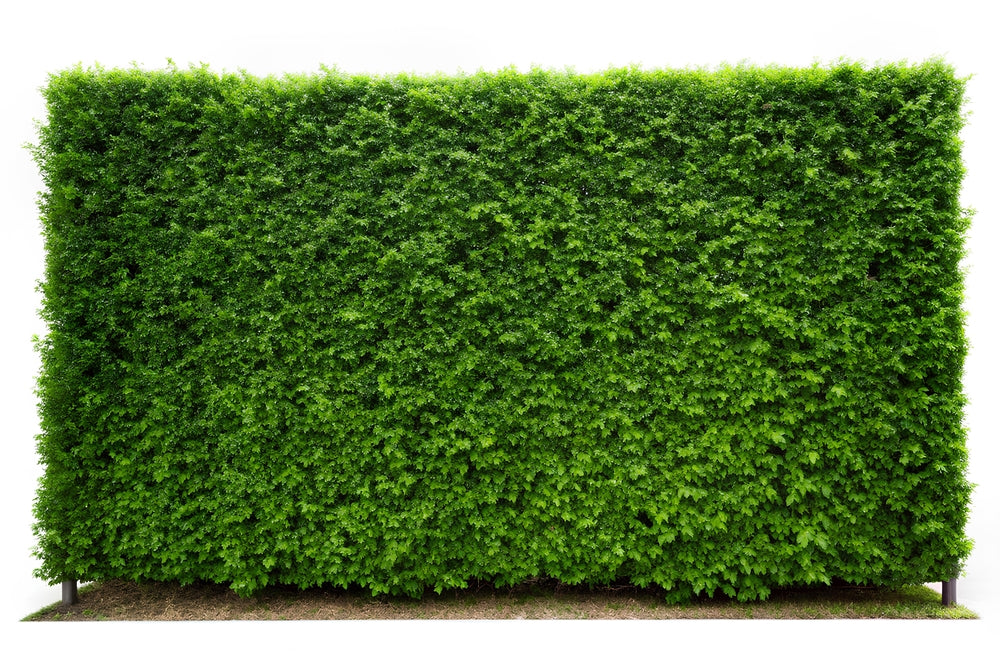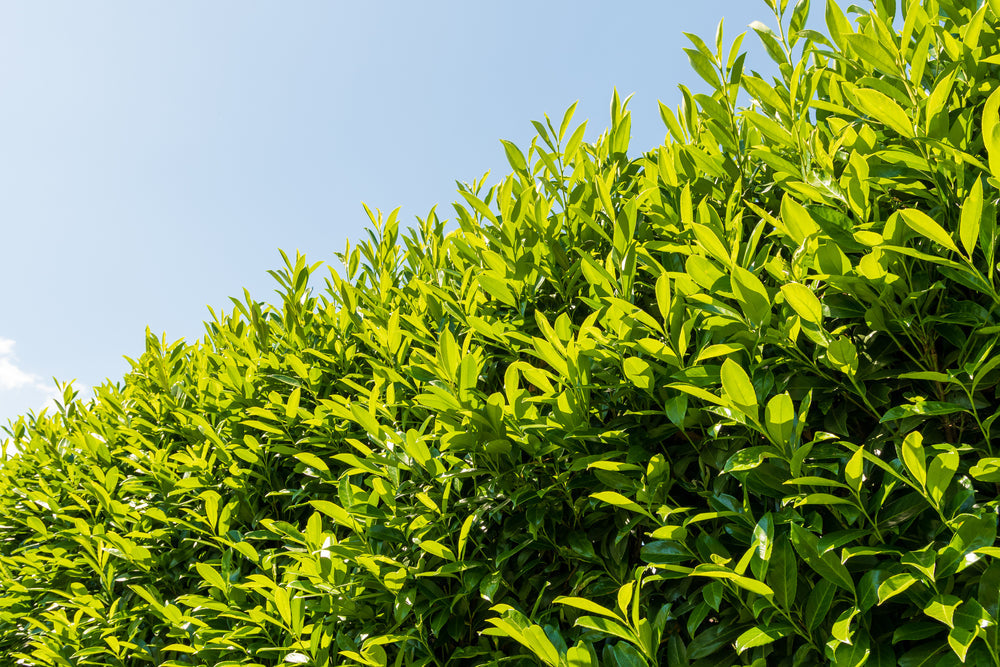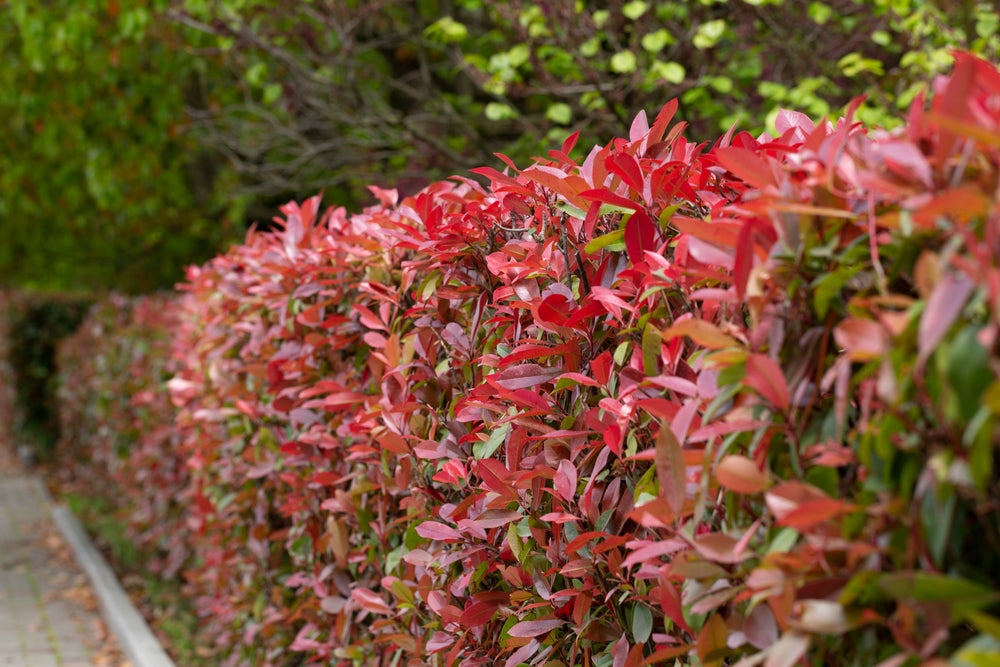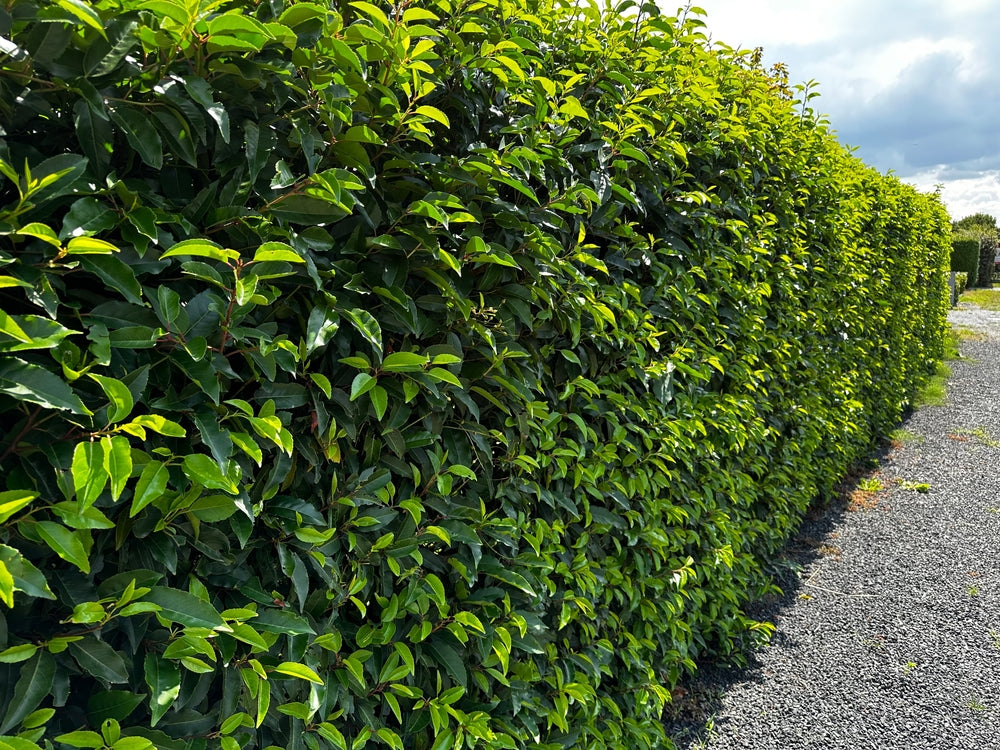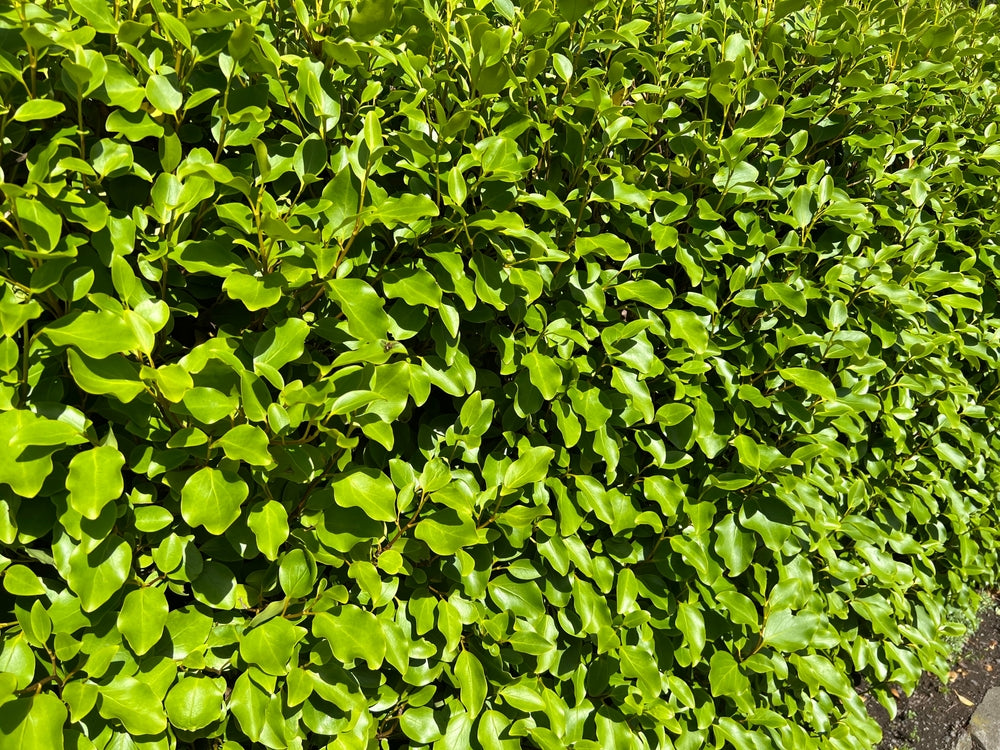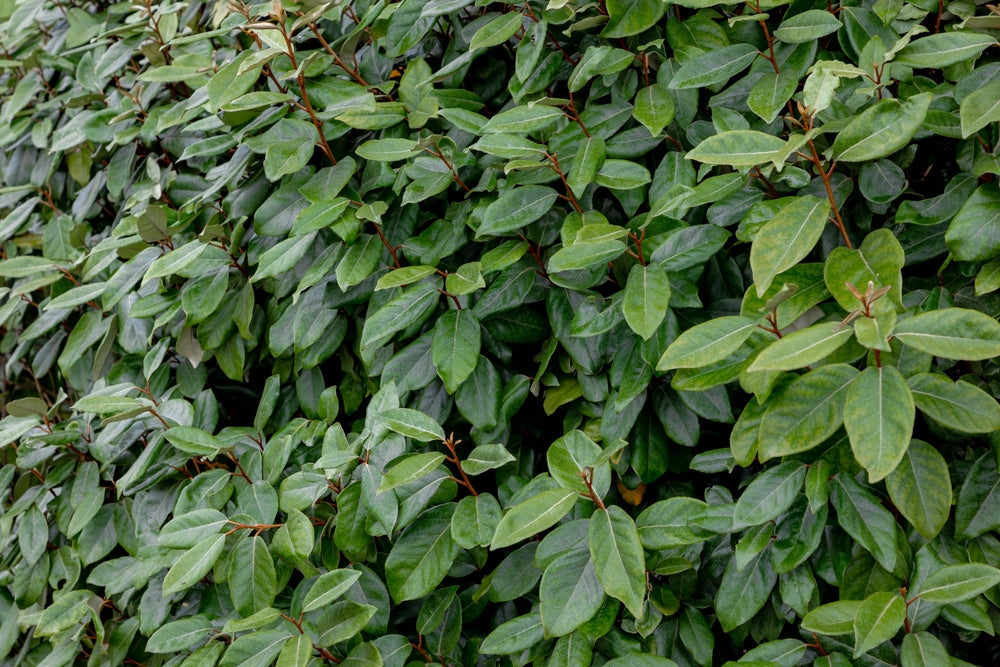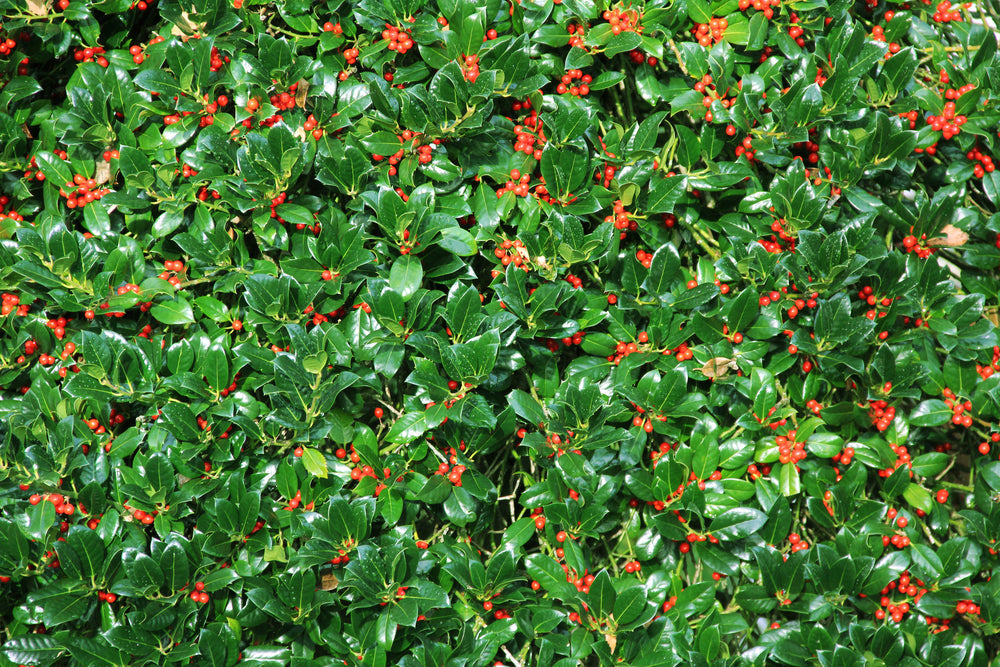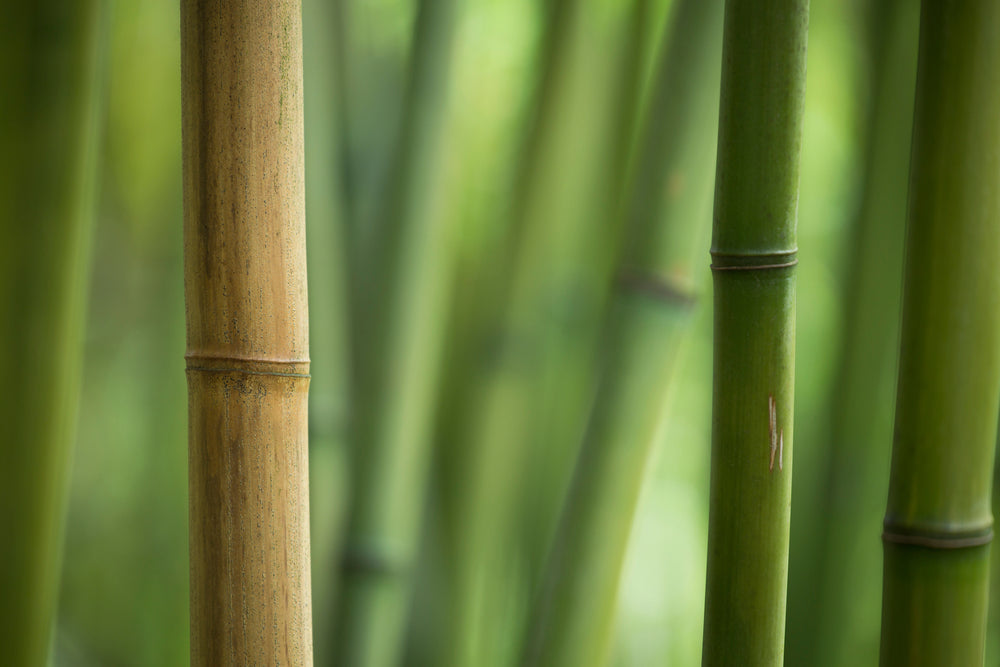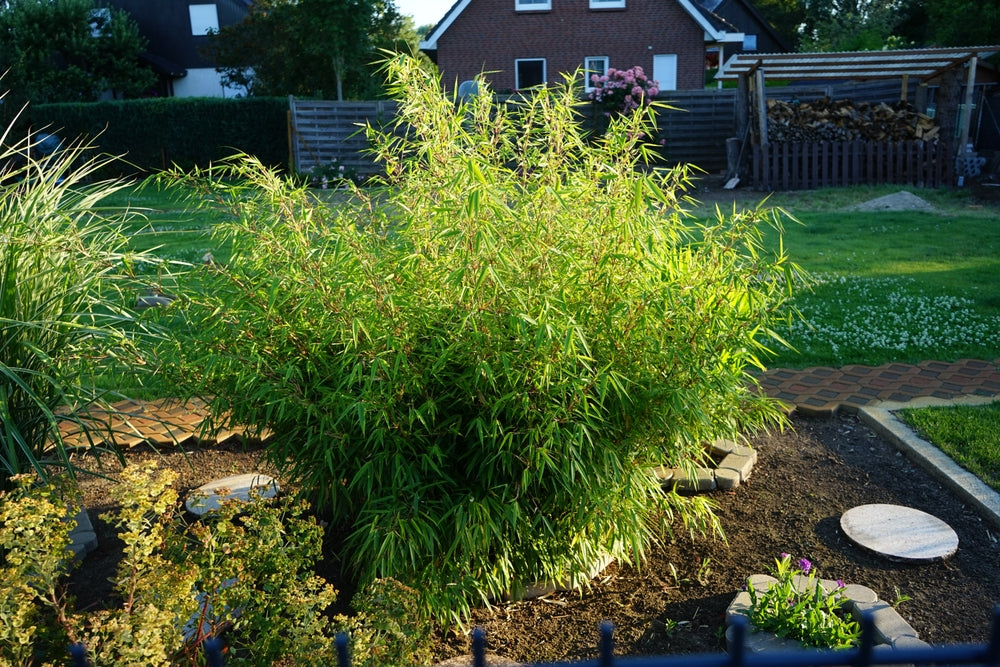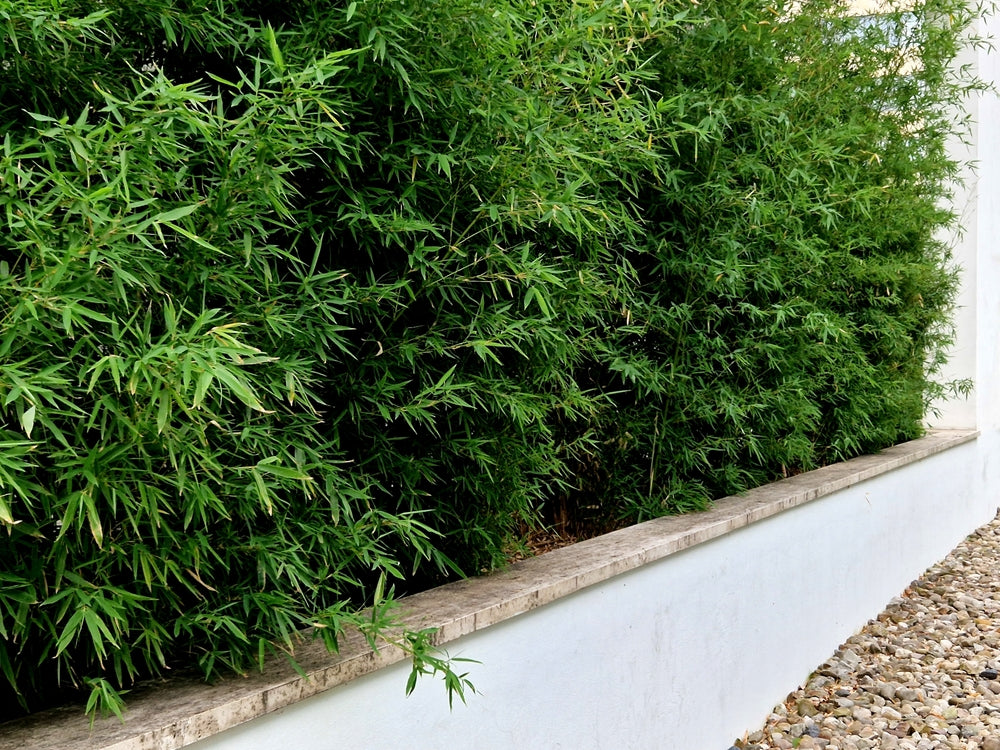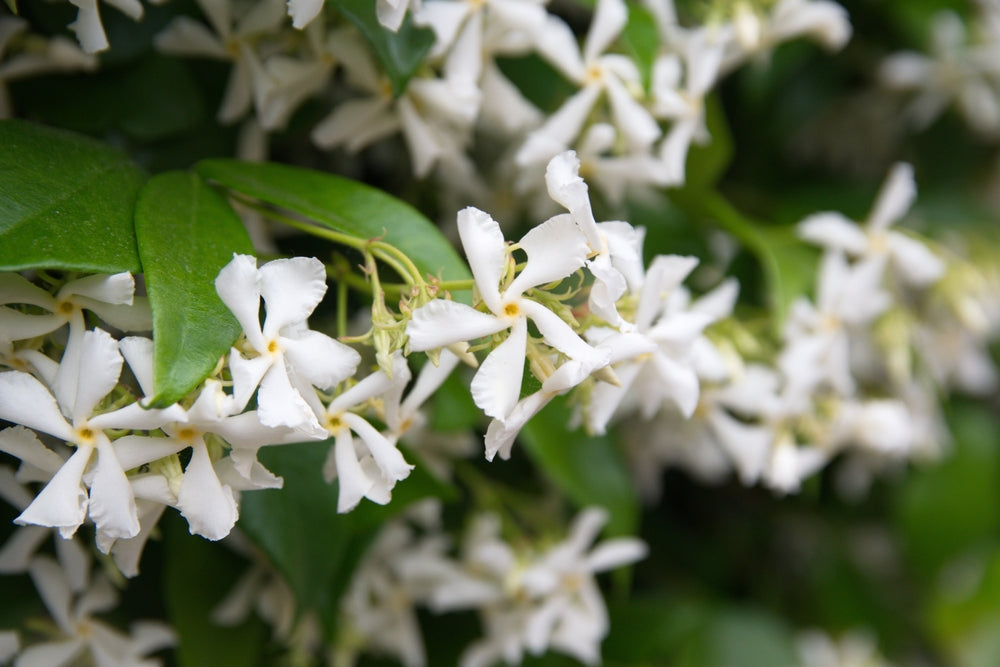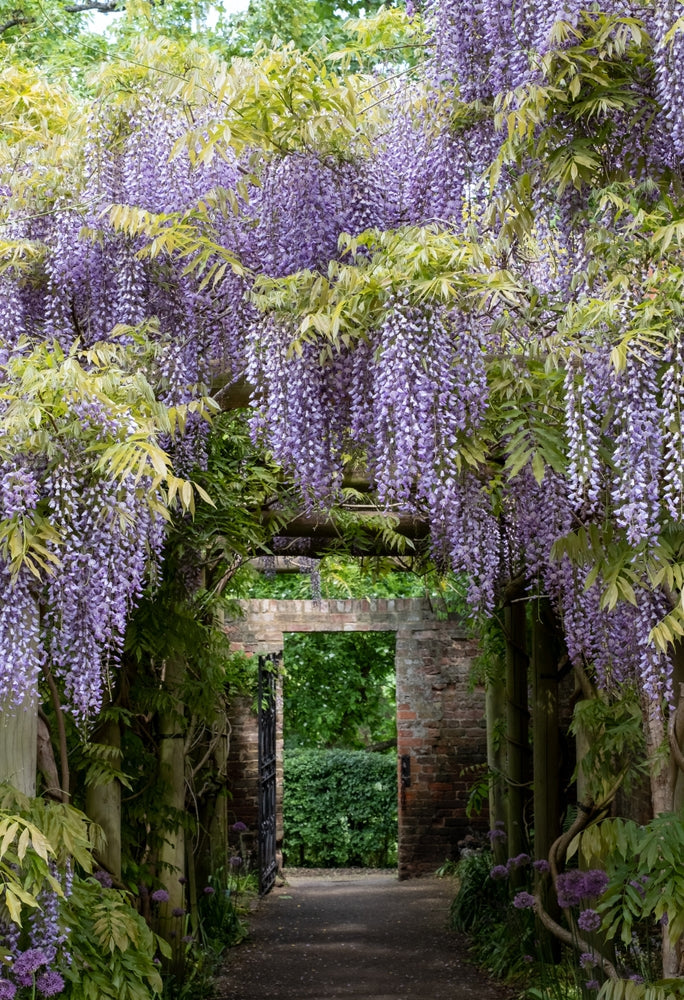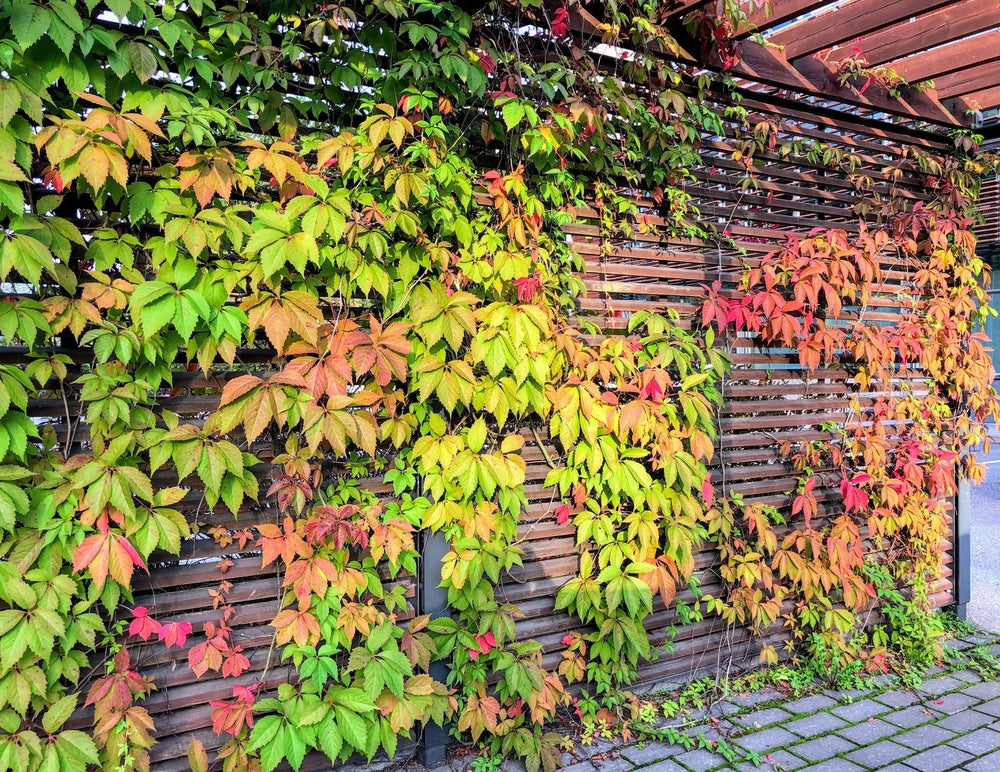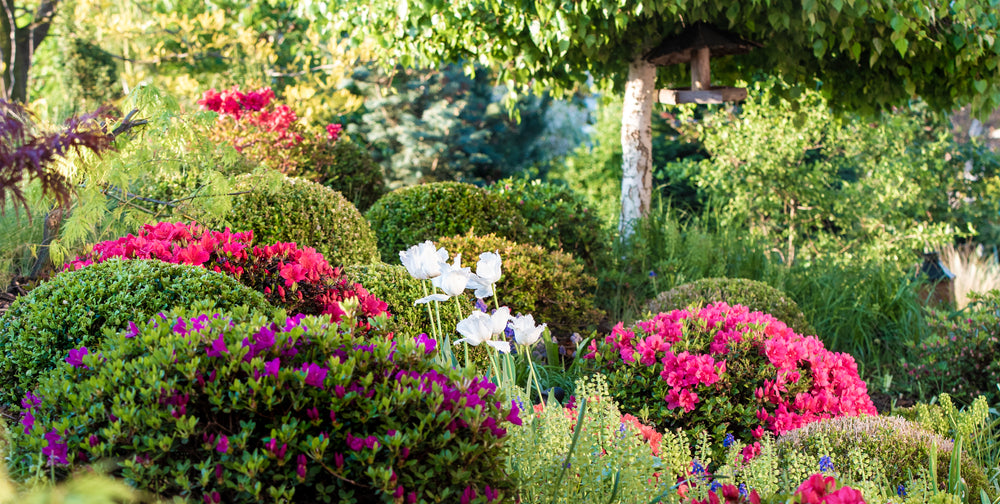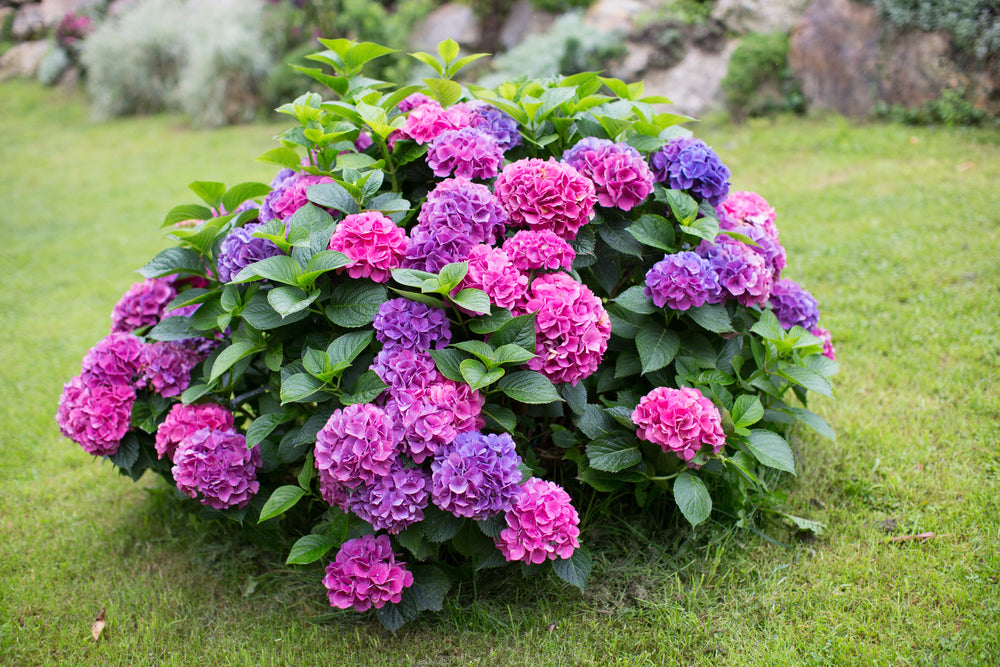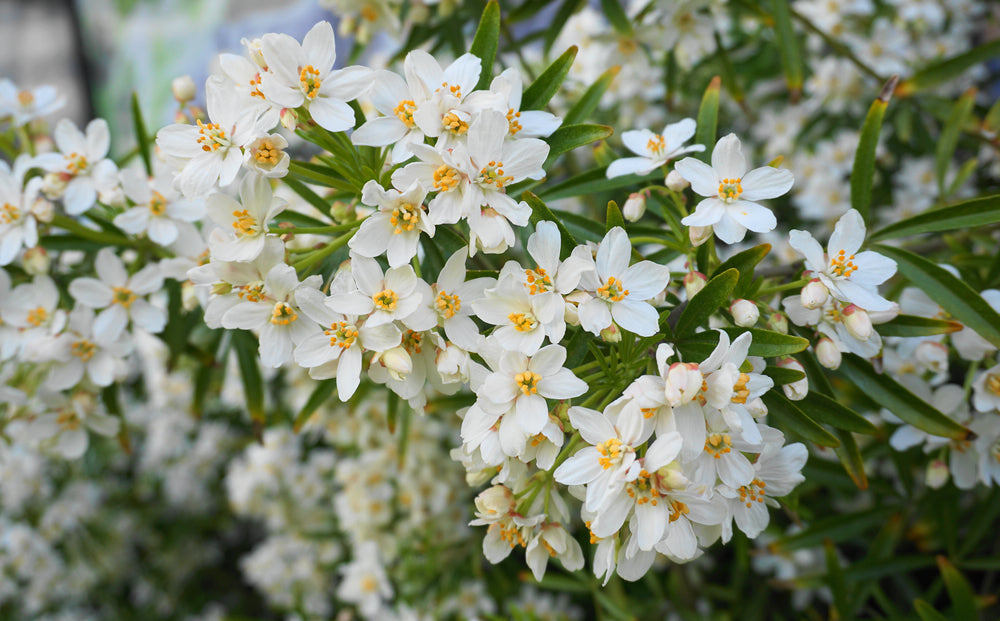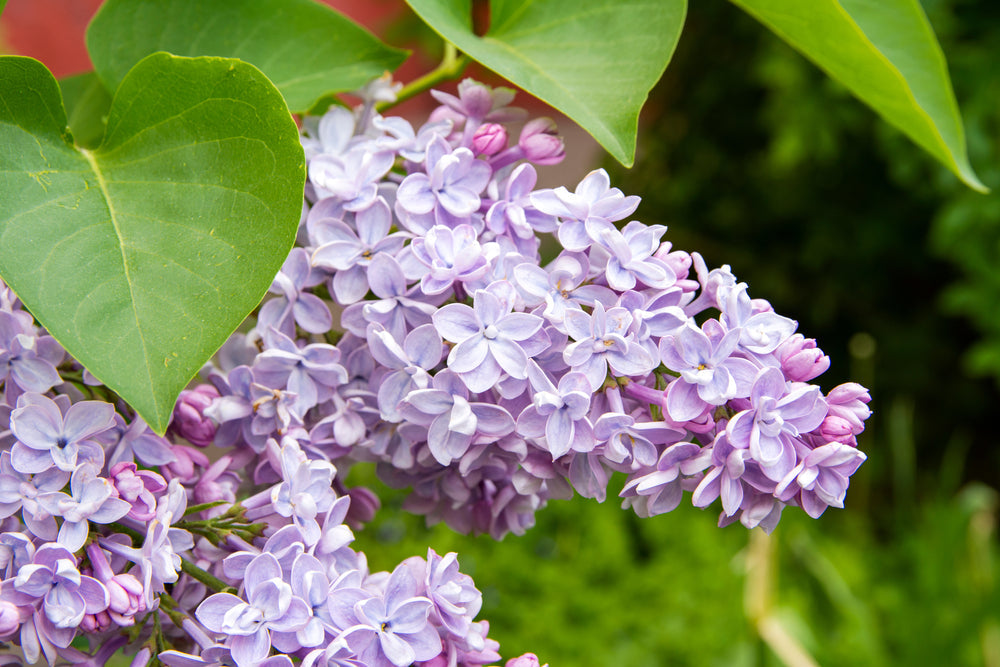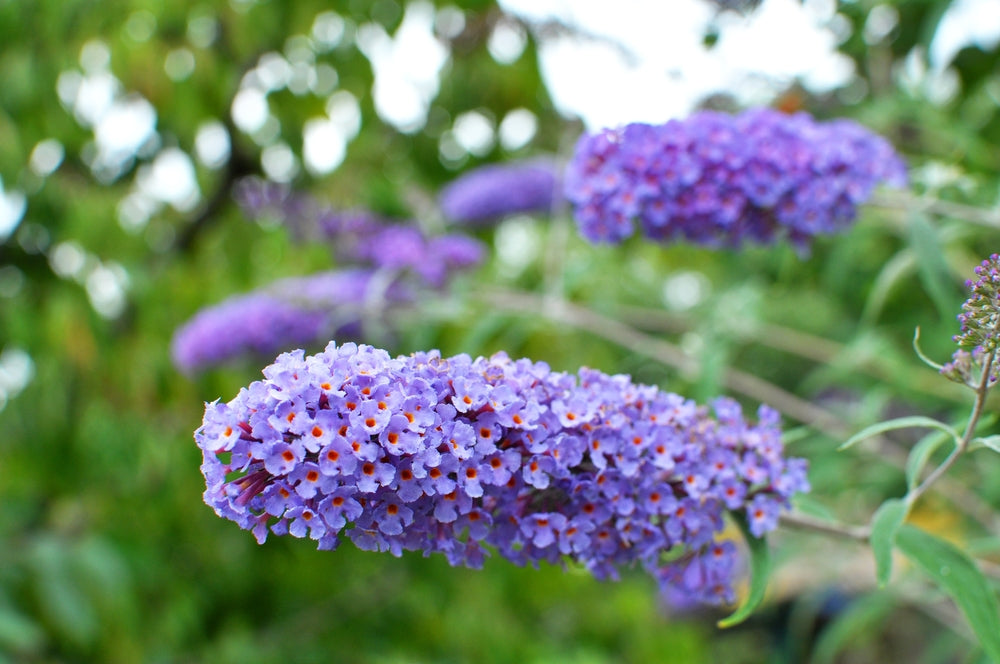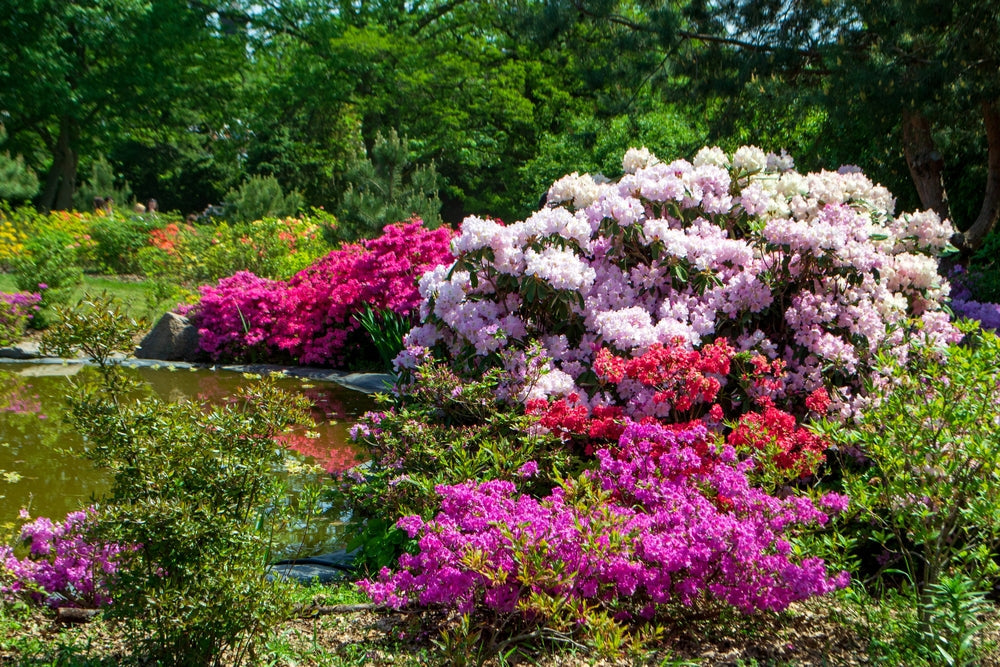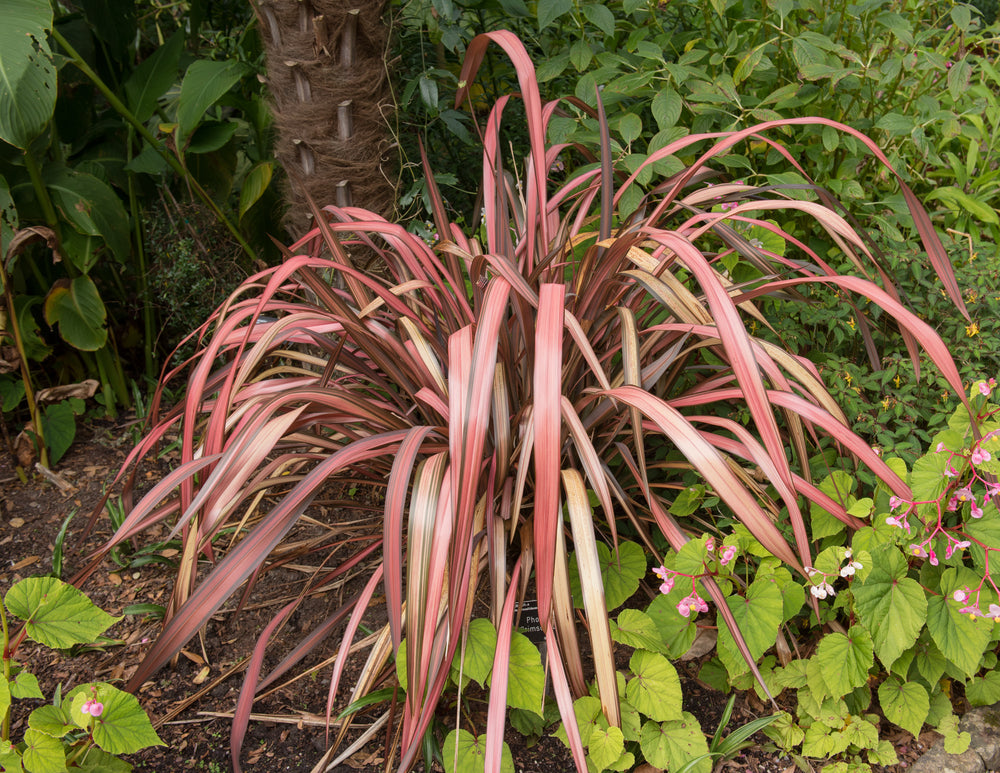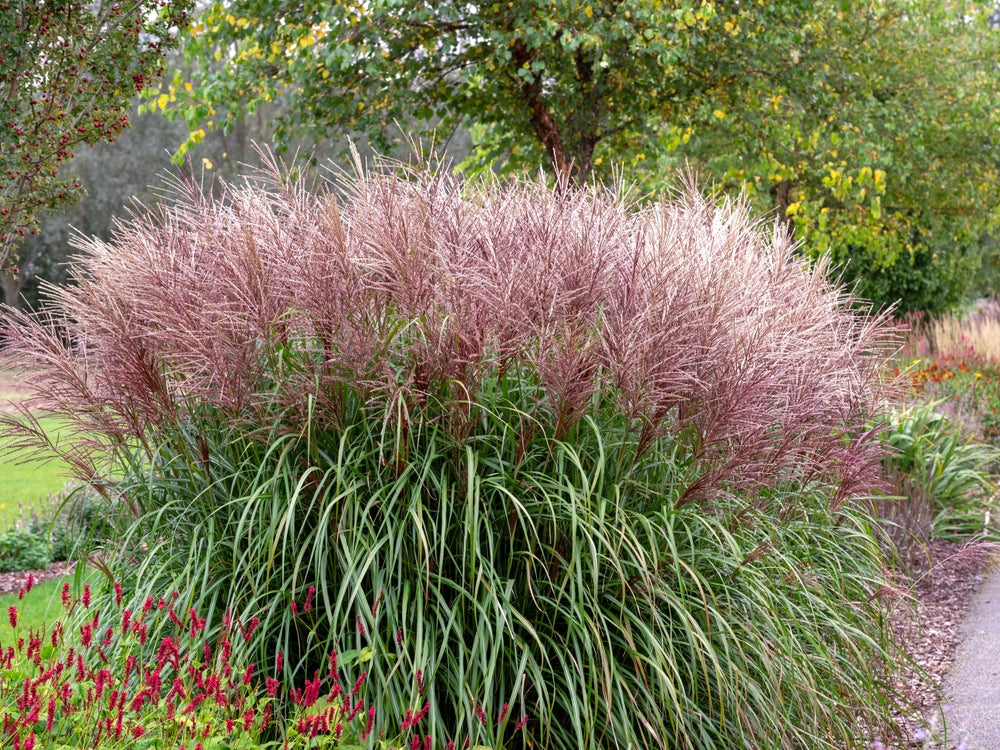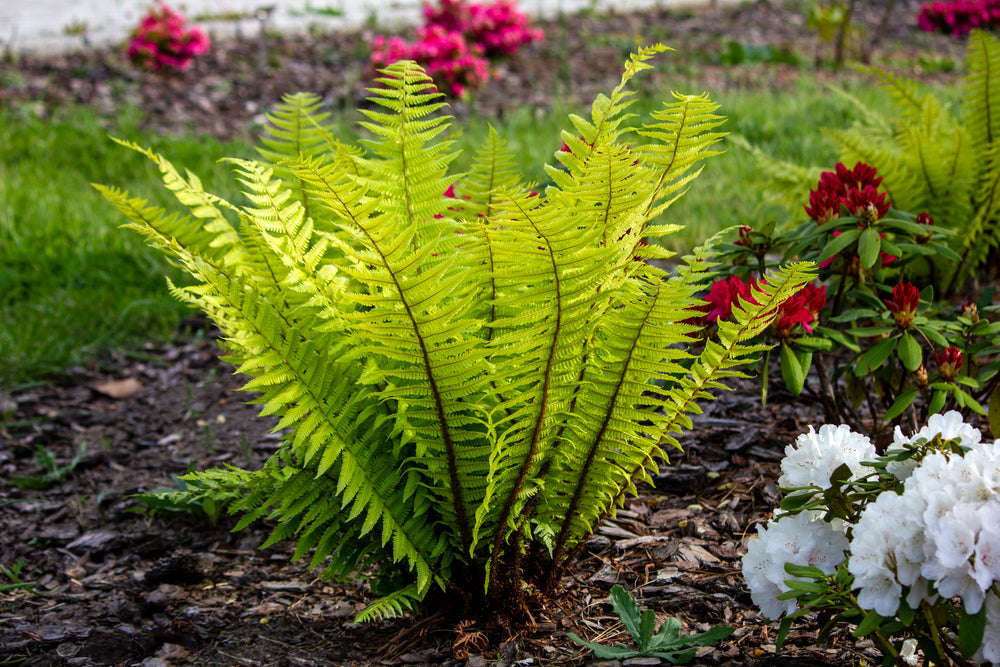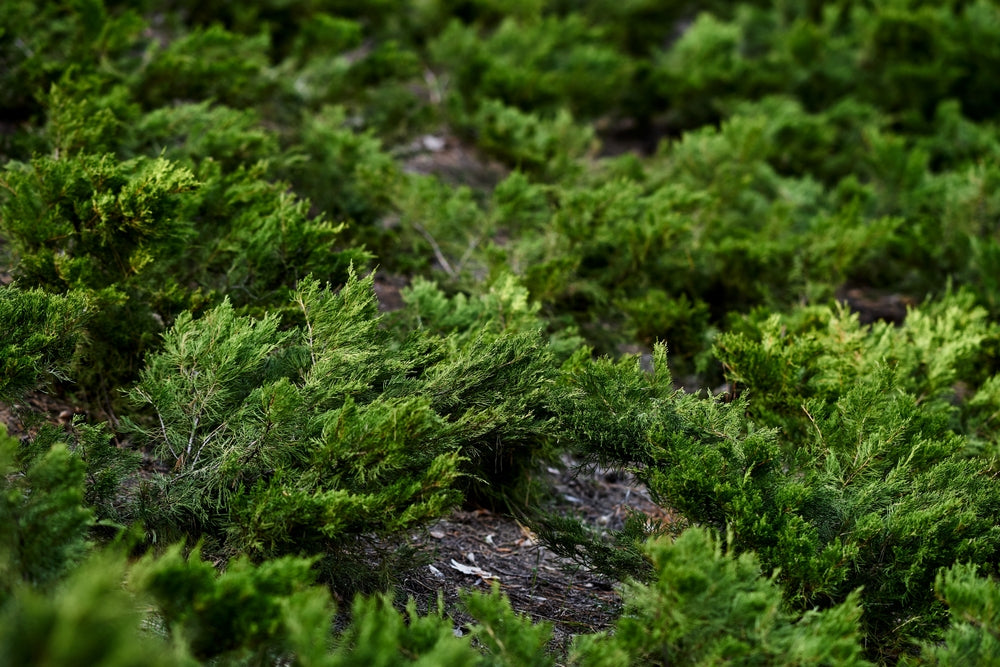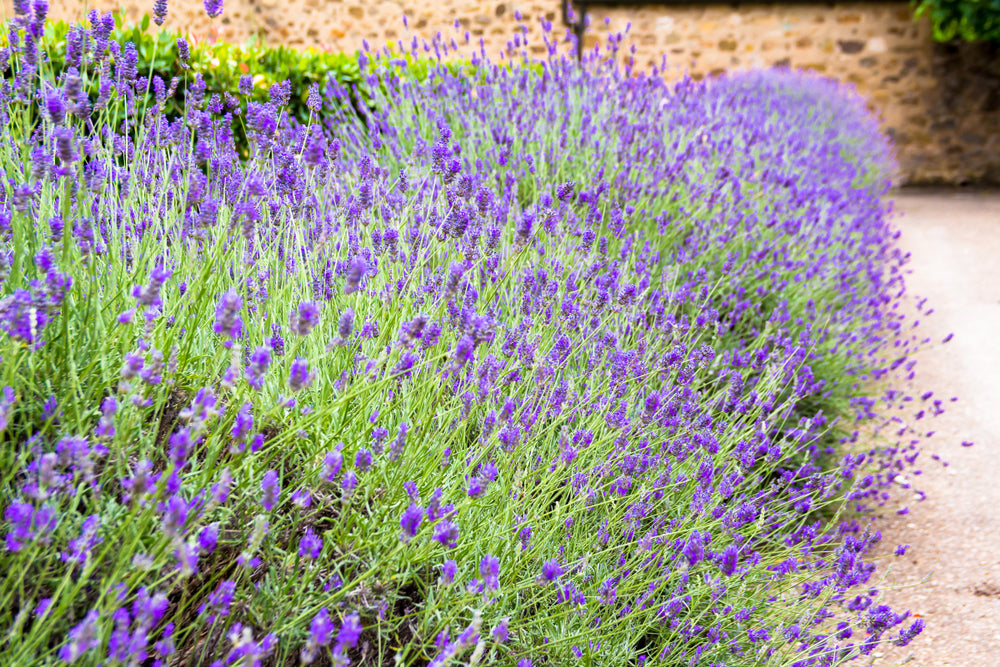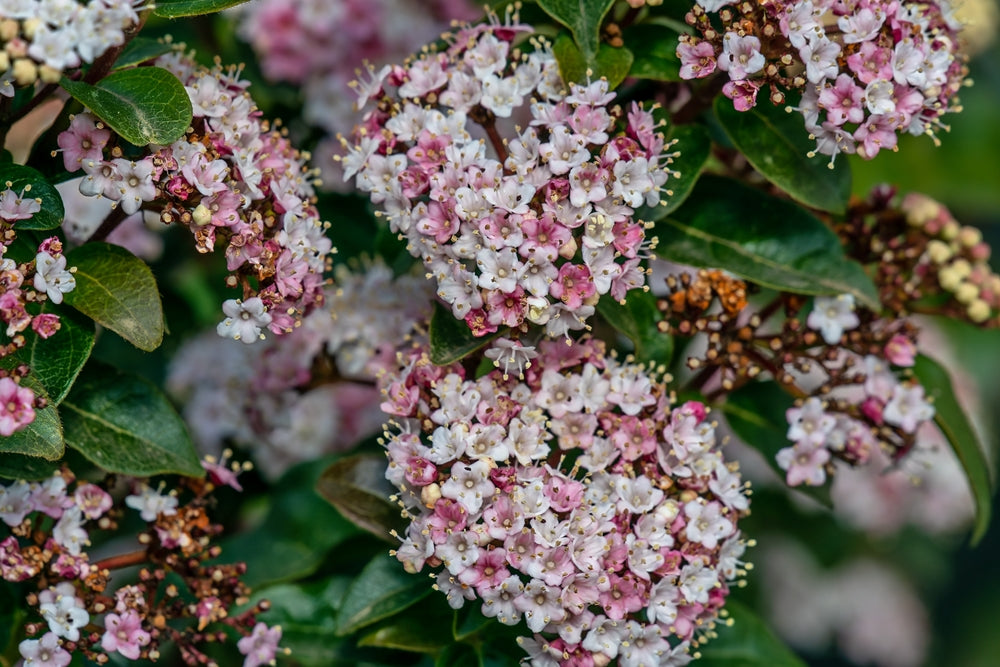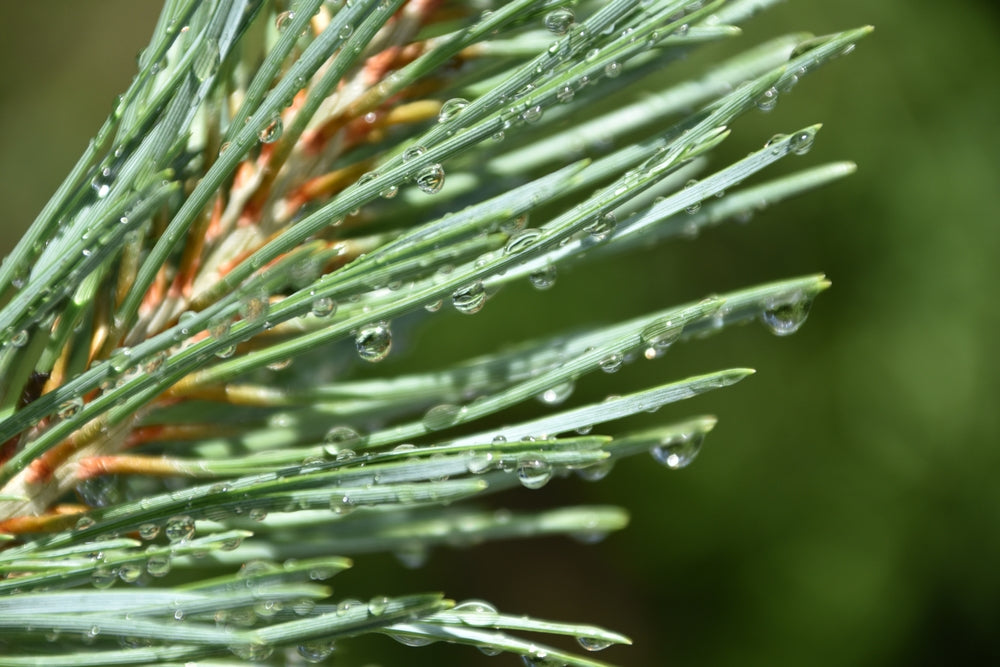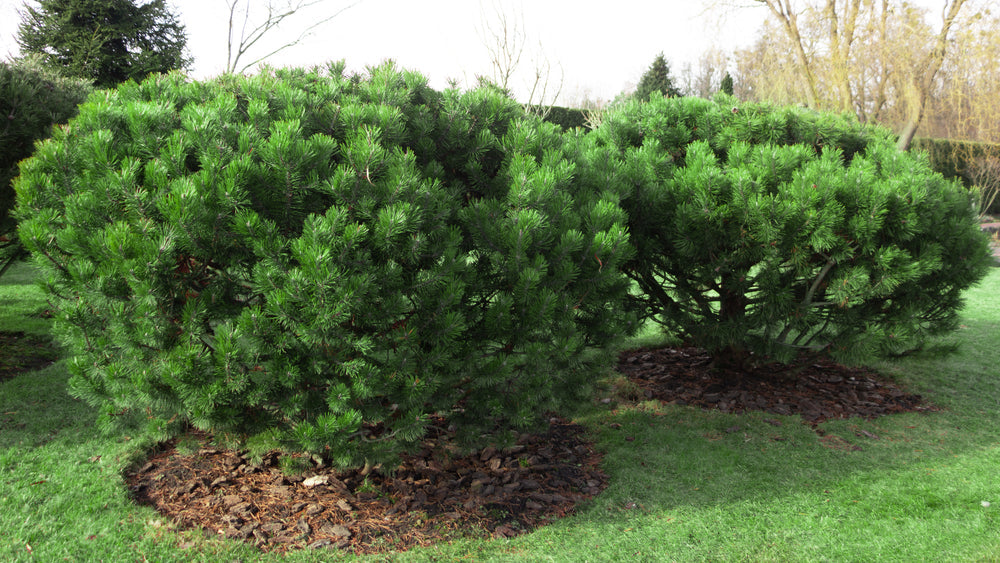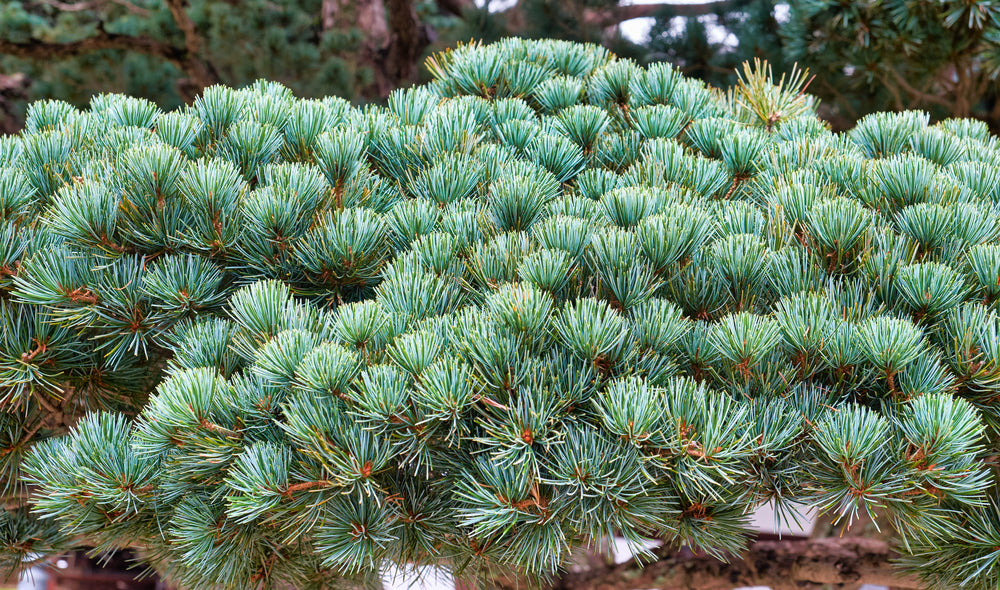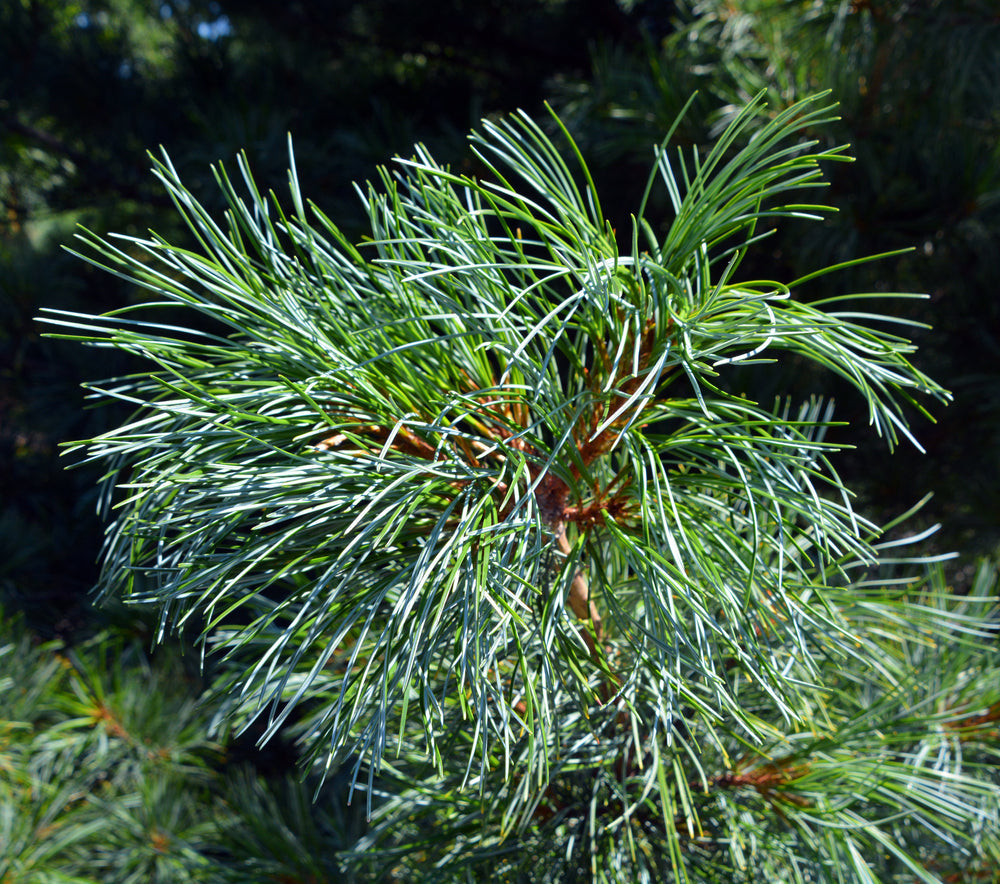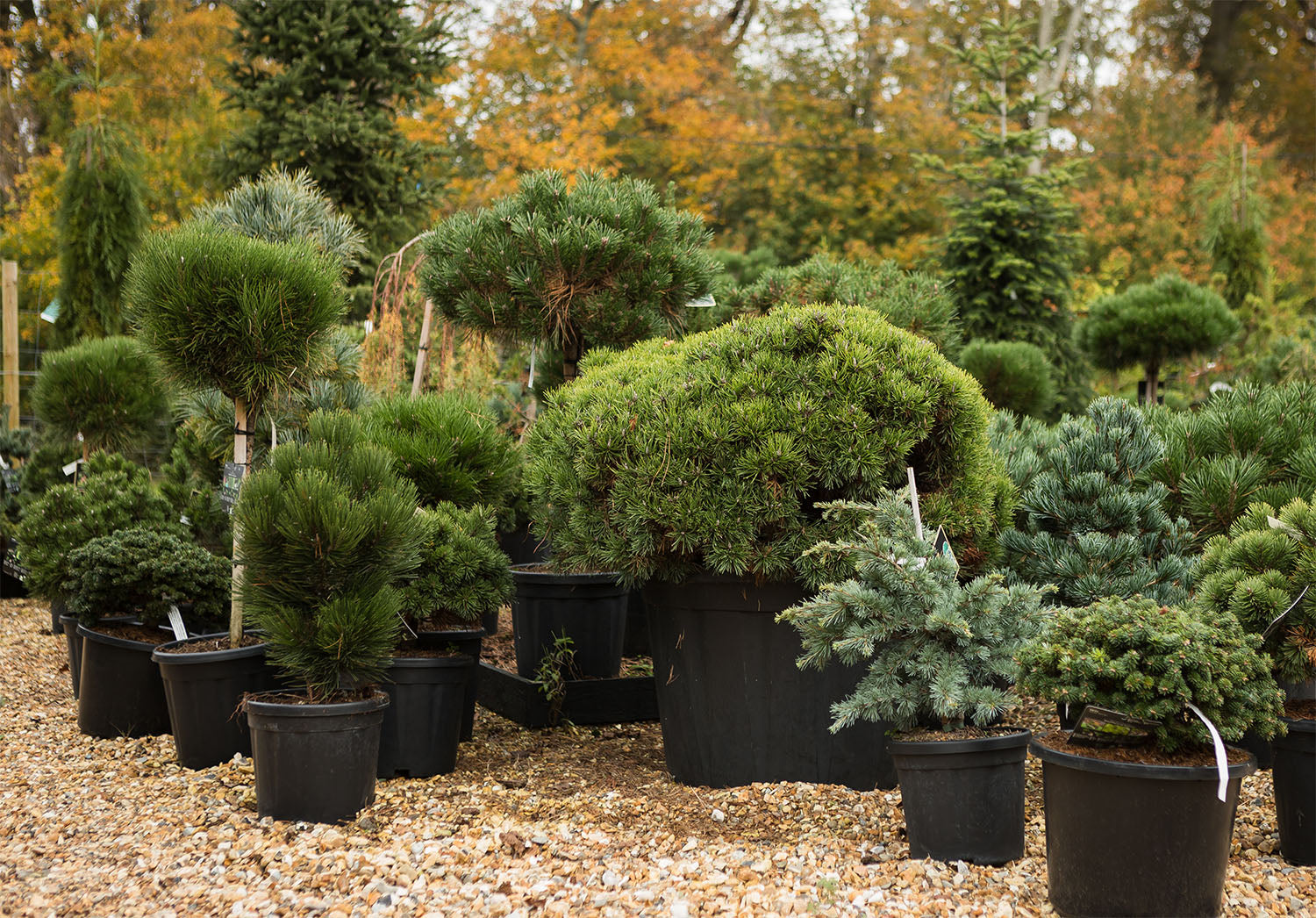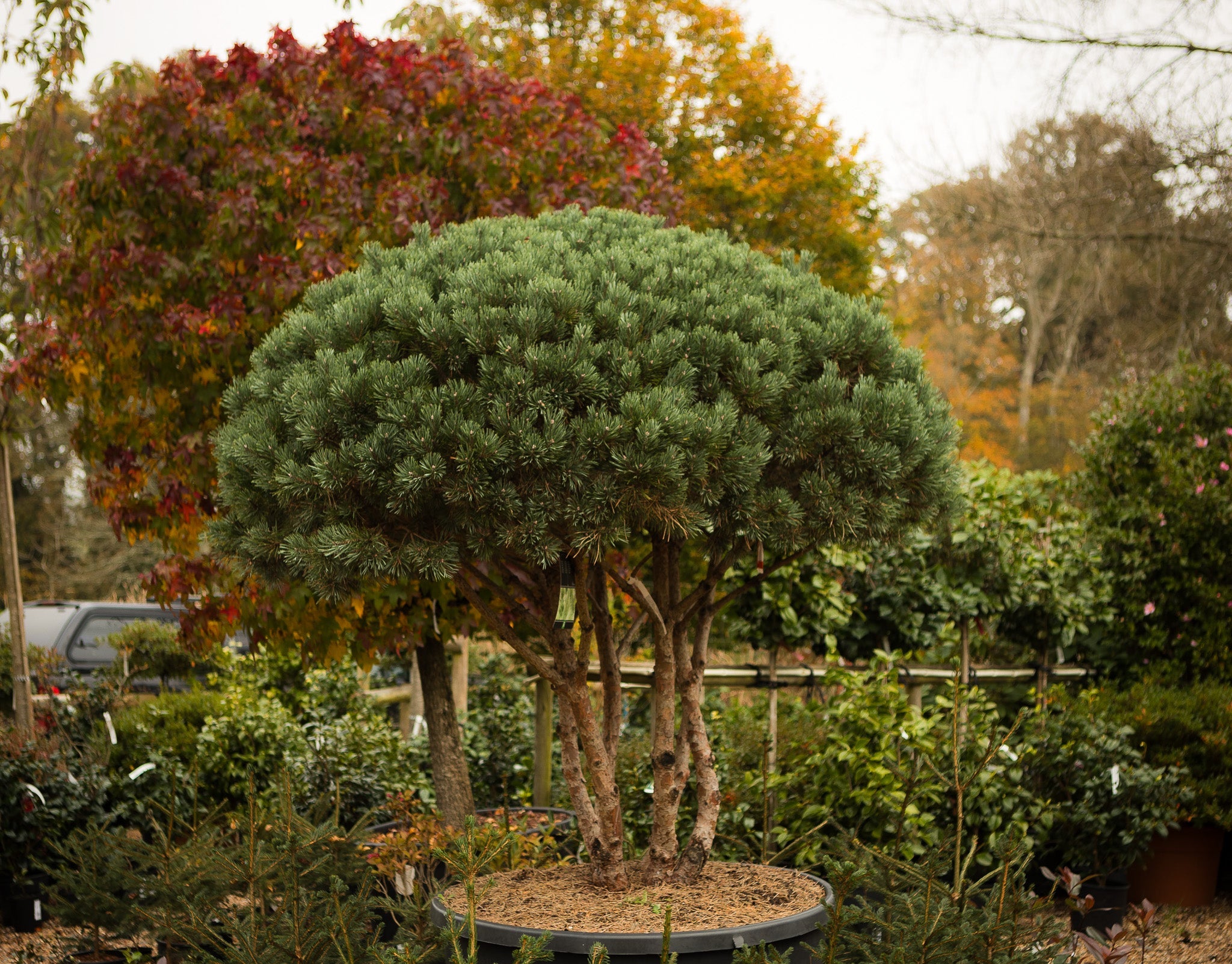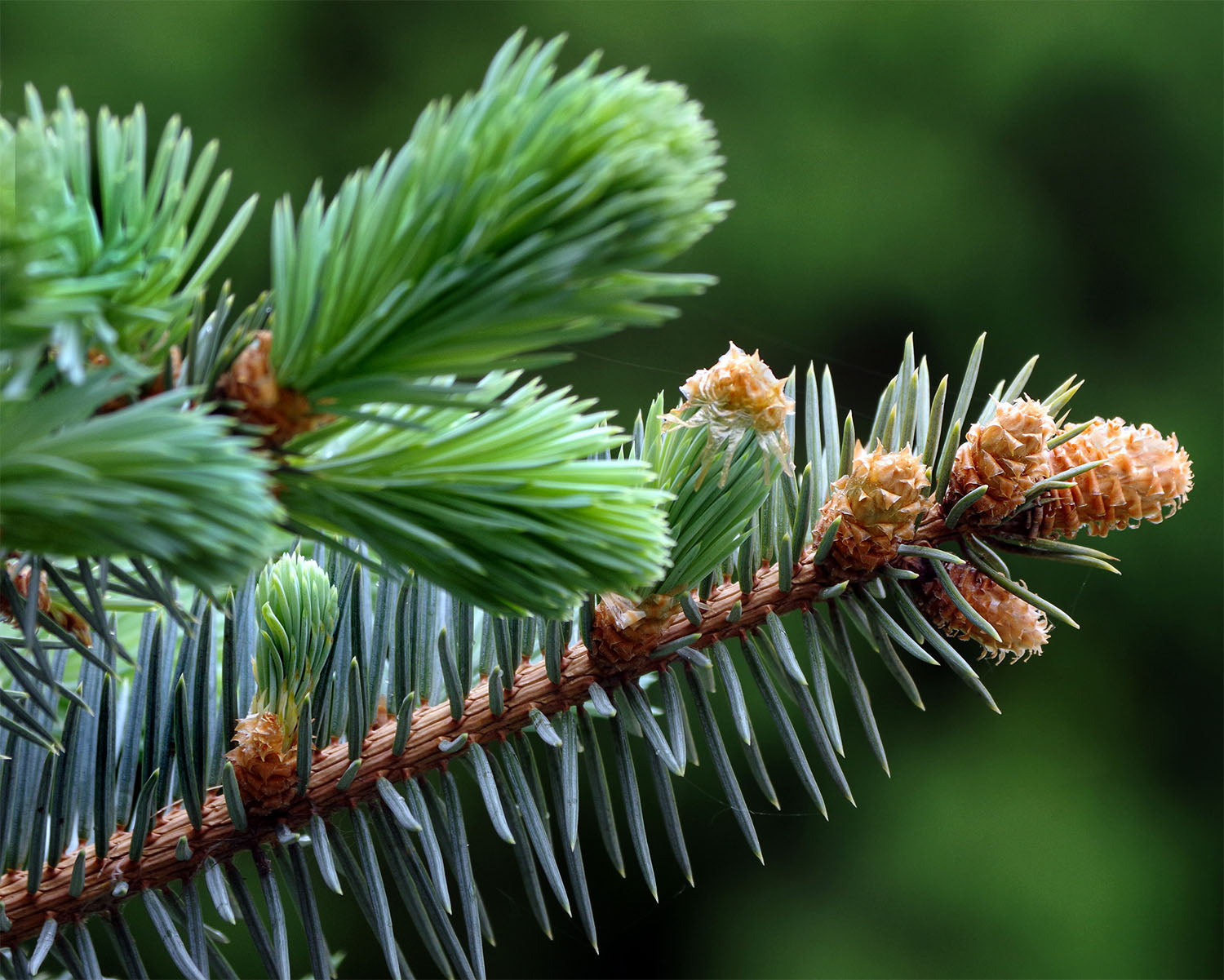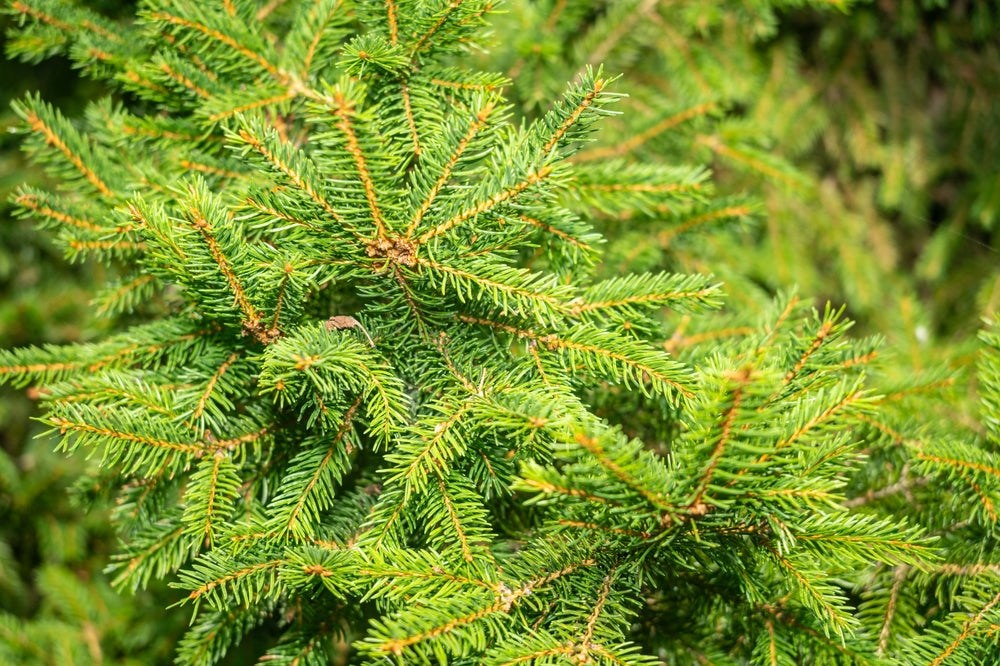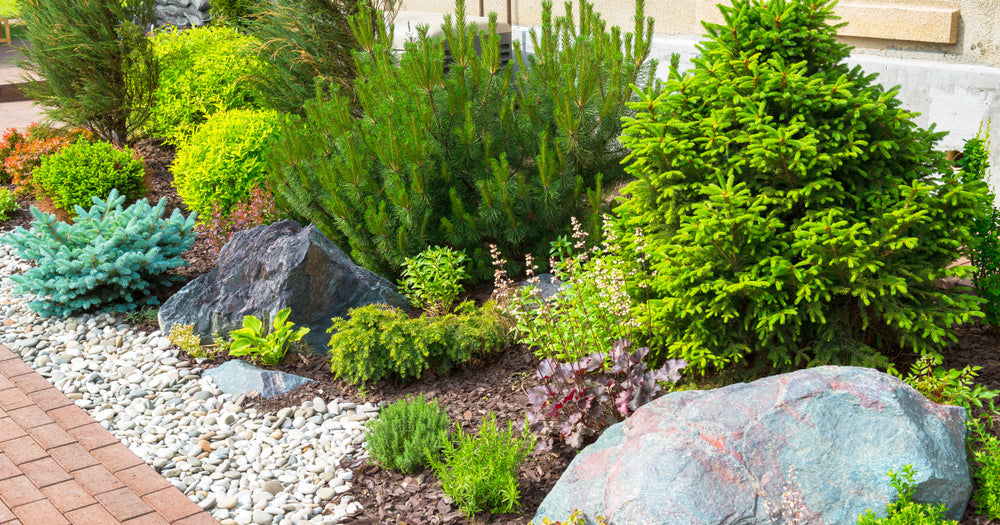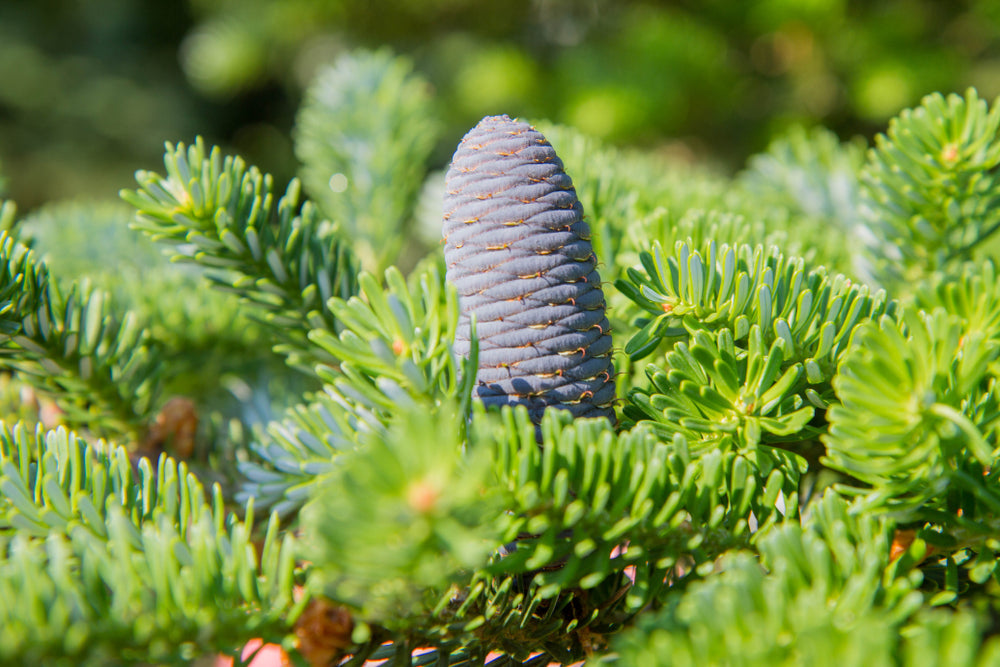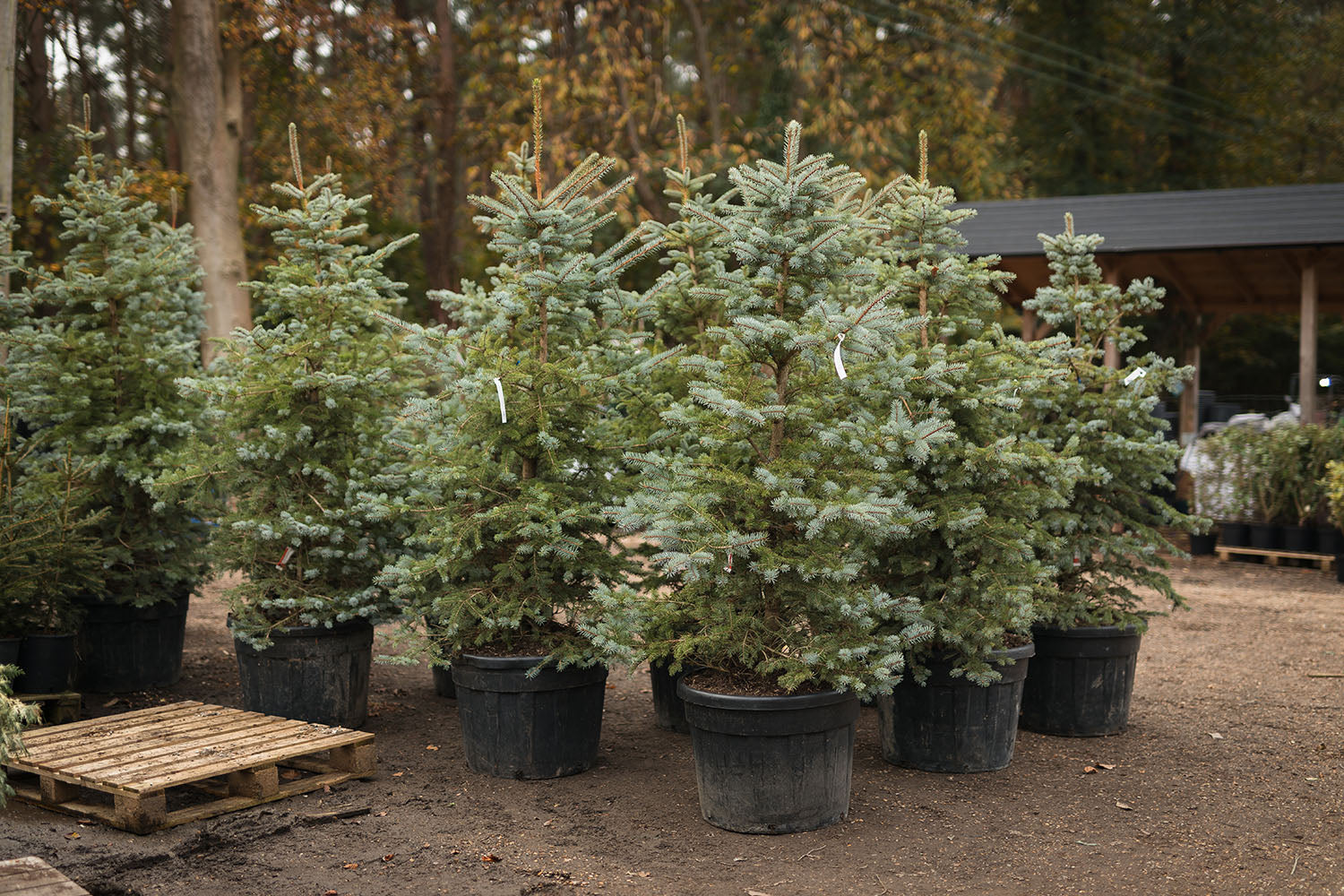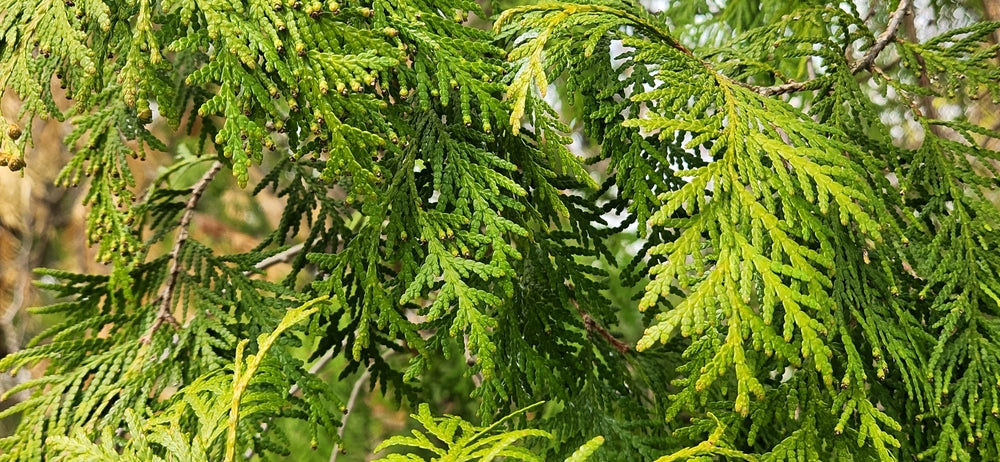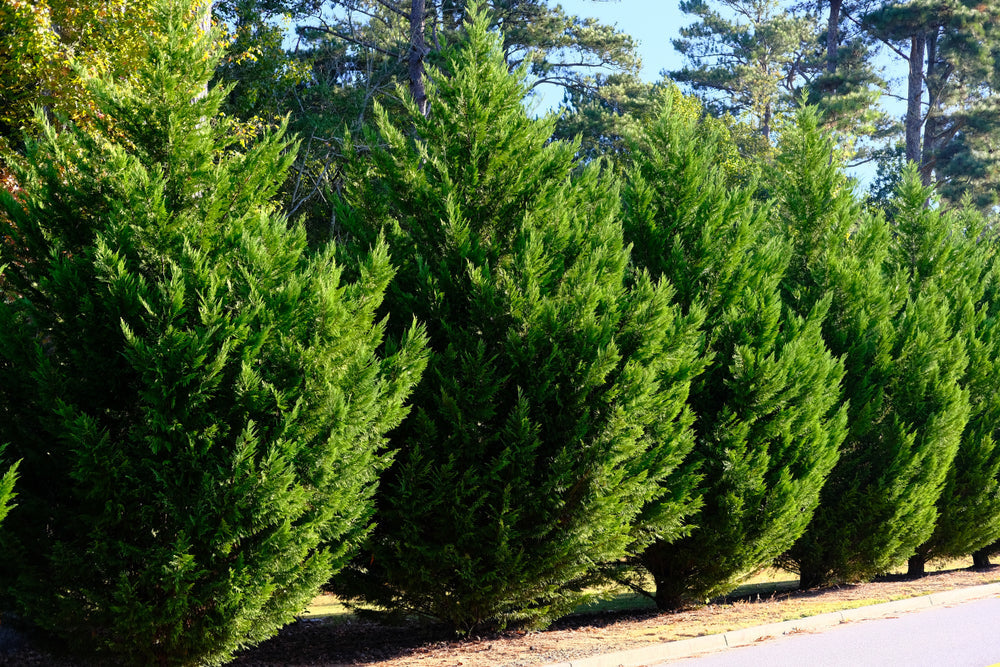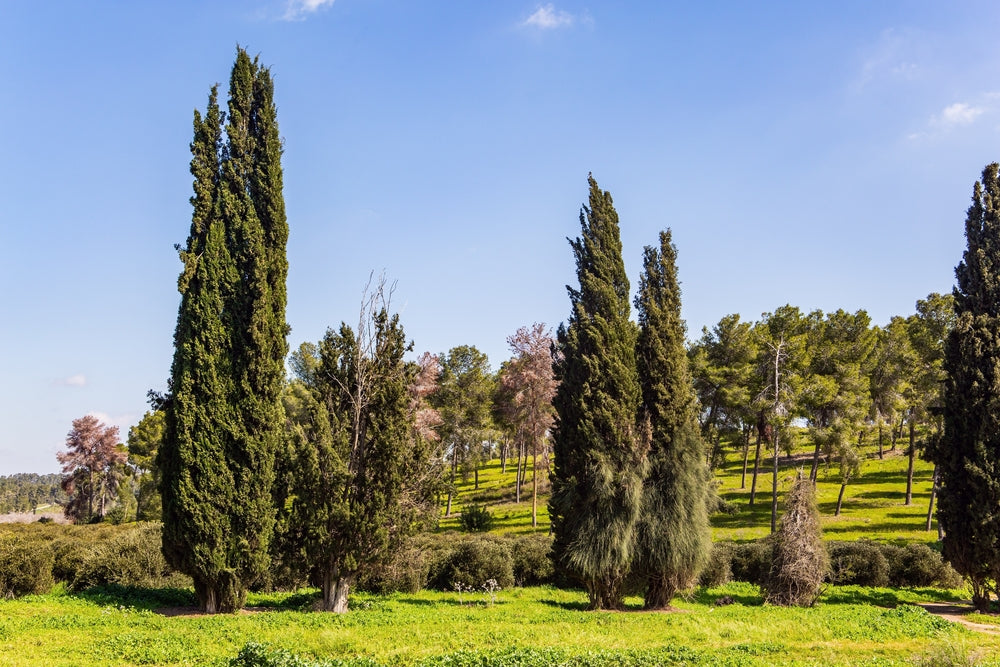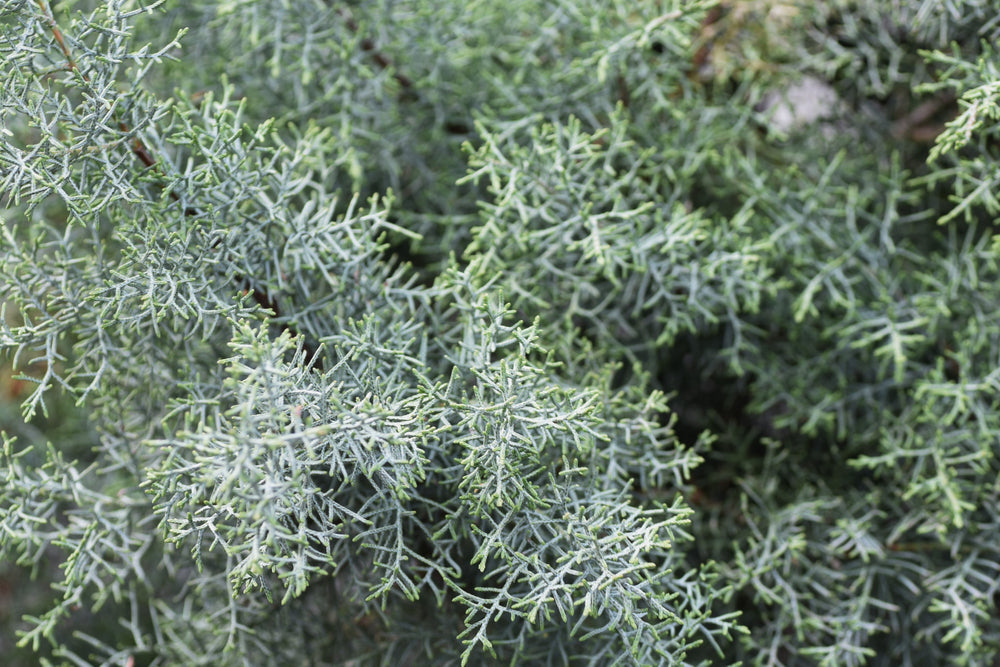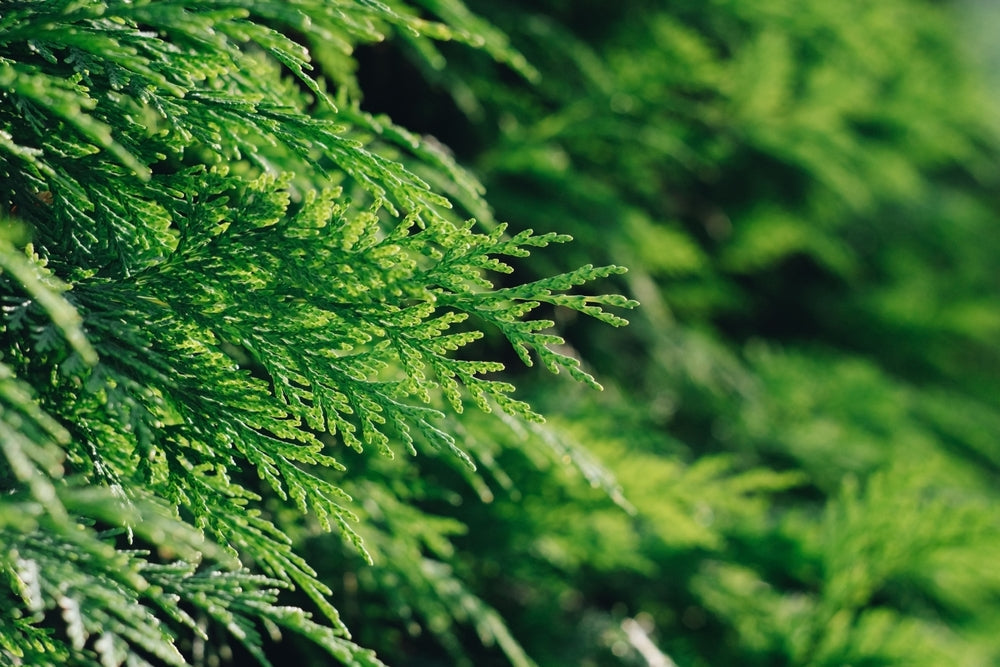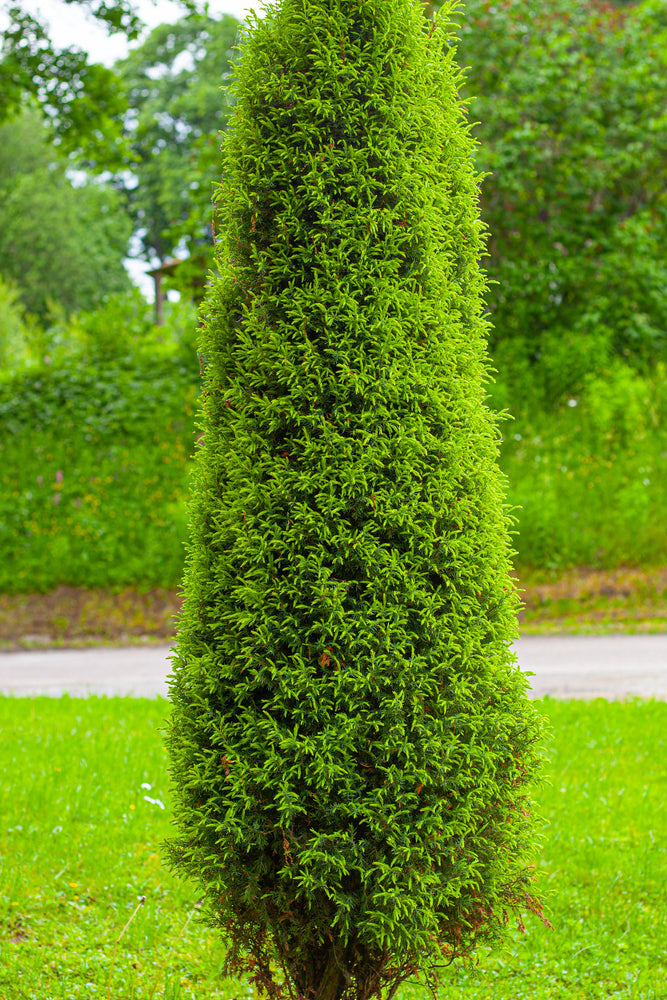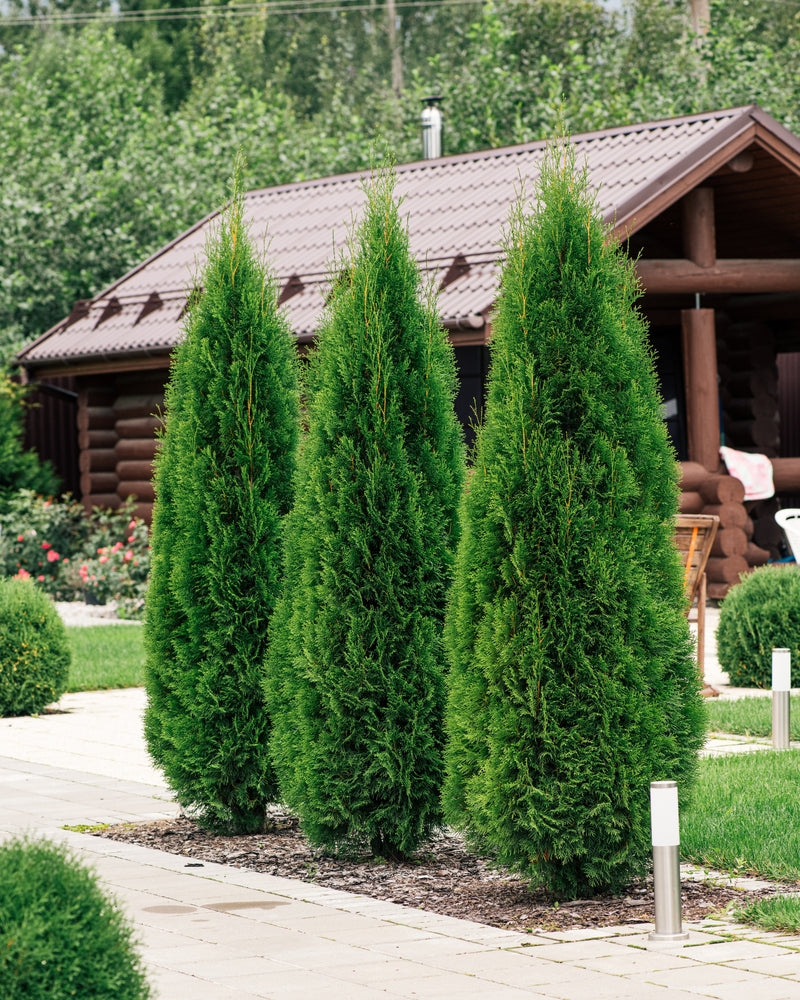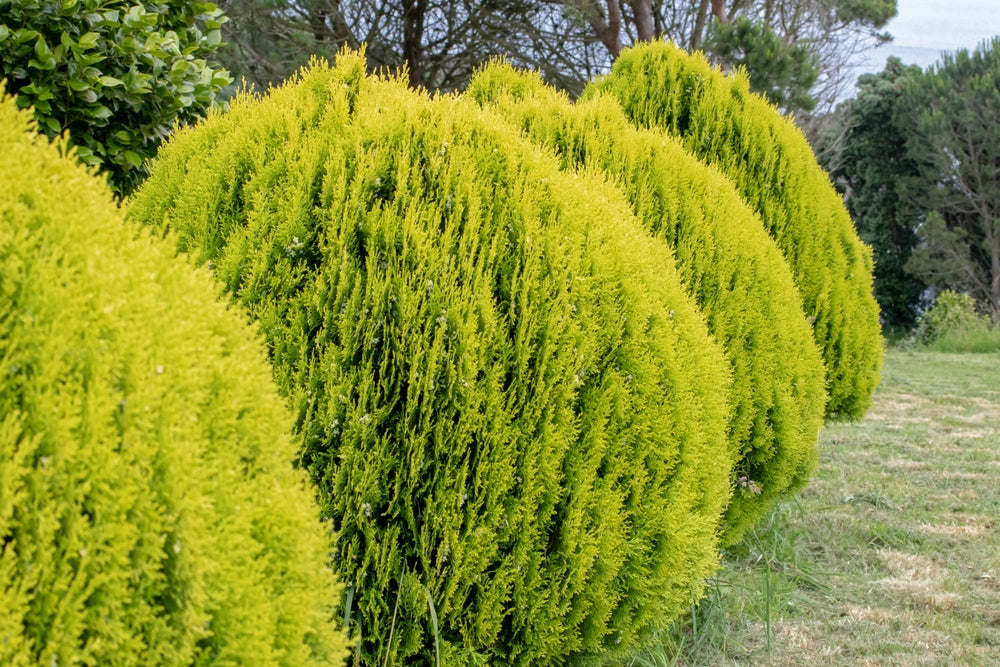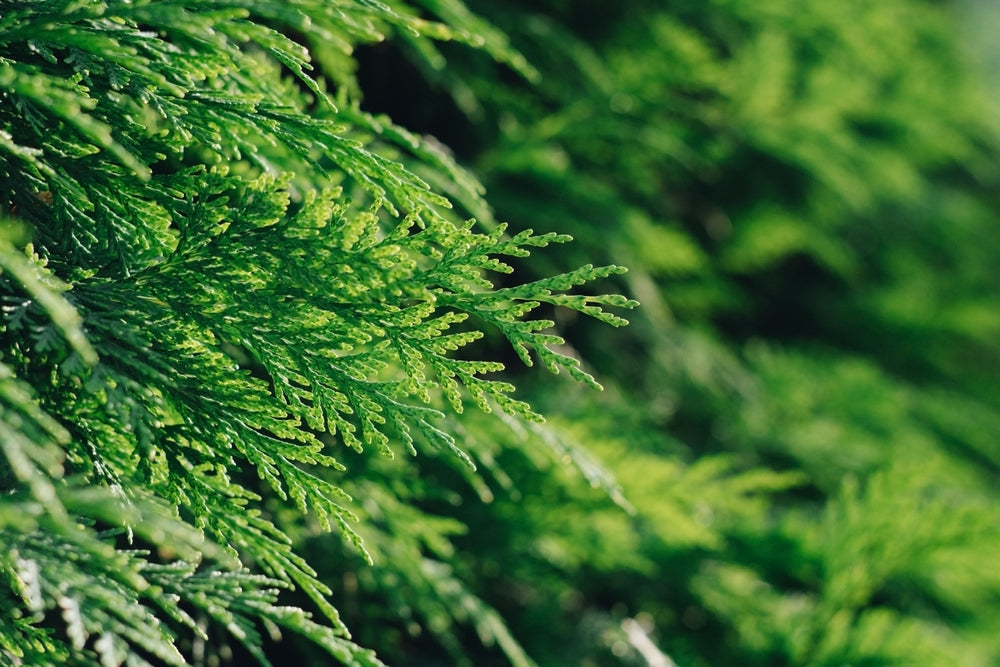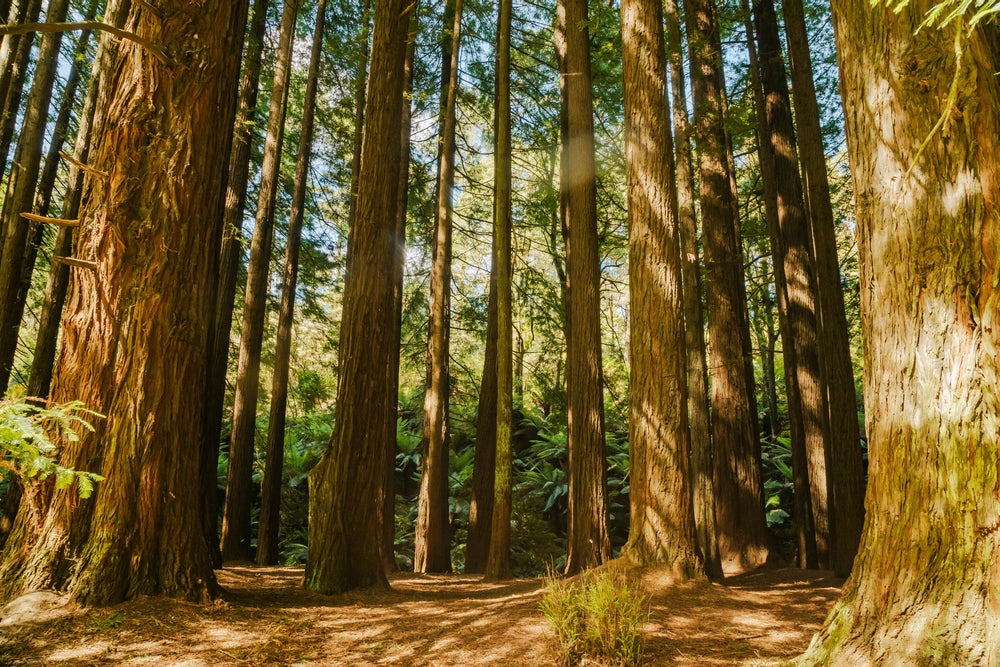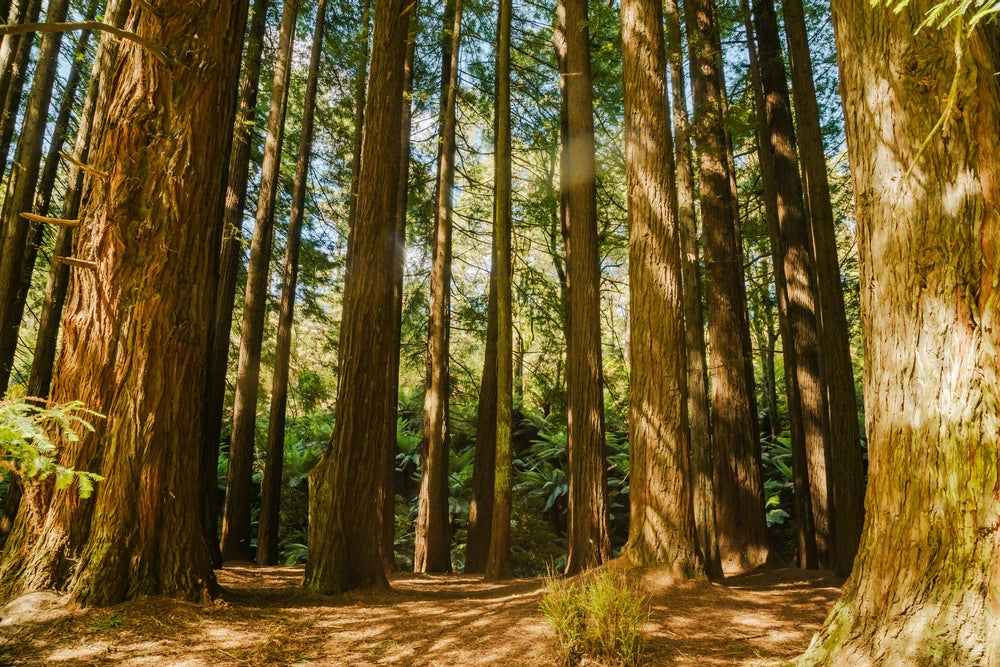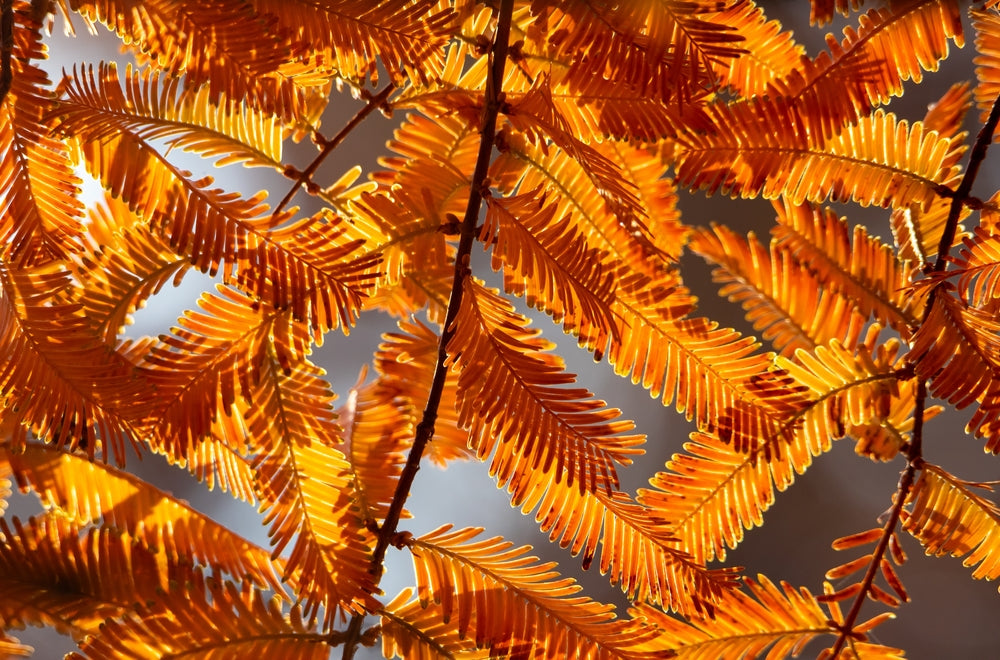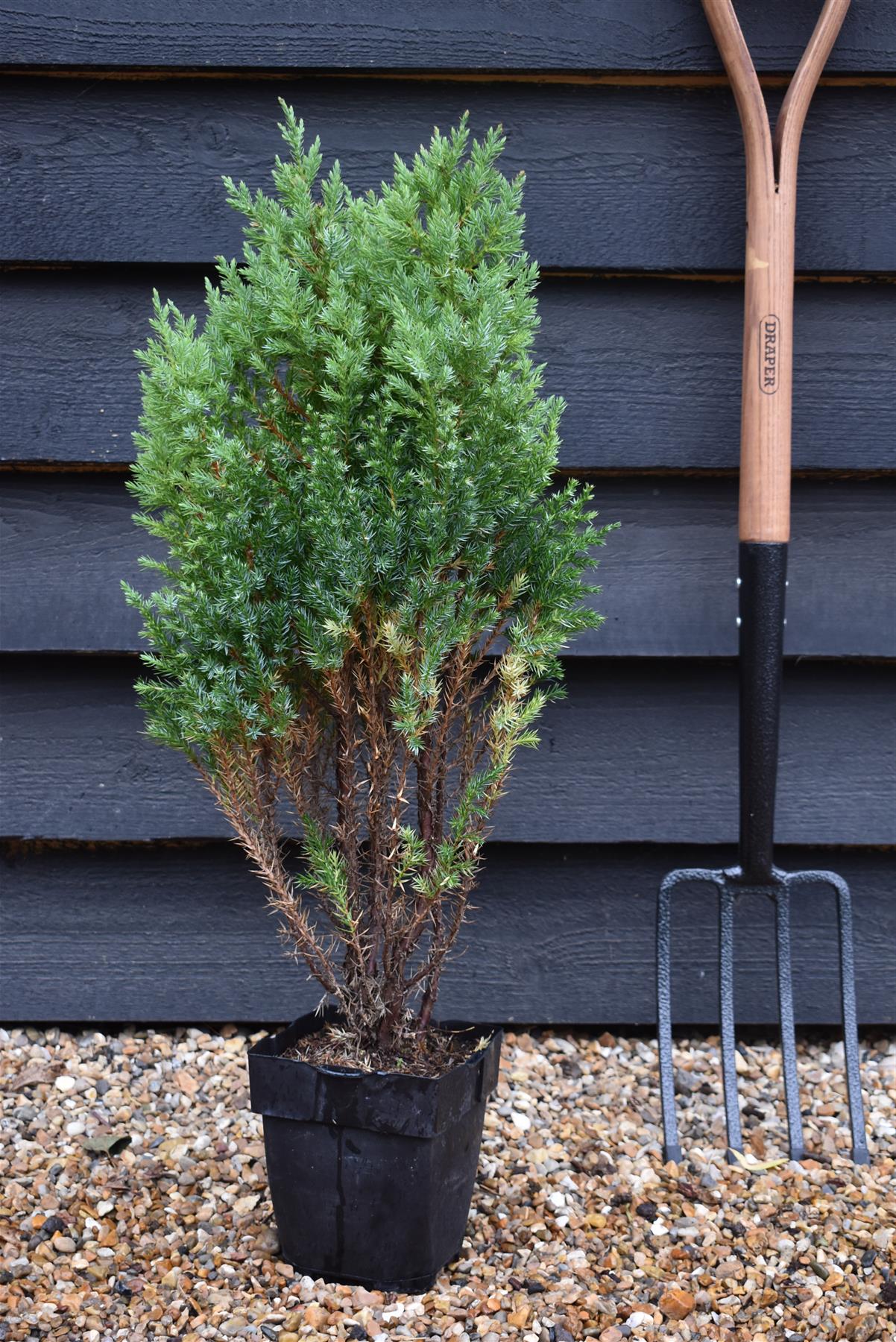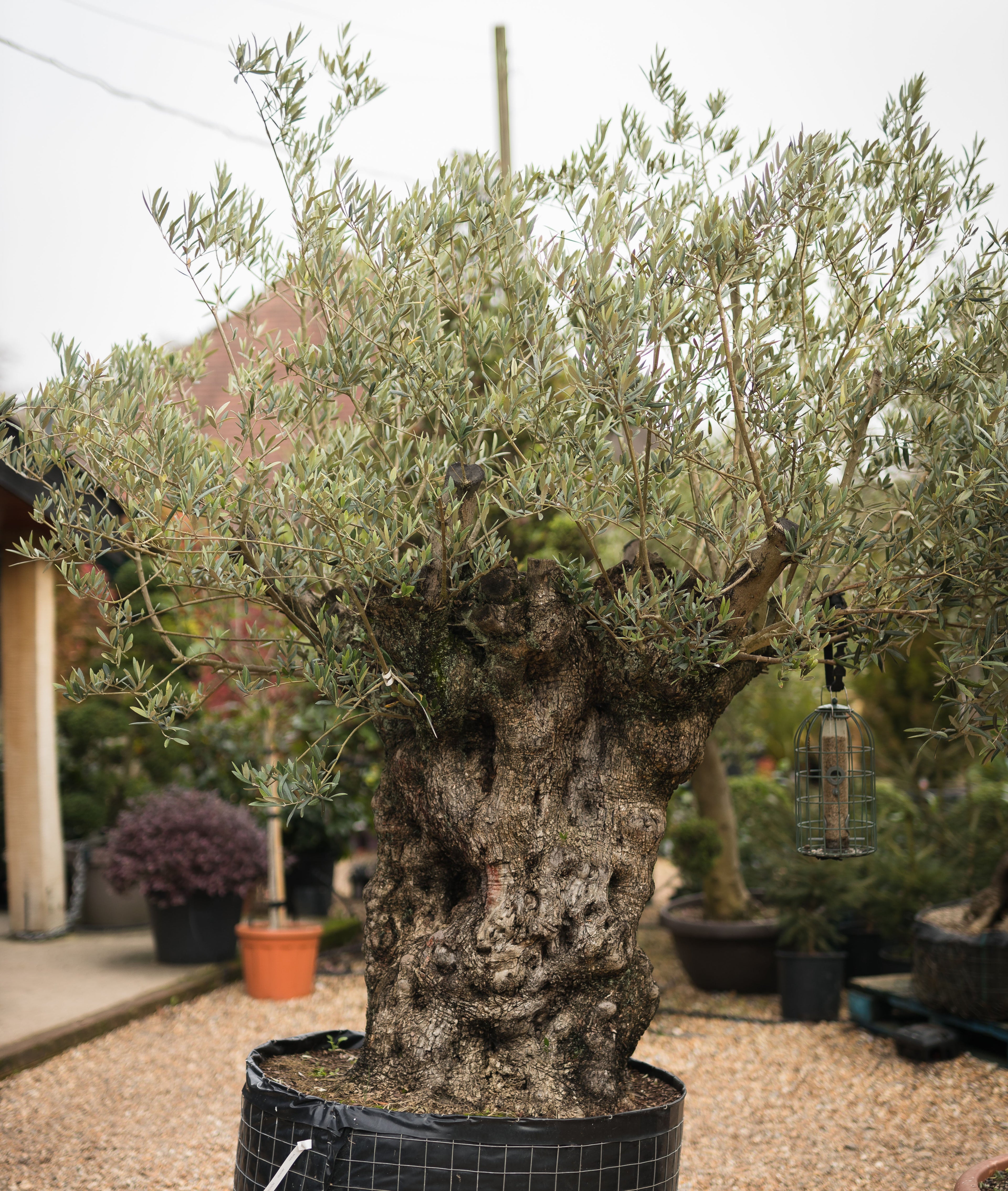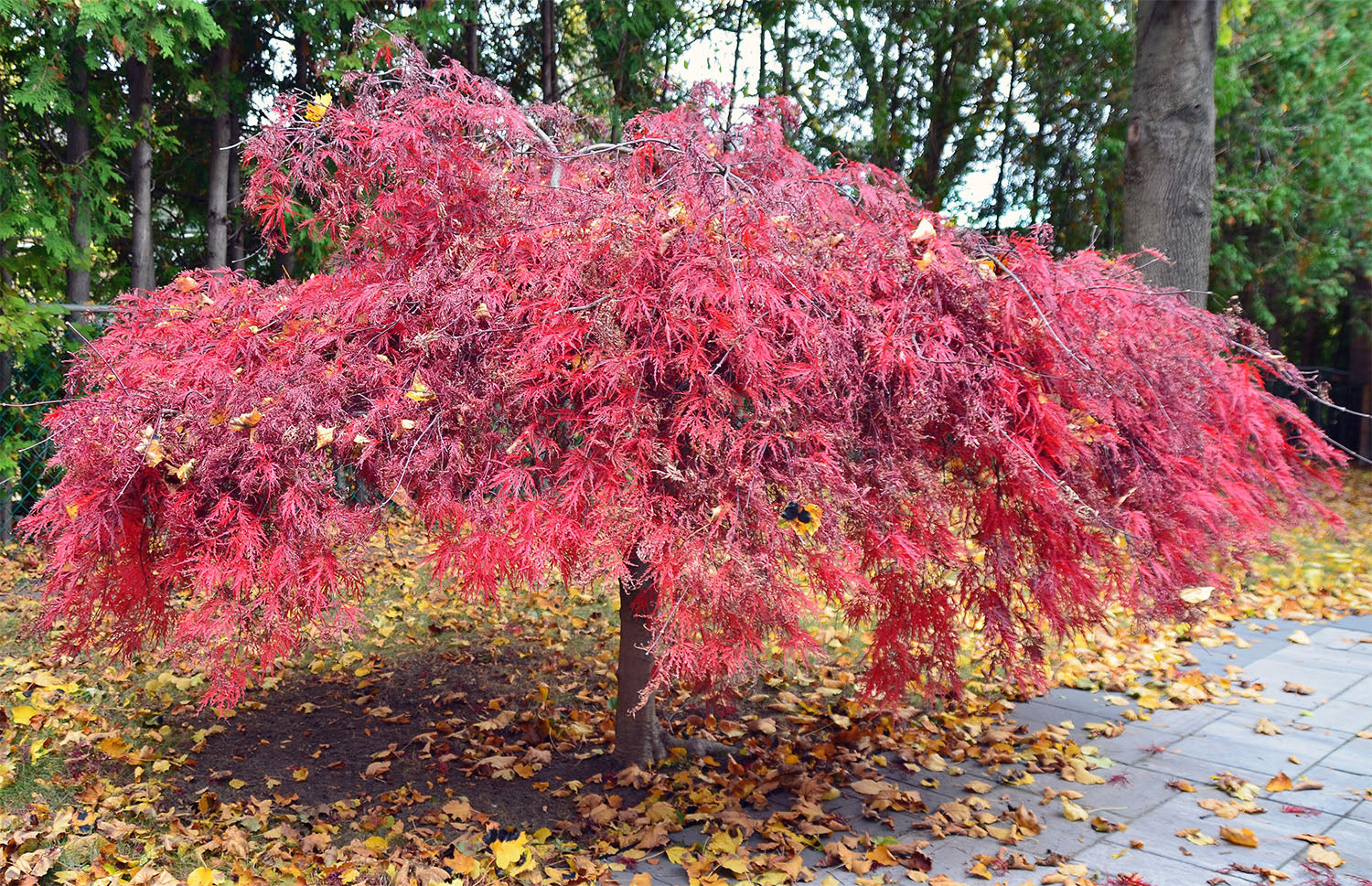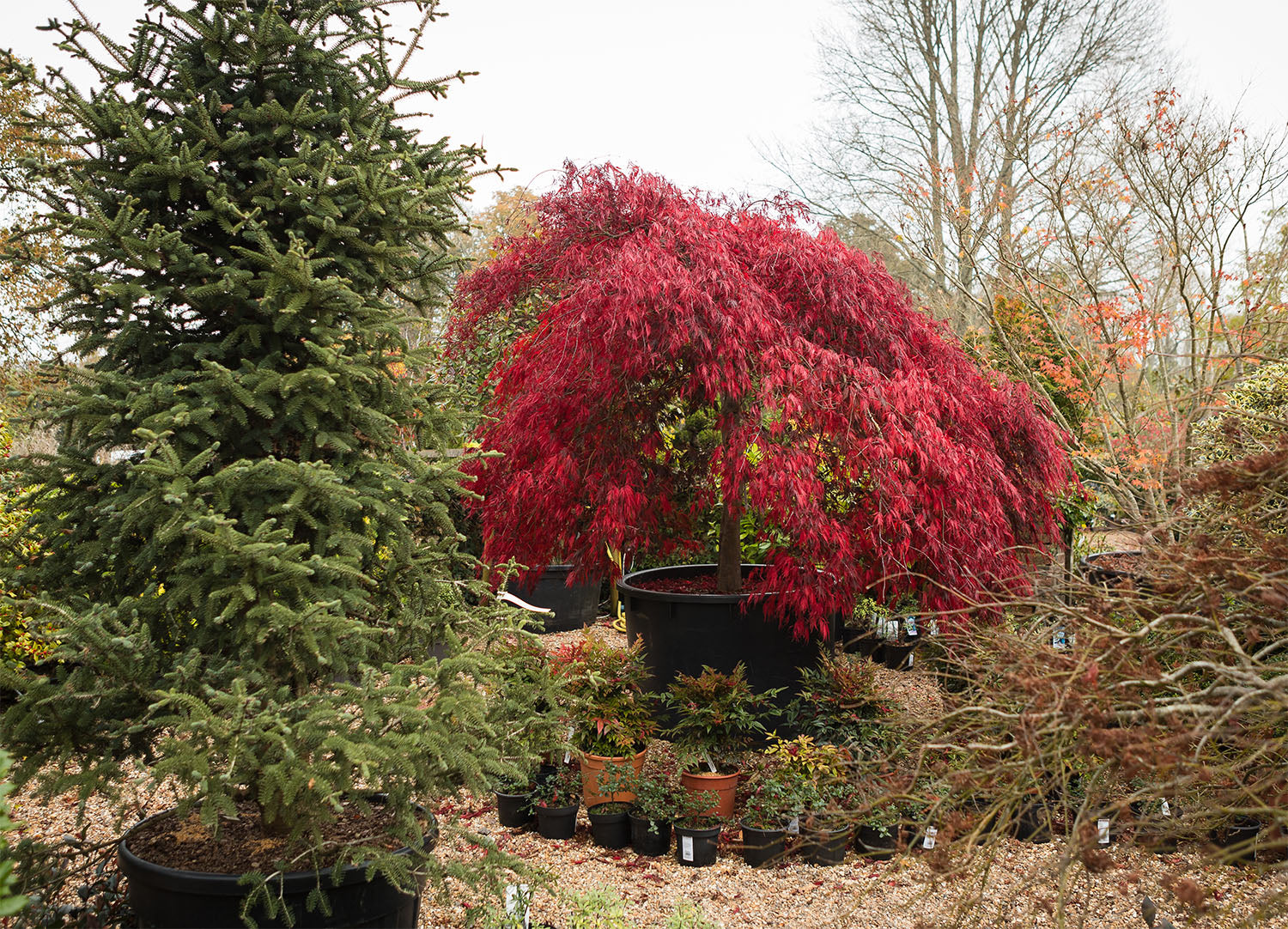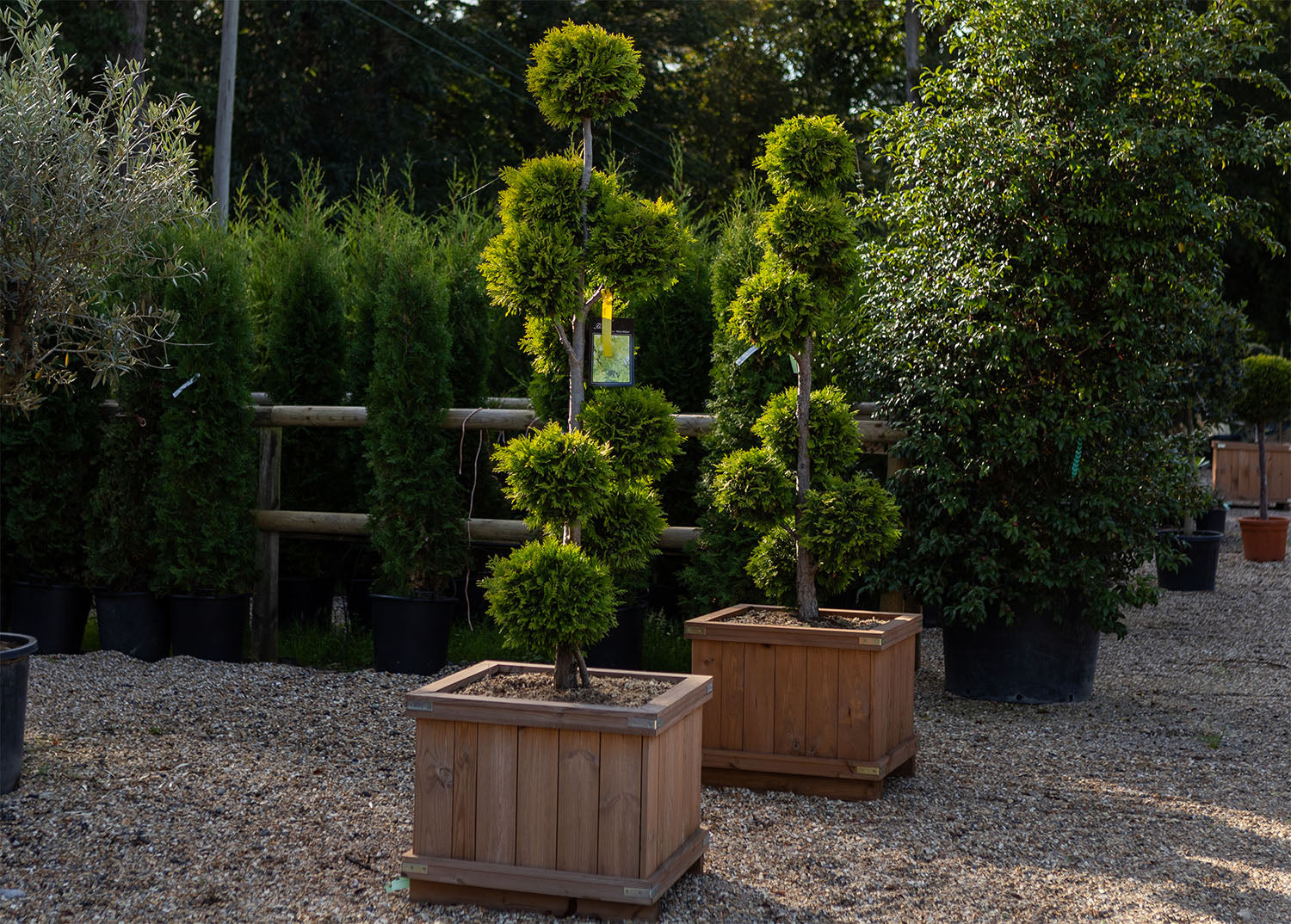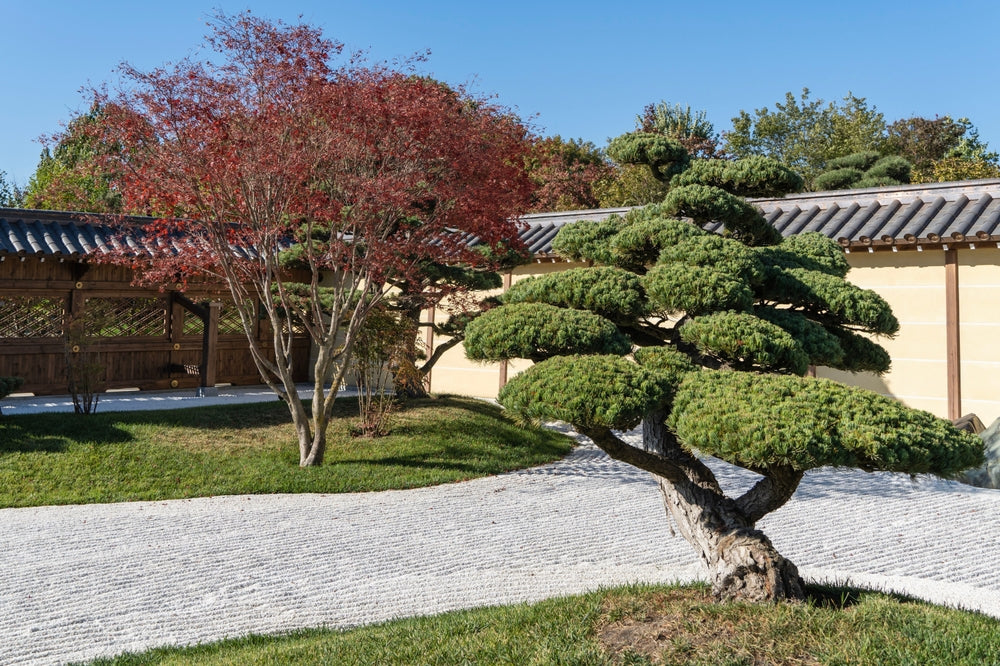Fruit Trees
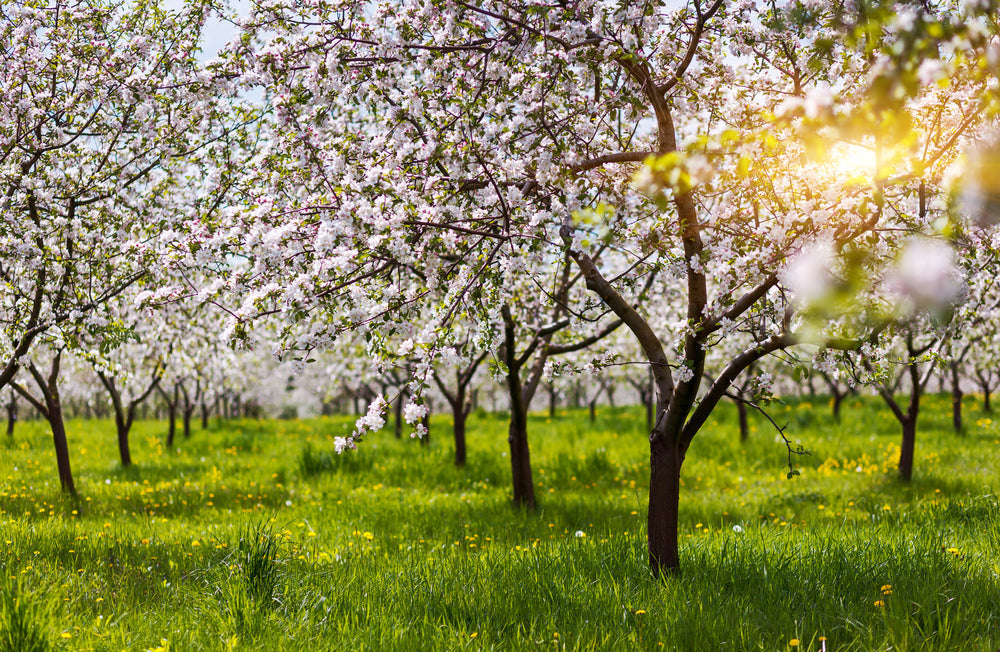
Fruit Trees
How to Plant and Care for an Orchard in the UK
by Arundel Arboretum on Sep 16, 2025
Planting fruit trees isn’t only about the fruit. It brings a life full of beauty, balance, and a deeper connection to nature. Across the UK, plenty of people want to be more self-sufficient, cut food miles, and enjoy eating with the seasons. Starting an orchard is one of the simplest and most rewarding ways to do all of that.
At Arundel Arboretum, we’re proud to offer some of the best fruit trees UK gardeners can grow, along with friendly, expert advice for both beginners and seasoned growers. To make things even easier, we’ve put together a straightforward orchard planting guide UK gardeners can follow to grow and maintain their fruit trees with confidence.
Planning an Orchard: What to Know Before You Start
There aren’t many projects as rewarding as starting your own orchard. It’s easy to picture baskets full of ripe fruit, but the real success begins long before harvest. Preparing the soil, picking the right varieties, and planning how they’ll grow together all make a big difference to how productive your orchard will be.
Choosing The Right Location and Soil for Growing Fruit Trees UK
Choosing the right spot makes all the difference in how well your fruit trees will grow. They love a lot of sunshine, so a south-facing spot sheltered from strong winds is ideal for the UK climate.
The soil is just as important. Fruit trees like their soil just right. Not waterlogged clay that suffocates roots, nor dry sand that leaves them thirsty. Most fruit trees like soil that’s slightly acidic to neutral (around 6.0–7.0). A quick soil test will show where you stand. Too acidic? Add lime. Too alkaline? Add sulphur.
How Much Space Do You Really Need for Planting Fruit Trees?
The space you need depends on the rootstock it’s grown on, as that determines how big the trees will grow. As a rule of thumb, leave enough space so the branches won’t bump into each other when the trees are mature, that is about 3 to 6 metres. It might look like a lot at first, but you’ll be glad for it later.
Picking the Purpose of Your Orchard: Eating, Cooking, or Juicing
When you start planning your orchard, it’s important to decide what you want from your fruit. Some fruits are the most tasteful when eaten straight from the tree, while others give their best in the kitchen, whether in cooking, juicing, preserving, or making cider.
By mixing different types of fruit trees in your orchard, you can enjoy a wider range of flavours and uses across the seasons. You might, for example, pair sweet dessert pears with tart cooking apples. Or stick to one fruit type, but combine early- and late-ripening varieties.
A good mix is the UK favourite Discovery, which ripens early in the summer, with Braeburn, which is ready for harvesting much later, in mid-October. The key is to make sure they have a suitable pollination partners to make sure you’ll get a good crop.
What is Pollination & Why Does It Matter When Planning an Orchard
Planting an orchard is not just picking a few fruit trees you like and popping them into the ground. Even if you give them the best conditions possible, you may end up with half empty baskets during the harvest. So what’s the secret? It’s the pollination.
Pollination is simply bees and other insects moving pollen from one flower to another so the tree can set fruit. Without it, you might get plenty of blossom, but no fruit at all. You may think, well, pollination just happens naturally. What do I have to do with it? Well, pollination isn’t just a chance, and there’s a lot you can do to make it successful.
First, it helps to know that fruit trees fall into three main groups when it comes to pollination:• Self-fertile varieties. These varieties can pollinate themselves. They don't need another tree. Examples are modern apple varieties, such as Sunset or James Grieve, as well as some plums like Victoria. But even the self-fertile fruit trees give better crops when there is another compatible tree nearby.• Partially self-fertile varieties. These can set some fruit on their own, but crop much better with a partner. An example is Conference pear.• Self-sterile varieties. These cannot pollinate themselves at all and must have another compatible variety nearby. Classic examples are Cox’s Orange Pippin apples or many cherries. So, before you rush up and fill a trolley with fruit trees, it’s good to know which ones are quite good on their own and which ones need company. That’s where pollination groups come in.
What Are Pollination Groups & How to Choose Compatible Fruit Trees
Each variety is placed into a group based on when it blooms. Apples and pears are usually placed in groups listed by number (from 1-7), while plums or cherries are usually just described by their flowering time.
It’s really quite simple. Trees that flower at the same time, or close to it, can pollinate each other because bees can move the pollen between them. For example, an apple in group 3 will usually pollinate another group 3, and often some from group 2 or 4 as well. Early-flowering plum trees must be partnered with other early-flowering plum varieties to bring crop.
Rule of thumb: If a variety you have chosen isn’t clearly marked as self-fruitful, always plant another different compatible variety. But even self-fertile varieties give better crops when pollinated by a partner.
Rootstocks and Fruit Tree Varieties Explained
Choosing rootstock is as important as choosing the variety. First of all, the rootstock determines how high and how vigorous the tree will grow, and also how well it will adapt to different soil and climate conditions. Choosing the right one is key to planning your orchard layout and spacing.
• Dwarf fruit trees UK are grafted onto dwarf rootstocks, which means they will be only 2–3 metres tall when they mature. They’re perfect for smaller gardens, patios, or squeezing in a few different varieties. And you can harvest the fruit without ladders! The only problem is they often live just 15-25 years.
• Semi-dwarf fruit trees UK grow a bit more, around 3–4 metres in height. They are usually the best choice for most gardens. Easy to manage while producing generous harvests, they have the perfect balance between size and productivity for the average garden. They usually live 25-40 years if well cared for.
• Standard rootstocks grow into full-sized orchard trees, often spreading 5–6 meters wide. They need plenty of space, but are ideal for traditional orchards, paddocks, or for anyone who wants impressive, long-lived trees because they can live more than 50 years, sometimes over a century.
Once you understand rootstocks, it’s much easier to pick fruit trees that suit both your garden space and your long-term plans. But there’s still one important decision to make.
Heritage vs. Modern Disease-Resistant Varieties
When choosing fruit trees in the UK, one of the biggest decisions is whether to go with heritage fruit trees or modern, disease-resistant varieties. Each has its own advantages, and many gardeners like to grow a mix of both.
Heritage varieties include some of the best-loved apple tree varieties UK, such as Egremont Russet, and traditional pear tree varieties like Conference. They’re valued for their unique flavours, history, and the sense of tradition they bring to an orchard. Heritage fruit trees are ideal if you want to help preserve older types that aren’t widely grown anymore.
On the other hand, modern varieties have been bred to cope better with common problems such as scab, canker, or mildew. They usually need less spraying and less maintenance, making them a practical choice if you’d prefer a reliable, lower-effort orchard. These trees are especially useful in wetter areas of the UK where fungal issues are more often a problem.
Best Fruit Trees to Grow in the UK – Available at Arundel Arboretum
Here are some of the best fruit tree varieties recommended by Arundel Arboretum, each with its own unique flavour and growing qualities.Apples• Discovery – early, crisp and sweet, ready in late August.• Laxton’s Superb – aromatic, traditional, good for cooler sites.• Braeburn – late ripening, sharp-sweet flavour, stores well.• Egremont Russet – mid-season, nutty flavour, classic UK favourite.
Pears• Conference – reliable cropper, partially self-fertile, juicy and versatile.• Doyenné du Comice – rich, buttery flavour, one of the best dessert pears.• Concorde – sweet and smooth, heavy crops, part self-fertile.• Beurré Hardy – aromatic dessert pear, needs a pollination partner.
Plums• Victoria – self-fertile, heavy crops, perfect for eating or jam.• Marjorie’s Seedling – large, reliable, and late ripening, perfect for jams.• Stanley – firm, sweet fruit, rich in flavour, self-fertile, ripens in September.• Santa Rosa – dual-purpose, good fresh or cooked.
Others• Quince ‘Vranja’ – large, golden, aromatic fruit, ideal for jellies and preserves.• Medlar ‘Nottingham’ – unusual heritage fruit, ripens late and eaten soft.
Which Fruit Trees Grow Best in Different Parts of the UK?
Choosing the best fruit trees to grow in the UK comes down to where you live. A tree that thrives in one region may struggle in another, so it’s worth matching your choices to your local climate conditions.
South of England – Cherries, Peaches, FigsThe warmer, sunnier South is the only part of the UK where you can reliably grow tender fruits like cherries, peaches, and figs. They need long summers and fewer spring frosts to do well. Here you can enjoy varieties like Stella cherry or espalier-trained figs.
The Midlands – Apples, Pears, PlumsWith its moderate climate, the Midlands is one of the most reliable regions for orchards. Apple tree varieties UK buyers love, such as Discovery or Egremont Russet, perform very well, as do pear tree varieties UK like Conference, and classic plums such as Victoria. The balanced rainfall and temperatures make it easy to mix different fruits in the same orchard.
North of England & Scotland – Hardy Apples and PearsIn the North and Scotland, tender fruits don’t stand much chance. But hardy apples and pears on vigorous rootstocks can take the cold and still crop well. Late-flowering apples like Spartan or James Grieve are less likely to be damaged by frost, and pears like Concorde are also tough enough for chillier spots.
Wales & West Country – Cider Apples and Perry PearsThis region has a long tradition of orchards and there’s a reason for it. The damp, fertile soils are ideal for cider apples and perry pears. Varieties such as Kingston Black and Blakeney Red thrive here, producing fruit packed with the tannins and sugars needed for pressing.
Coastal Areas – Hardy Rootstocks and Sheltered PlantingGardening near the coast comes with challenges like strong winds and salt spray, but with the right choices you can still grow successfully. Stick with hardy apples, pears, or plums on wind-tolerant rootstocks such as MM106, and always plant in a sheltered spot. Apples, pears, or plums can all succeed near the coast, but avoid tender fruits like peaches unless you can provide extra protection.
How to Plant Fruit Trees in the UK
Best Planting Season - When to Plant Fruit Trees UK
The best time to plant fruit trees in the UK is between November and March, when they’re dormant. Container trees can technically go in any time, but autumn and early spring are best because the roots have time to settle before summer.
Soil Preparation for Orchards UK
Fruit trees love a sunny, sheltered spot with well-draining soil. Before planting, dig in some compost or well-rotted manure to feed young roots, and also clear out any weeds so they don’t have to fight for space. If your garden is heavy clay, improve drainage with grit or raise the tree slightly on a mound to help with drainage.
Correct Tree Staking and Support for Fruit Trees
Young trees often need a bit of extra support while they find their feet. A single stake with a soft tie, placed on the windward side, is usually enough to keep them steady but still flexible. After two or three years, the roots will be strong enough to hold on their own, and you can remove the stake.
Mulching and Protecting Orchard Blossoms
Spread a ring of mulch, such as bark or compost, around the base to lock in moisture and keep weeds down, just be sure to keep it away from the trunk itself. In spring, keep an eye on the blossom. If a late frost threatens, cover the tree with fleece or netting to help trees to set fruit.
Orchard Maintenance Guide UK
Looking after an orchard in the UK isn’t complicated, but a little consistency goes a long way. With regular feeding, watering, pruning, and ground care, your trees will stay healthy and reward you with good harvests year after year.
Feeding and Watering Orchard Trees
Young trees need regular watering, especially during their first few years and in dry spells. Once established, most trees get by on rainfall, but giving them a deep soak in summer helps boost both growth and fruiting. For best fruit tree feeding, use a balanced fertiliser in spring, then switch to a high-potassium feed in summer to support flowers and fruit. Adding a fresh layer of mulch each year locks in moisture and steadily improves the soil.
How to Prune a Fruit Tree
Even orchards face pests and diseases from time to time. Aphids, codling moths, and apple scab are some of the most common issues in the UK. The best defence is regular checks. When you catch problems early, it’s much easier to handle them. Encourage natural helpers like ladybirds, use pheromone traps if needed, and stick to disease-resistant varieties so you won’t have to rely on sprays.
Weed and Grass Management Around Trees
Weeds and long grass compete with fruit trees for water and nutrients. Keep a clear circle around the base of each tree as part of your regular orchard care. Mulching helps suppress regrowth, while hand weeding or careful hoeing protects young roots.
Start Your Orchard with Arundel Arboretum
If you’re planning your orchard, come and visit us at Arundel Arboretum in West Sussex, near Chichester. Here you will find a wide selection of fruit trees suited to the UK climate, along with expert advice to help you find the best trees for your orchard. Prefer shopping from home? Browse our online store, place your order, and we’ll take care of the rest. Either way, your perfect orchard starts here.Remember, the best time to plant an orchard was 20 years ago. The second best time is today.
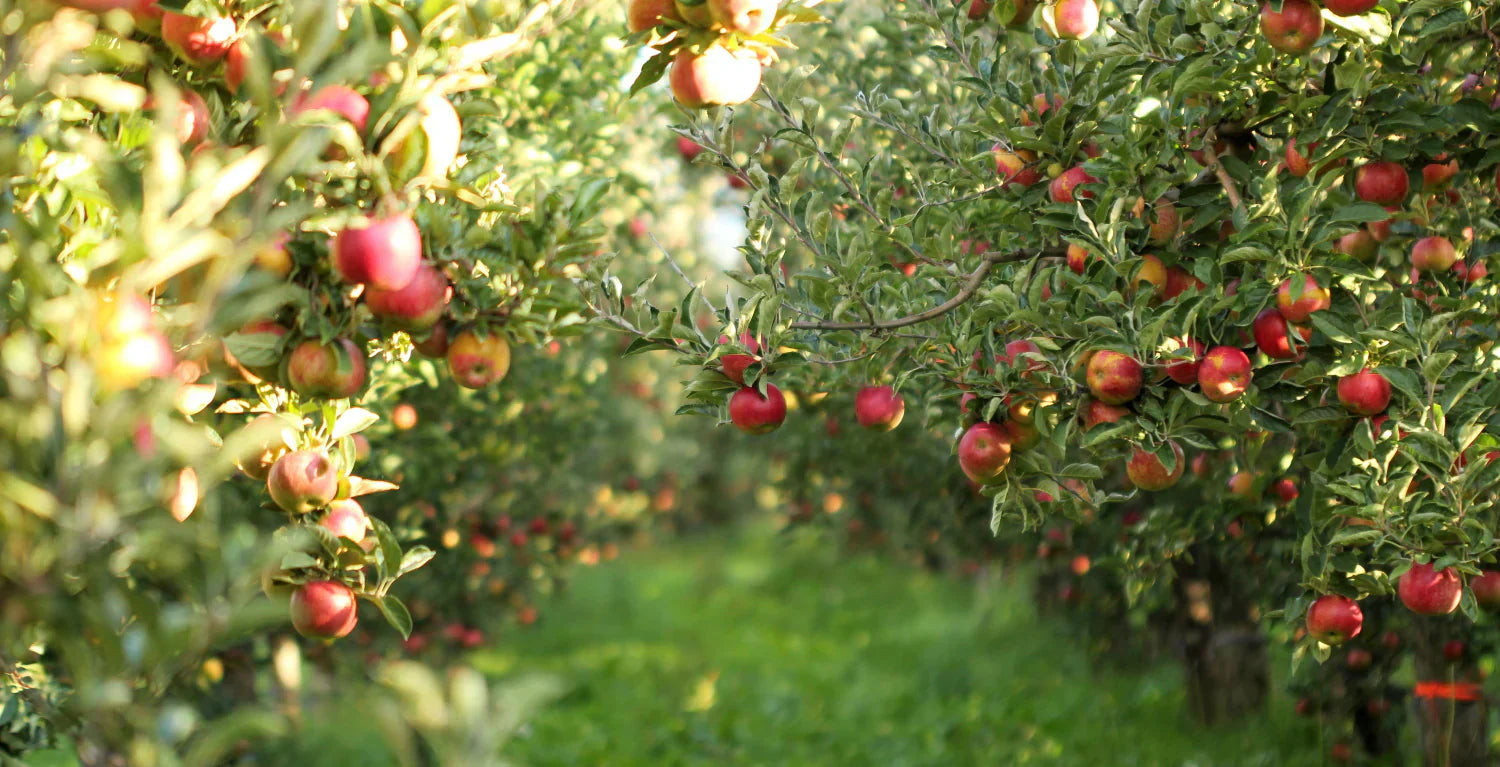
Fruit Trees
The Ultimate Guide to Planting Fruit Trees
by Arundel Arboretum on Feb 10, 2025
Planting a fruit tree is not just about digging a hole in the ground and dropping the plant in. If you want your fruit tree to thrive, you have to give it the best possible start. Therefore, we have put together the ultimate guide on how to plant fruit trees. The guide will walk you through the best time to plant fruit trees and the essential steps to do it right.
Why is this so important? First of all, proper planting ensures a strong root system, which provides water and nutrients to the tree. A well-developed root system leads to a stronger plant that can better handle environmental stresses like drought, pests, and diseases.
On the other hand, any damage caused during planting forces the tree to redirect its energy toward recovery and healing instead of growth and development. That weakens its ability to grow leaves, flowers, and fruit. So, it is exceptionally important for fruit trees to be planted correctly if you want them to grow strong and healthy and bring an abundance of high-quality fruit.
Therefore, we have prepared the ultimate guide to planting fruit trees to help you enjoy your fruit garden for years to come.
When Is the Best Time to Plant Fruit Trees
Container-grown trees can be planted almost any time of the year, but the ideal periods are late autumn (after the leaves drop) or early spring (before buds break). If you are wondering why, here are the key reasons.
Why Late Autumn Is the Best Time to Plant Fruit Trees
Dormancy: Trees are not actively growing so the stress of transplantation is minimal.
Soil Temperature: The soil is still warm enough to make soil preparation easier and enable root development.
Moisture: Late autumn rains keep the soil wet and help the newly planted trees establish their roots.
Time to Establish: By spring, roots are established without spending energy on leaf growth or budding.
Less Competition from Weeds: Cold weather slows weed growth and young trees have less competition for nutrients.
Why Early Spring Is the Best Time to Plant Fruit Trees
Dormancy: Trees are still dormant or just beginning to wake up which reduces the transplant stress.
Soil Temperature: The soil is warmer, no longer frozen or covered by snow, and ready to be prepared for planting.
Moisture: Spring soil has enough moisture from snow melt which makes it perfect for root development without additional watering.
No Frost Damage: Planting fruit trees in spring ensures roots won’t be damaged by winter frost, especially in colder climates.
Our Recommendations:
In milder climates where the ground doesn’t freeze, we recommend planting fruit trees in late autumn (October and November). This gives the root system more time to develop and prepare for the growing season. In the UK, late autumn planting is suitable for Southwest England, South Coast, and urban areas where winters are mild and frost risk low.
Early spring planting (February and March) is more adequate for colder regions to avoid frost damage to unestablished root systems. Late spring frosts may pose a challenge but this risk can be managed with careful planning. Regions that are suitable for spring planting are Scotland, Northern England, and upland areas of Wales, where winters are harsher and longer.
Choosing the Perfect Spot in Your Garden
Finding the best place for fruit trees in your garden is essential if you want them to be healthy and productive. It’s all about giving them what they need to grow strong and bear plenty of fruit. Here are some key things to consider when choosing the perfect spot for your fruit trees:
Sunlight
Sunlight is absolutely vital for keeping your fruit trees healthy and happy. Sun gives them the energy to thrive and produce an abundance of delicious fruit. With enough direct sunlight, your fruit will develop vibrant colours, rich flavours, and natural sweetness. Without it, they may grow weak, produce fewer blossoms, and yield smaller fruit of lower quality.
Tip: Choose a warm, sunny spot in your garden with at least 6-8 hours of direct sunlight every day to keep your fruit trees at their best.
Soil
The right soil is just as important as sunlight. Fruit trees prefer nutrient-rich, moist, but well-drained soil that can provide enough nutrients and allow roots to absorb them. Heavy, compacted soils hold too much water and can lead to root rot so avoid them or improve them by adding organic matter like compost.
Tip: Take the time to test and improve your soil before planting your fruit trees. Pear trees (especially Asian pears) and certain plum trees are more tolerant of heavy and wet soils.
Wind Protection
Fruit trees need to be sheltered from strong, harsh winds as they can uproot young trees, weaken their stability, and cause damage by breaking branches, stripping leaves, or knocking off flowers and young fruit. Cold winter winds are another threat – they can dry out the tree and cause bark to crack, especially on trees with thin bark, like cherries and apples.
Tip: Protect your fruit trees by planting them near windbreaks like walls, fences, or hedges. Add mulch around the base to insulate the roots. If needed, use burlap wraps - protective coverings designed to protect trees, especially fruit trees, from harsh conditions.
Space for Growth
Fruit trees need plenty of room to grow. The size and variety of your tree will determine how much space it needs. Crowded trees compete for light, water, and nutrients which can weaken their health. Poor spacing also limits airflow around the canopy which can create an environment perfect for fungal infections and diseases. Proper spacing is, therefore, essential for fruit trees.
Tip: If the space in your garden is limited, try a clever space-saving technique called espalier. This method involves training a tree to grow flat, like a two-dimensional painting. Espalier not only saves space but also maximizes sunlight exposure which can boost fruit production.
How to Prepare Soil for Planting Fruit Trees
Poor soil is a major problem when it comes to fruit trees. It can stunt growth and lower fruit quality so, before you plant, test your soil. Making small improvements can make a huge difference. Here is a simple guide to help you test and improve your soil.
pH Levels:
Fruit trees prefer slightly acidic to neutral pH, ideally between 6.0 to 7.0. If the soil is too acidic or too alkaline, it may be difficult for a tree to absorb nutrients. Some trees may be considered exceptions, like citrus trees, which like slightly more acidic soil or olive trees, which can tolerate slightly alkaline soils
Tip: You can easily adjust soil’s pH levels by adding things like lime to raise pH (make it less acidic) or sulphur to lower pH (make it more acidic).
Nutrient Levels:
The most important nutrients for fruit trees are nitrogen (N), phosphorus (P), and potassium (K). Nitrogen supports overall growth and healthy foliage, phosphorus helps the root development and supports the growth of flowers and fruit, while potassium influences overall tree health and fruit quality. If there is an imbalance of these nutrients, fruit trees can have serious issues.
Tip: To solve nutrient deficiencies, use adequate fertilizers. Adding organic matter like compost or peat moss is also a fantastic way to improve soil quality. Be careful with nitrogen. It provides vigorous growth but too much of it can reduce fruit production.
Drainage:
Fruit trees don’t like waterlogged soils. Too much water can cause root rot, so having well-drained soil is essential for their health.
Tip: If you don’t know whether your soil is waterlogged, perform a simple test. Dig a hole about 30cm deep and fill it with water. Check it in 24 hours. If the water is still there, your soil has poor drainage. To fix it, add some sand or gravel to improve water flow.
How to Dig the Right Hole for a Fruit Tree
It may sound a bit unnecessary to explain how to dig a hole, but there are a few simple rules that may not be widely known. And a well-dug hole can make a difference for your fruit tree. Here is a short and simple, step-by-step guide on how to dig the right hole for your tree and plant it successfully.
Measure the root ball to calculate how deep and wide a hole should be.
Dig a hole as deep as the root ball. The tree must not settle too low because that can cause a trunk to rot.
The hole must be 2-3 times wider than the root ball. Roots need space to spread.
Loosen the bottom and the sides of the hole to make it easier for the roots to penetrate the ground.
Mix the soil you dug out with compost or organic matter. You will use that later for refilling.
Do not apply too much fertilizer because it can burn young roots.
Place the tree in the hole. The spot where the trunk meets the roots should be at or slightly above the ground. Do not bury the trunk!
Backfill the hole with the mix you have previously prepared. Gently tamp down the soil to remove air pockets.
Water the tree abundantly.
Add mulch 5-10 cm around the base but leave some space around the trunk
And there you have it! Your tree is planted with knowledge and care and set up for success!
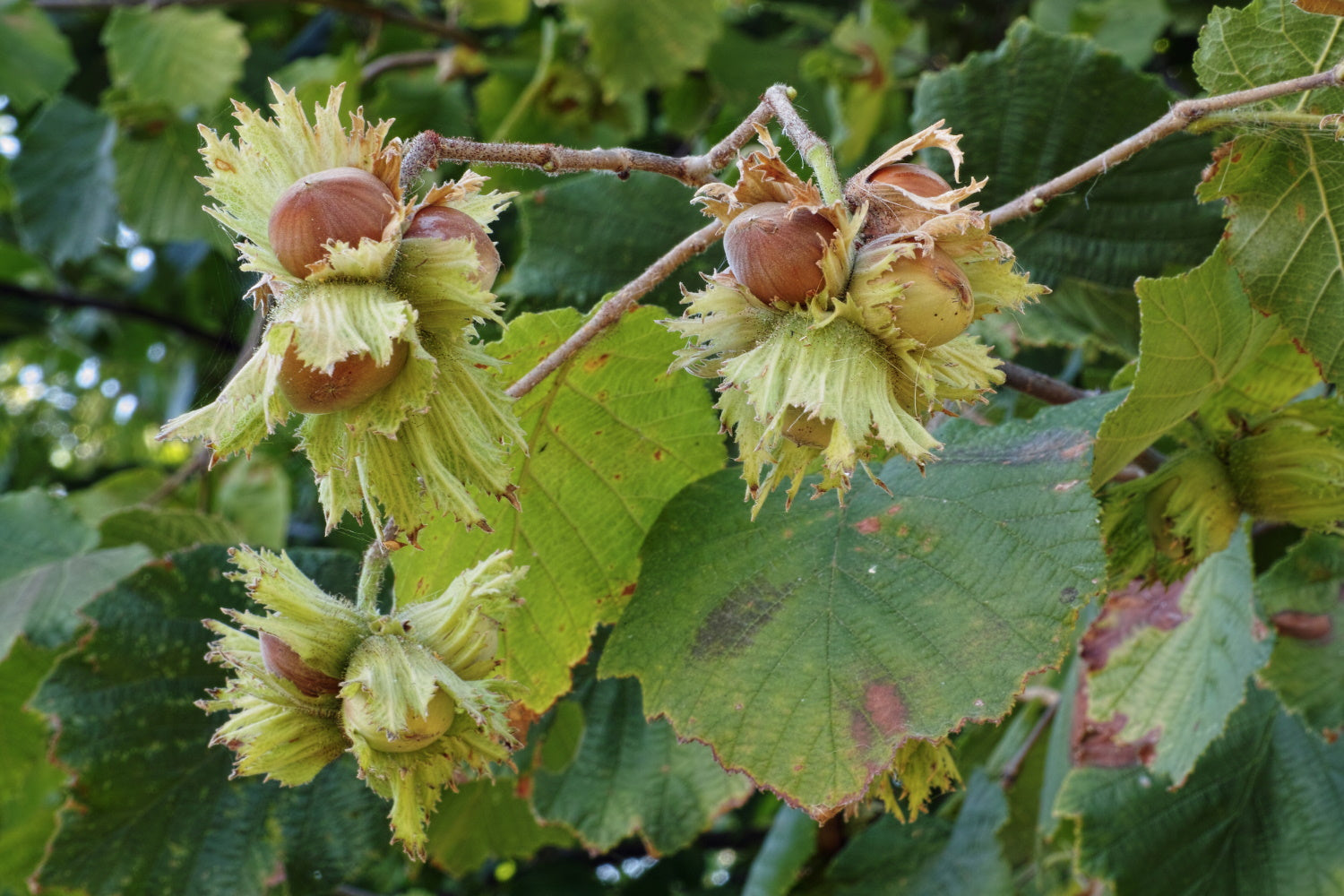
Fruit Trees
by Arundel Arboretum on Dec 13, 2022
Corylus maxima ‘Purpurea’ / purple leaved Filbert
Corylus maxima ‘Purpurea’ is an upright deciduous tree-like shrub with heart shaped dark purple leaves. It has pendulous pale yellow male catkins from late winter through to the spring. These can measure up to 12cm long. Corylus maxima ‘Purpurea’ produces edible nuts which ripen in the autumn. It has a maximum height of 6m and spread of 5m. It grows happily on chalk soils and sunny gardens. It is very hardy.
Corylus Avellana (Cosford Cob)
Corylus Avellana is a spreading deciduous small tree or shrub. The leaves are rounded which turn yellow in the autumn. Corylus Avellana has male yellow catkins in the spring. These are followed by edible nuts (cobnuts) in the autumn. The eventual height is between 4-8m.
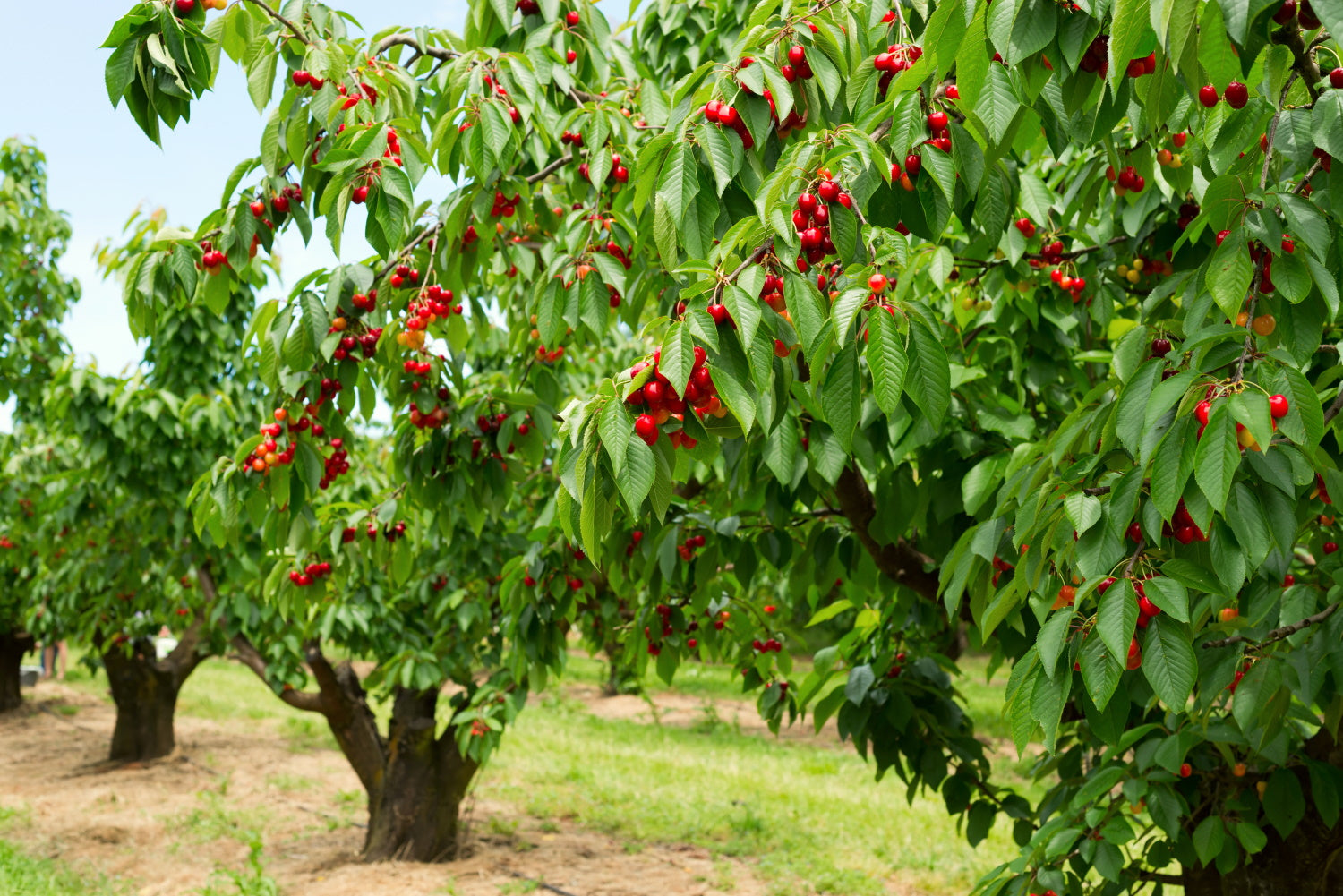
Fruit Trees
by Arundel Arboretum on Dec 13, 2022
Dessert
Sweetheart
Sweetheart is predominantly a sweet cherry. Its sweet taste is not too sugary, with a hint of bitter sharpness. The flavour is richer than most other cherries. To get the best flavour from Sweetheart cherries, pick when they are fully ripe and eat immediately. Sweetheart is a self-fertile variety and ripens in August, and has a long picking period. The fruit often ripens unevenly, which often prevents a glut of fruit in one go.
Sweet
Sunburst
Sunburst is a good modern cherry variety. It has soft flesh, and a good sweet mild cherry flavour. Sunburst is a large fruit with a near black skin. It is a self-fertile variety, and the picking time is early July. It is closely related to the Stella cherry, and is considered to be an improved version.
Stella
Stella cherry is a self-fertile variety of cherry. It produces large fruits which are dark red. They have a sweet taste and are juicy. Stella has a vigorous growth habit, which begins upright and then spreads. It is classed as a ideal garden cherry tree, since it can be grown on its own. It is also a good pollinator for other cherry trees.
Napoleon
Napoleon is a medium-large white cherry with a firm flesh. It was introduced to Britain about 150 years ago. It has a sweet-sharp flavour, and is of very good quality. Napoleon has pale yellow-white flesh flushed with dark red. Napoleon is a very good cropper. It is recommended that they are eaten fresh. Their picking time is late July\early August.
Cooking
Nabella
Nabella is a culinary cherry, similar to Morello. It produces medium-sized, glossy, bright red fruits. Nabella is a self-fertile variety and the fruits ripen late. They are an excellent choice for making jams, pies or liqueurs. Nabella pick time is August.
Morello
Morello is a traditional English cherry, primarily used for making jams, preserves and pies. Morello is a large black fruit with a dark red flesh. When it is cooked it has a rich, strong cherry flavour. Morello can be eaten fresh, but they need to be very ripe, otherwise their taste will be very acidic and bitter. Morello has a compact, spreading growth habit and is self-fertile. They have a good resistance to disease and their picking time is July\August.
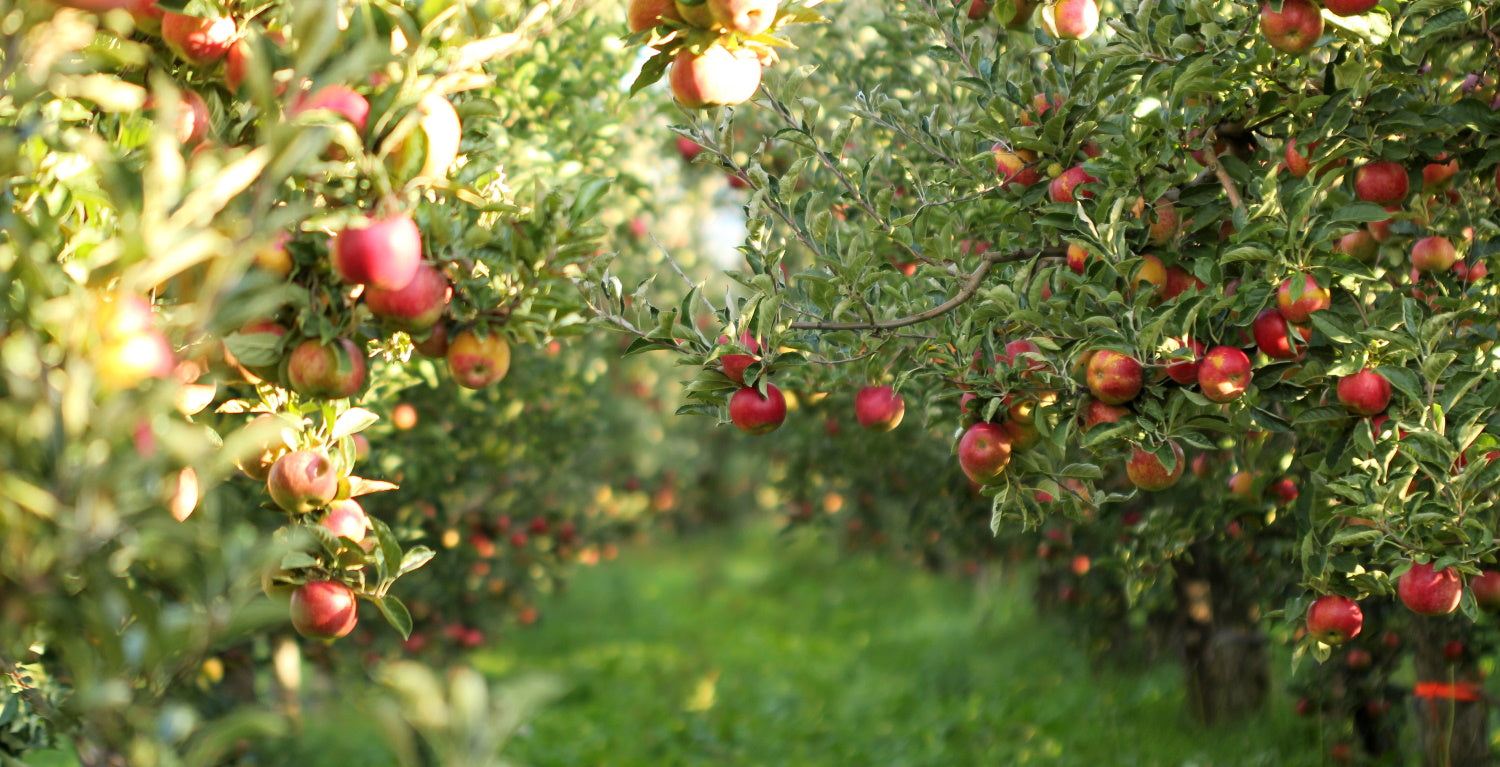
Fruit Trees
by Arundel Arboretum on Dec 13, 2022
Dessert
Worcester Pearmain
Worcester Pearmain is hardy, reliable and resistant to mildew. However, it can be susceptible to scab and canker. It is best to leave the small-medium sized fruits on the tree until they are fully ripe. This enhances the flavour and aroma. Worcester Pearmain is slow to start bearing fruit The skin is yellowish-green, flushed with bright red. Picking time is early September.
Tydeman’s Early
Tydeman’s Early is a dessert apple. It produces good sized fruit. The skin is pale yellow which is flushed with crimson red and purplish-crimson stripes. Tydeman’s Early produces apples which are rich in flavour. It is sweet with a little acidity. Pick from August to September.
Sunset
Sunset variety is an offspring of Cox’s Orange Pippin. It is a hardy, compact small-medium sized apple. It has good disease resistance. The skin is golden which is flushed and striped with red. It also has small patches of russet. Sunset has a very good flavour, and is crisp, sweet and juicy. It crops regularly and heavily and picking time is late September.
Spartan
Spartan variety is a medium fruit with smooth, yellow skin which is flushed with dark red. It is white fleshed, crisp and juicy. It is a hardy tree and yields moderately. Spartan can be susceptible to canker. If the fruit is small, it is essential to thin the tree, and it will also respond well to feeding. Picking time is October.
Kidd’s Orange Red
Kidd’s Orange Red is a small-medium sized fruit from New Zealand. It is similar in flavour and texture to Cox’s Orange Pippin. It is a heavy and regular cropper. The skin is yellow, which is heavily flushed with red. There are also patches of pale brown russet. It is suitable for north facing gardens. Kidd’s Orange Red has quite good resistance to disease. Picking time is early October.
Katy
The Katy variety originates from Sweden, and is therefore a good choice for north facing gardens. It is a small-medium size fruit with greenish-yellow skin, which is heavily flushed with bright red. Katy is a heavy and regular cropper. The fruit is juicy and refreshing. Picking time is early September.
Jupiter
Jupiter was introduced in 1982, as a variety similar to Cox’s Orange Pippin – similar in flavour but without the unreliability. It is a heavy cropper and has vigorous growth. Jupiter needs to be grafted onto a dwarfing stock. It is a medium size apple with golden-yellow skin, which is flushed and striped with red. Picking time is mid-September.
James Grieve
James Grieve variety is an excellent choice if you have a difficult site. The medium-large size fruit is reliable and hardy. It is a heavy and regular cropper. James Grieve has soft textured fruit which is juicy and tangy. The skin is yellow which is speckled and striped with orange. Picking time is early September.
Greensleeves
Greensleeves produces a medium size fruit and is similar to Golden Delicious. It is hardy and easy to manage. The skin is pale green which turns pale yellow. Greensleeves fruits early in life, and can produce heavy crops. The flavour soon fades when stored. Picking time is September.
Granny Smith
Granny Smith produces a medium size fruit. It is a reliable and heavy cropper. It does however need a hot summer and a favourable location. Granny Smith needs to be picked late and stored for a long time to produce a fruit suitable for eating. The skin is green and this is sometimes flushed and striped with brown. Picking time is late October.
Fiesta
Fiesta variety is a good substitute if you are not able to grow Cox’s Orange Pippin. However, the flavour is not as good. It is reliable and crops well. Fiesta has medium-large fruit and the skin is yellow which is flushed and striped with red. Picking time is early October.
Red Falstaff
Red Falstaff is a dessert apple with red coloured fruit. It is a self-fertile variety, and crops well. It has crisp, juicy, well flavoured fruit. Red Falstaff flowers mid-season and the crop is ready for picking in October.
Discovery
Discovery is an ideal apple tree for a small garden, due to its moderate growth. It has a small-medium fruit with a firm flesh. Discovery skin is yellow and covered with bright crimson. It is disease resistant and tolerates frost. It can be slow to start cropping. Picking time is August.
Cox’s Orange Pippin
Cox’s Orange Pippin variety is a medium size dessert apple and regarded by many as the best eating apple. It has a superb flavour and is also crisp and juicy. It is not suitable for northern districts. In the south it can be temperamental. Cox’s Orange Pippin is susceptible to frost and disease. The skin is golden and this is flushed with orange-red. There are also patches of brown russet. Picking time is October.
Charles Ross
Charles Ross variety is large and round and has a sweet, juicy flavour. However, it can become dry and tasteless if stored for long periods. The skin is yellow-green and this is flushed and striped with orange-red. Charles Ross is good as a dessert or cooking apple. Picking time is mid September.
Blenheim Orange
Blenheim Orange is a large variety and has a creamy flesh. It is crisp and dry and has a nutty flavour. It is a good cropper, and can be used for cooking as well as a dessert apple. Blenheim Orange fruit has golden skin which is flushed and striped with dull red and brown russet. It has vigorous growth and it is recommended purchasing on a dwarfing stock. Picking time is early October.
Pixie
Pixie variety produces attractive looking fruit. They are crisp, juicy and aromatic. The small-medium fruit has yellow-green skin flushed and striped with red. Pixie crop heavily and are disease resistant. Picking time is mid October.
Laxton Superb
Laxton Superb produces medium-large fruits, but is not suitable for small gardens. Thinning is usually necessary, and it is susceptible to scab. The skin is green-yellow and is flushed with dark red. There are also patches of russet. Laxton Superb fruit stores well and the flowers are fairly frost resistant. Picking time is early October.
Jonagold
Jonagold has excellent fruit quality. It is crisp, full of flavour and juicy. The fruits are large-very large and the skin is green-yellow and lightly flushed and mottled in red. Jonagold has vigorous growth and its spreading habit could be a problem for a smaller garden. It crops very well and young trees fruit quickly. Picking time is mid October.
Howgate Wonder
Howgate Wonder is a very large variety, and it grows well if you live in the north or in a frosty area. It is a vigorous growing, spreading tree. It is a very heavy cropper. Howgate Wonder flavour can sometimes be insipid. The skin colour is green-yellow which is flushed and striped with pale red. Picking time is October.
Golden Delicious
Golden Delicious does require sunnier conditions that Britain can produce to give it its best as the flavour and size can disappoint after a poor summer. It has medium size fruit and the skin is green or golden yellow. This apple tree is a good pollinator for other varieties. Golden Delicious fruit stores well. Picking time is late October.
Gala
Gala is medium size variety has a sweet, crisp flesh. It crops well. However, it is prone to canker and scab and the fruit can be quite small if the tree is not thinned. Gala skin is yellow and heavily flushed with red. Picking time is October.
Ellison’s Orange
Ellison’s Orange is a medium size variety, which is hardy and easy to grow. Ellison’s Orange is juicy and has an aniseed flavour. It is scab and frost resistant but canker can be a problem. The skin is green-yellow which is flushed and striped with red. Picking time is mid September.
Ashmead’s Kernel
Ashmead’s Kernel is about 300 years old! It has yellow flesh which is crisp and has an excellent flavour. It is scab resistant and the fruit stores well. Ashmead’s Kernel is not recommended for exposed north facing gardens as this will affect the cropping, which overall is light and erratic. The skin is yellow-green which is covered with mid brown russet. Picking time is mid October.
Lord Lambourne
Lord Lambourne is a dessert apple suitable for small gardens as it has a compact growth. It is a very successful regular cropper wherever planted. Lord Lambourne produces a medium size fruit which is sweet and juicy. The skin is green-yellow which is flushed and striped with red. Picking time is mid September.
Egremont Russet
Egremont Russet is a dessert apple which produces small-medium size fruit with a rough skin. It has a very good flavour with a crisp flesh. The blossom is frost resistant. The skin is golden with large patches of pale brown russet. Egremont Russet has an upright growth habit. Picking time is late September.
Belle de Boskoop
Belle de Boskoop is a cooking and dessert apple. It produces medium-large fruits with a creamy flesh, and sweet\sharp flavour. The skin is yellow-red with mottled russet. Belle de Boskoop stores well and is a good cropper. It has good resistance to scab and canker. The picking time is in early October.
Cooking
Newton Wonder
Newton Wonder has very vigorous growth and is therefore not suitable for small gardens. It is known for its heavy yields of fine-flavoured very large fruits. The fruit is juicy and acid and cooks well. It is not regarded as a dual purpose variety, but stored Newton Wonder can be used as a dessert apple. The skin is golden-yellow which is flushed and striped with red. The picking time is October.
Bramley’s Seedling
Bramley’s Seedling is the most popular cooking apple. It produces heavy crops of large fruit with a creamy flesh which is full of flavour. It grows vigorously and is not therefore suitable for small gardens. Bramley’s Seedling is often a biennial cropper. The skin is yellow-green which is lightly striped with red. Picking time is mid October.
Bountiful
Bountiful is an ideal choice if you have a small garden. It is quite sweet for a cooking apple, and you may not need to add extra sugar. Bountiful produces large fruits which are pale green, striped with orange-red. It is a heavy cropper. Picking time is late September.
Rev. W Wilks
Rev. W Wilks is a compact, short rooted variety of cooking apple. It is recommended for small gardens. It has good resistance to disease. Rev. W Wilks produces high yields of large fruit which are of good quality, juicy and tangy. The skin is pale green which is flushed and striped with dark pink. It is a biennial fruiter. The picking time is early September.
Idared
Idared is a medium-large size fruit is suitable for cooking and eating. However, it does lack flavour. Idared stores very well. The skin is yellow and flushed with bright red, and the flesh is white. Picking time is late October.
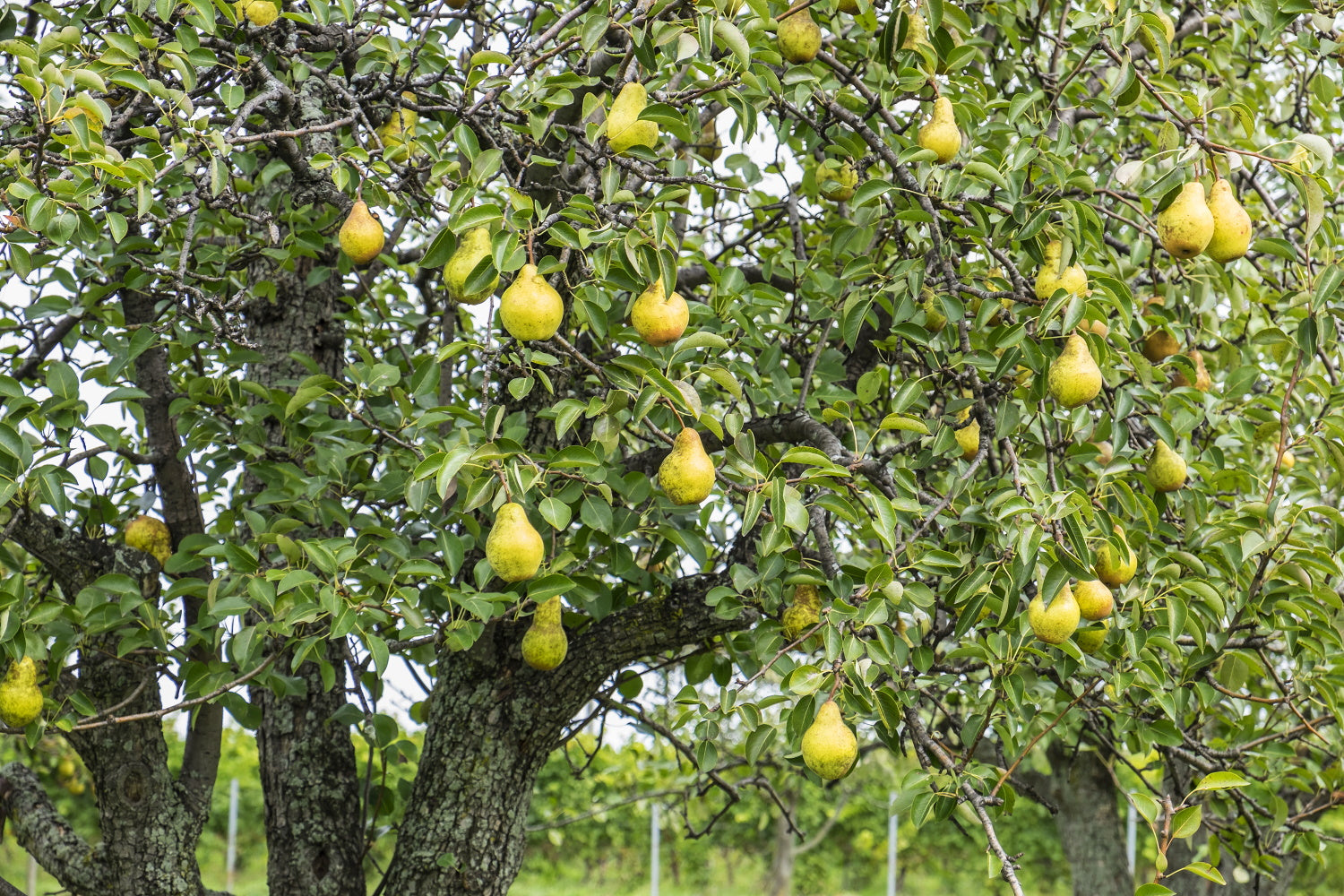
Fruit Trees
by Arundel Arboretum on Dec 12, 2022
Williams’ Bon Chretien
Williams’ Bon Chretien pear is a medium-large fruit with pale yellow skin with pale red stripes and spots. It has an oval shape with a smooth skin. Williams’ Bon Chretien is a regular cropper, and should be hardy enough for northern areas. The quality of the fruit is very good, but it does not store for very long. Its picking time is September.
Doyenne du Comice
Doyenne du Comice is a dessert pear which produces medium-large fruit, with a golden-yellow skin which is flushed with brownish-red. Its taste and texture are outstanding. However, it needs warmth and shelter from winds. Unfortunately, Doyenne du Comice it is an irregular cropper and will also require spraying against scab. The picking time is mid-October. Its Pollination Group is C. It requires a pollination partner such as ‘Beth’ or ‘Concorde’.
Conference
Conference dessert pears produce medium sized fruit with an olive green skin, with large russet patches. It is a reliable variety to grow even if it has less than perfect conditions. Conference fruits are long and narrow with firm, juicy flesh. It is partly self-fertile and is in Pollination Group B. If it has a nearby pollination partner it will produce a better crop of fruit. Picking time is late September.
Beth – Pear
Beth is a dessert pear produces small-medium fruits with a pale yellow skin with russet spots. It produces high yields and regular cropping. Beth has a soft white flesh. It has an upright growth habit. It comes under Pollination Group B. Picking time is late August.
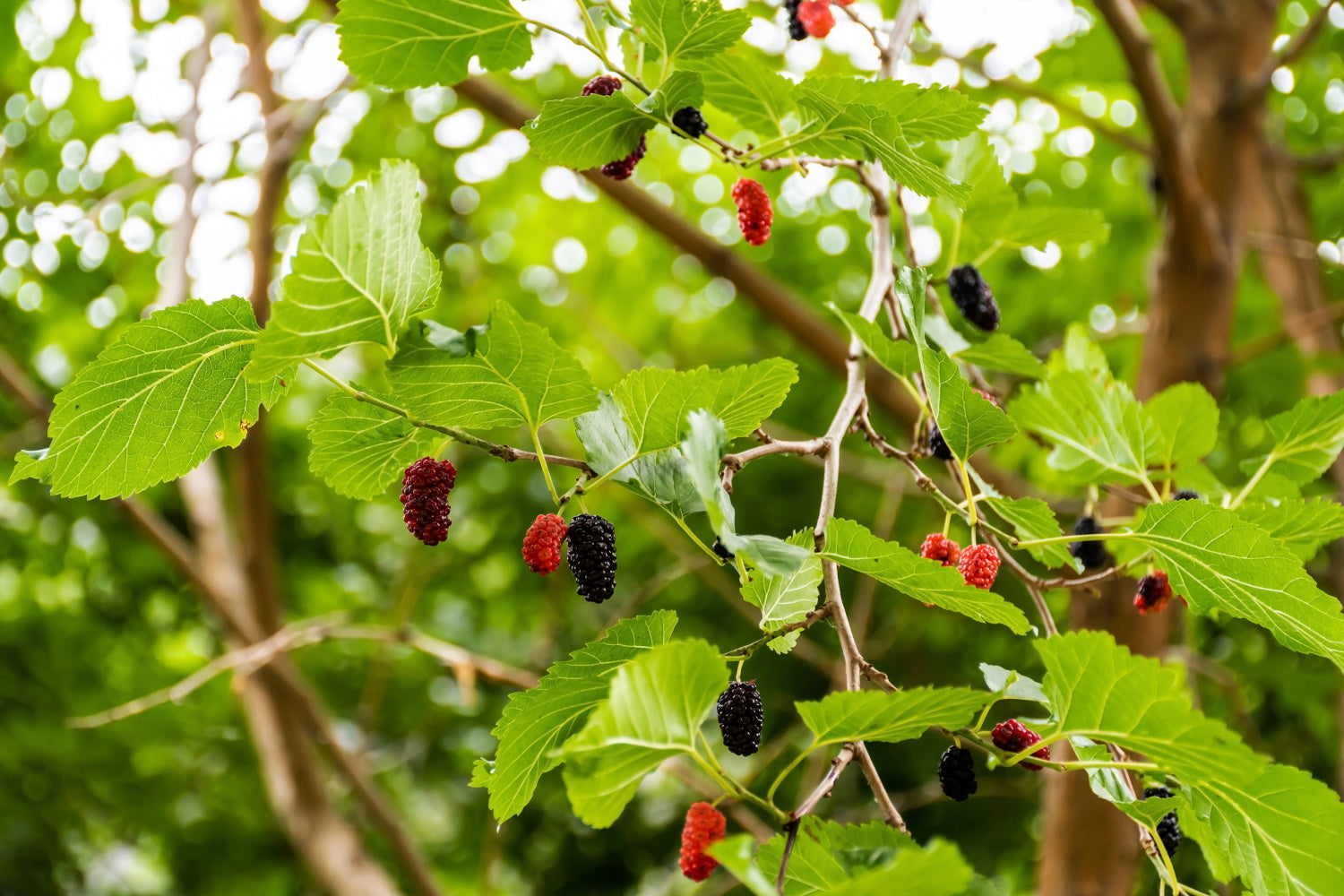
Fruit Trees
by Arundel Arboretum on Dec 12, 2022
Morus Nigra
Morus nigra is the black mulberry tree. It produces purplish-black, sweet, juicy fruits during the summer months. Morus nigra fruits are delicate and should therefore be eaten soon after picking.
Morus alba ‘Pendula’
Morus alba ‘Pendula’ is the weeping mulberry. It is deciduous, with shiny green leaves. Morus alba ‘Pendula’ is ideal for small gardens, and requires little maintenance. Its weeping habit growth will reach the ground. The tree produces green flowers in the summer, which are followed by berries in the autumn. These emerge white, gradually turning dark pink\red or black.
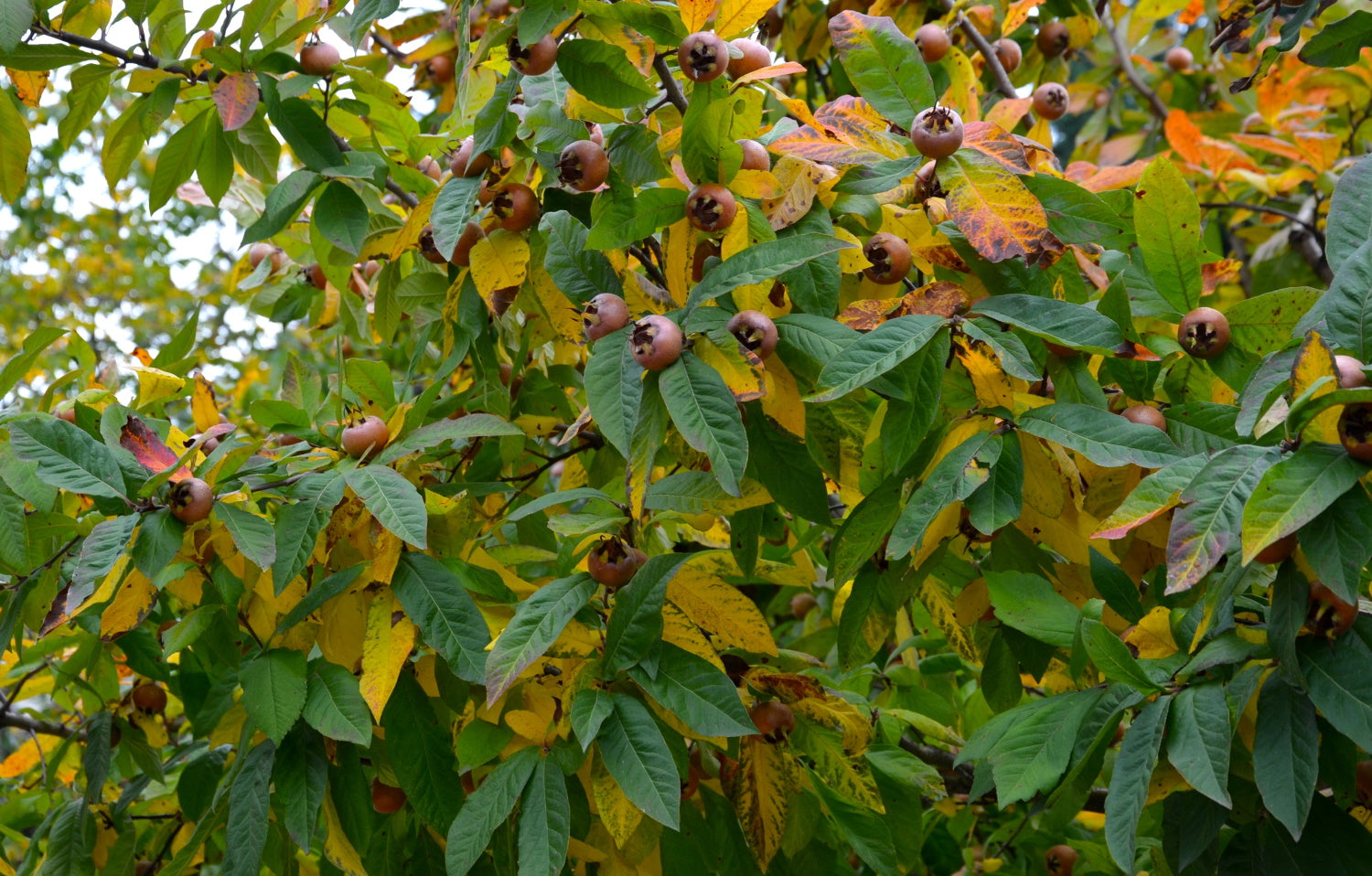
Fruit Trees
by Arundel Arboretum on Dec 12, 2022
Mespilus germanica ‘Nottingham’ – Medlar
Mespilus germanica ‘Nottingham’ is a variety of medlar. The tree has an ornamental habit with twisting stems and dark green foliage. It produces white flowers in the spring. The fruit has an apple\pear flavour. Mespilus germanica ‘Nottingham’ fruit will be ready in the autumn, but it will be hard and sour. On smaller trees, it is wise to leave the fruit in situ and they will naturally mellow to a dark brown colour and the flesh will soften. On larger trees, it is recommended to pick the fruits and store them until they ripen.
The fruits are ripe when they are squeezed and the flesh is revealed looking like apple sauce. Mespilus germanica ‘Nottingham’ can also be used for making sauces, jellies and even marmalade.
Mespilus germanica – Medlar
Mespilus germanica is a small deciduous medlar tree with long leathery leaves, which turn golden yellow\brown in the autumn. It produces white flowers in the summer.
Mespilus germanica fruits resemble small apples, which are hollow at one end. They are hard and bitter, so the fruit should be eaten when they have softened (bletted), preferably after a frost.
A popular fruit historically as a fruit that could be consumed during the winter months. The fruits can be made into preserves and jellies.
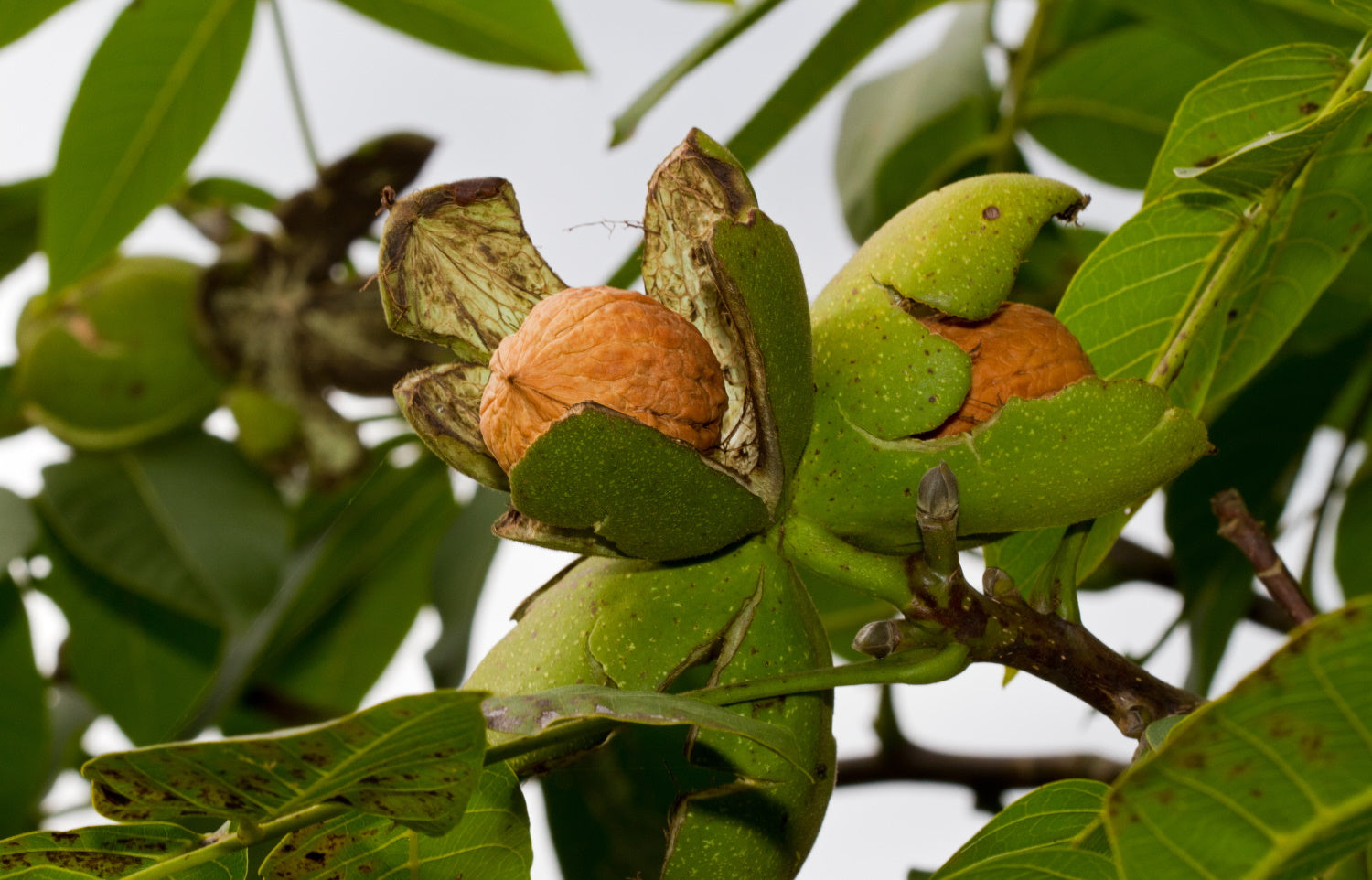
Fruit Trees
by Arundel Arboretum on Dec 12, 2022
Juglans regia is a medium sized, round headed deciduous tree with spreading branches. The leaves are large and oblong in shape, and appear in late spring\early summer. The young shoots are orange-brown before turning green. They produce an aromatic aroma when bruised. Juglans regia produce male catkins, which can be up to 10cm long. The fruits are green with an edible creamy white kernel.

Fruit Trees
by Arundel Arboretum on Dec 12, 2022
Ouillin’s Golden Gage
Ouillin’s Golden is a gage like plum.. It produces large, round fruit which are golden-yellow and spotted either green or brown. The flesh is transparent yellow. It has an upright vigorous growth habit. Ouillin’s Golden Gage is self-fertile and is in Pollination Group C. The period of use is mid-August.
Old Greengage
Old Greengage has a fairly plain appearance, producing fairly small pale green fruits, which turn slightly yellow when ripe. Old Greengage has an exceptional flavour, especially when eaten fresh. It is tender, sweet and juicy, although not a heavy cropper. Whilst it is a self-fertile variety, pollination is improved if you have a reliable cropper alongside e.g. Oullins Golden Gage.
Cambridge Gage
Cambridge gage produces small fruit which are yellow-green and flushed with red. The flesh is yellowish-green, juicy and the flavour is very good. It has a vigorous growth habit, but cannot withstand cold areas. Cambridge Gage is partly self-fertile and is in Pollination Group C. The period of use is early September.
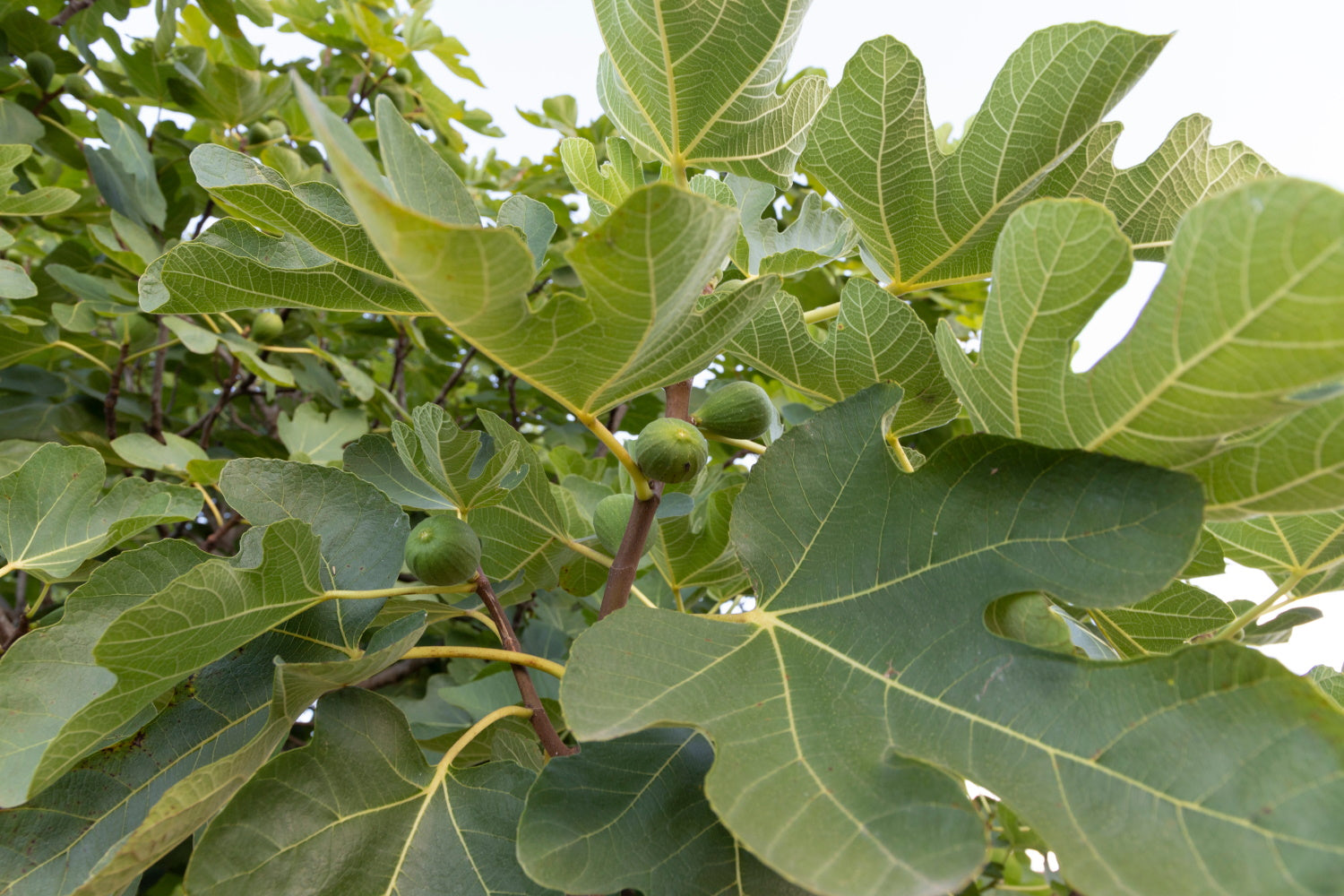
Fruit Trees
by Arundel Arboretum on Dec 12, 2022
Ficus carica ‘Brown Turkey’
Ficus carica ‘Brown Turkey’ is a large, deciduous shrub. It has deeply lobed leaves and produces small flowers which are followed by medium-large fruits with a brownish-red skin. The red flesh of Ficus carica ‘Brown Turkey’ is rich and juicy. It is suitable for growing outdoors or under glass. In a hot summer or under glass it is possible to get a second crop of fruit. It is a reliable and heavy cropper. It can be grown in full sun in a sheltered position. The fruits are ready between August-September.
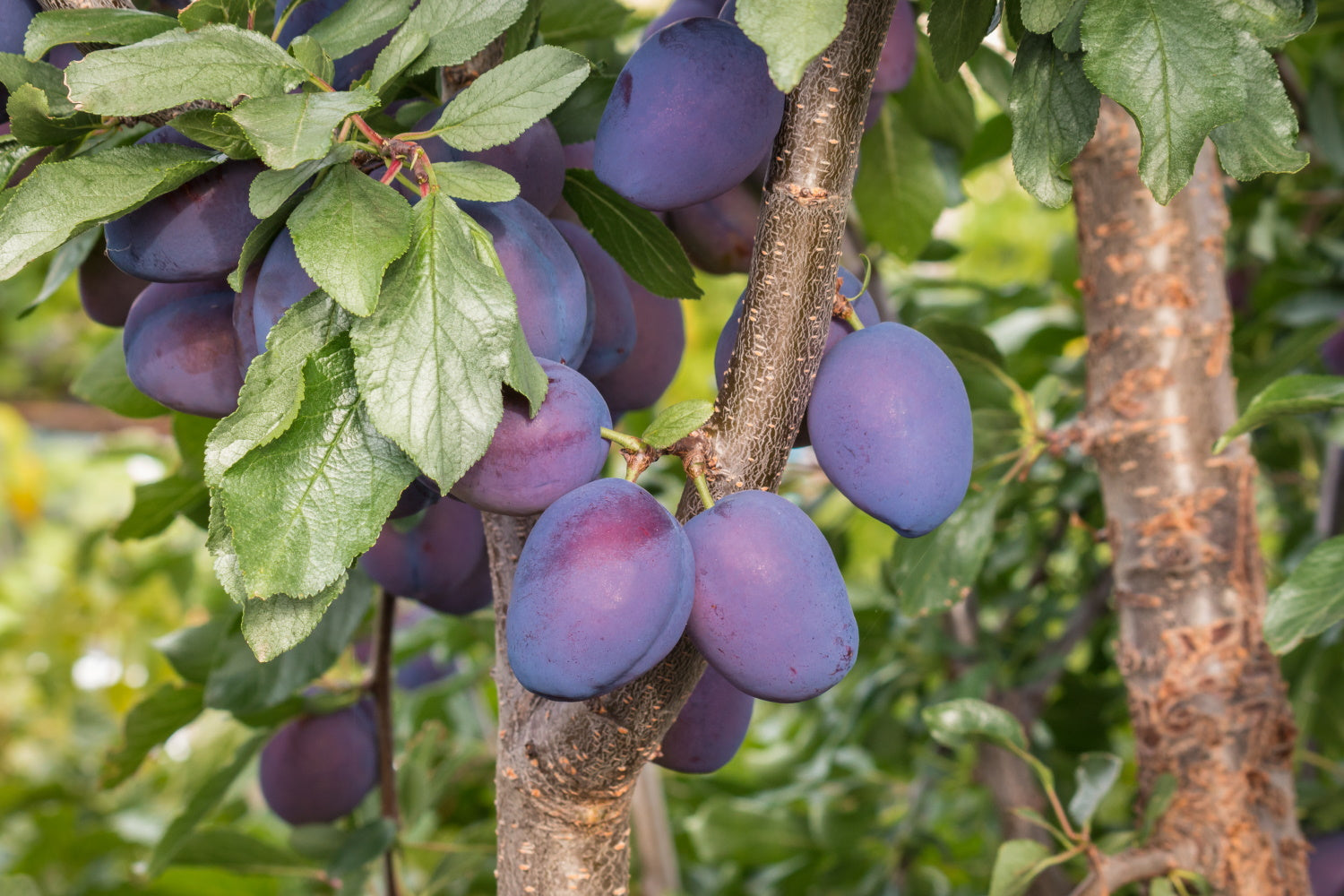
Fruit Trees
by Arundel Arboretum on Dec 12, 2022
Shropshire Prune
The Shropshire Prune damson is classed as the classic damson due to its flavour. Shropshire Prune produces radiant purple fruits ideally suited to cooking – producing a delicious flavour. It can also be used for jams and compote. Shropshire Prune is self-fertile and its small fruits are available from September.
Merryweather
The Merryweather damson produces large fruits with a blue-black skin. The flesh is yellow, juicy, acidic but hard. It is an excellent all-round performer. Merryweather damson is self-fertile and in Pollination Group B. The period of use is late September.
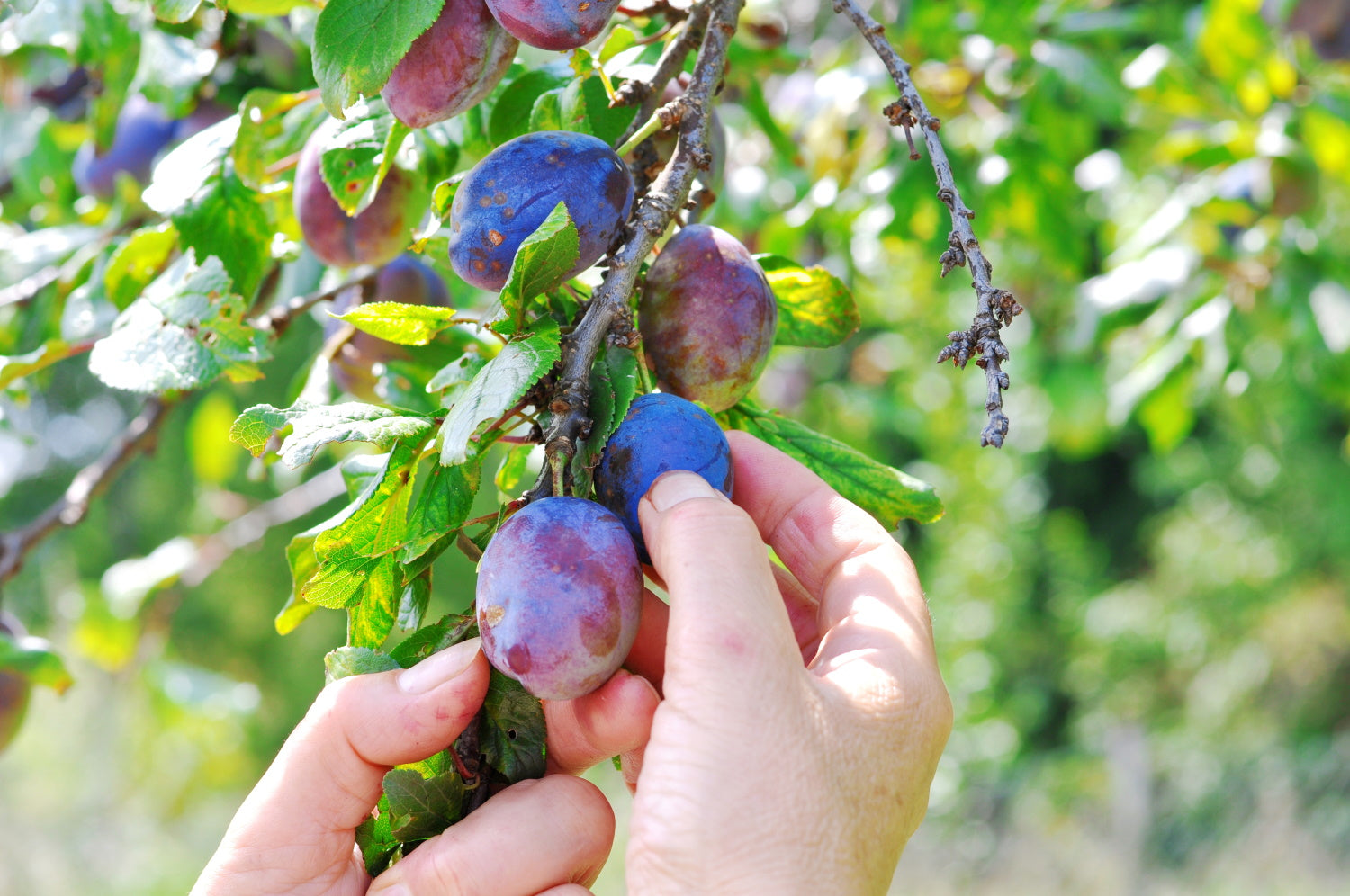
Fruit Trees
by Arundel Arboretum on Dec 10, 2022
Victoria
The Victoria plum is probably the most popular plum, producing large fruits suitable for eating and cooking. It has yellow-green flesh. It is a reliable and heavy cropper, but thinning is often essential. It has pale red skin. The Victoria has a poor resistance to disease. Its period of use is late August. It is self-fertile and comes under Pollination Group B.
Stanley
Stanley plums are firm fruits with a sweet flavour. It is a self-fertile variety on a St. Julien A rootstock. Stanley fruit has orange-yellow flesh underneath violet-blue skins. The flowers usually appear fairly late, so they are less susceptible to frost damage. Stanely can reach heights of between 12′ – 15′ if left unpruned, but can be kept to a height of 6′ – 8′. Stanley is a good nectar source for bees and other wildlife. The picking time is September.
Santa Rosa
Santa Rosa plums are dual purpose plums, being ideal for eating and cooking, with a good flavour. Santa Rosa are medium sized plums with pale red skins and green\yellow flesh. It is a self fertile variety. It has a vigorous upright growth habit. The fruits are ready in late August/early September.
Opal
Opal dessert plums produce a medium size fruit, with a reddish-purple skin colour. The flesh is yellow and comes away from the stone easily. The flavour has a gage-like taste and is sweet. It is easy to manage, but the birds love the buds! It is self-fertile and in Pollination Group B. Opal is a good, heavy cropper, and generally has a good resistance to disease. The period of use is late July.
Marjorie’s Seedling
Marjorie’s Seedling plum is an excellent choice if you would like a plum that can be used for cooking and eating. It produces large fruits with purple skin. Marjorie’s Seedling is oval in shape with yellow flesh. It has an upright growth which is vigorous. The blossom season is late enough so can miss the frosts. Its period of use is late September. It is self-fertile and comes under Pollination Group C.
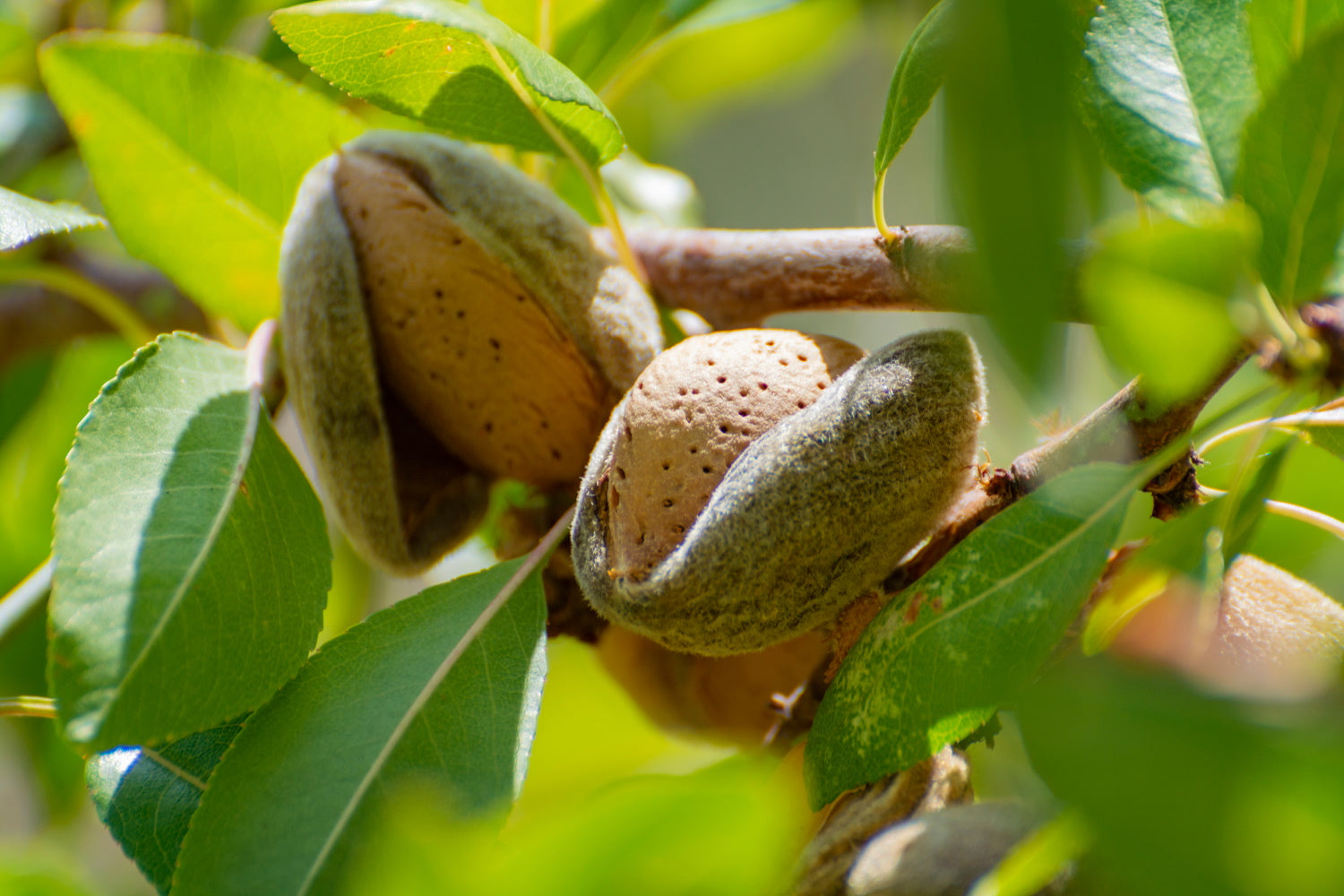
Fruit Trees
by Arundel Arboretum on Dec 09, 2022
Prunus dulcis is a small deciduous tree, which has the added feature of producing almond nuts in the autumn. In spring, Prunus dulcis produces beautiful single and double pink flowers which are followed by bright green leaves which are slightly serrated around their edges. The leaves turn yellow and orange in the autumn. Prunus dulcis prefers a well drained, reasonably fertile soil. With an eventual height of up to 7m, it is a perfect choice for a small garden.
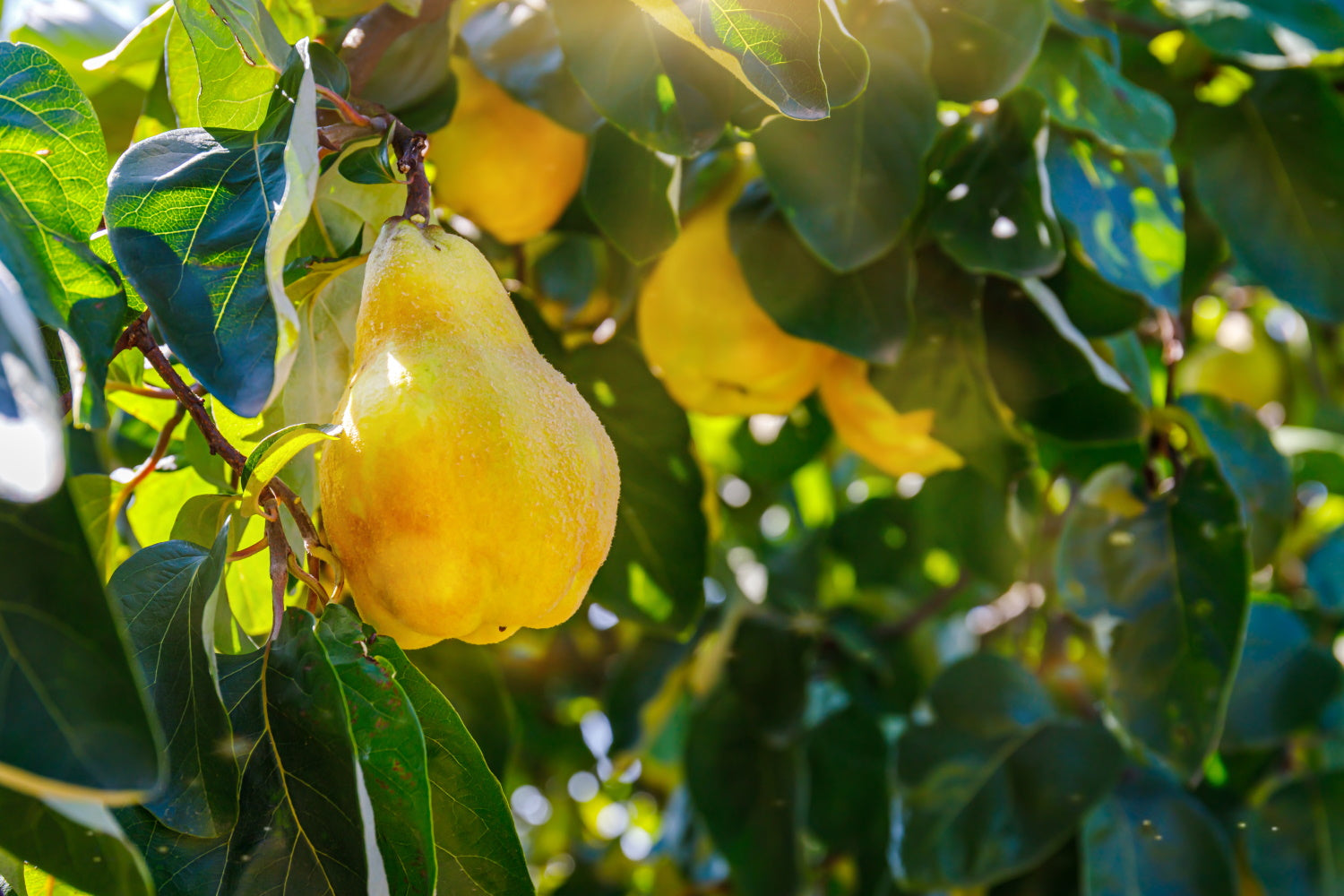
Fruit Trees
by Arundel Arboretum on Dec 06, 2022
Vranja quince is one of the most popular varieties grown in the UK. It produces a large, pear shaped, yellow fruit. The tree has a spreading habit with moderate growth. Vranja are easy to grow in southern UK or against a south facing wall, although it is a light cropper. The fruit produces an excellent flavour which is ideal for making tasty jams, jellies and marmalades. The picking time for the fruit is October.


